238 Must Read Books Once in a Lifetime
Me Talk Pretty One Day
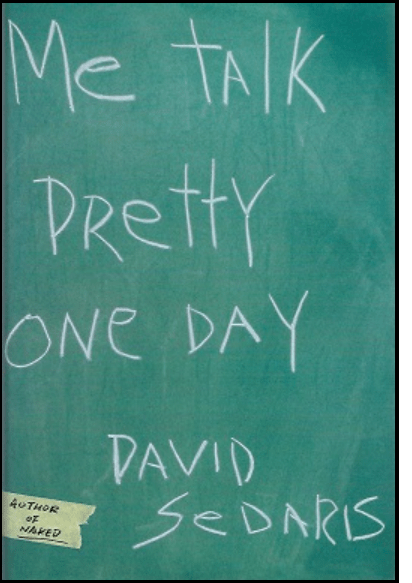
Me Talk Pretty One Day, published in 2000, is a bestselling collection of essays by American humorist David Sedaris. The book is separated into two parts. The first part consists of essays about Sedaris’s life before his move to Normandy, France, including his upbringing in suburban Raleigh, North Carolina, his time working odd jobs in New York City, and a visit to New York from a childhood friend and her bumpkinish girlfriend. The second section, “Deux”, tells of Sedaris’s move to Normandy with his partner Hugh, often drawing humor from his efforts to live in France without speaking the French language and his frustrated attempts to learn it.
Read More About Me Talk Pretty One Day / Source
Sigmund Freud
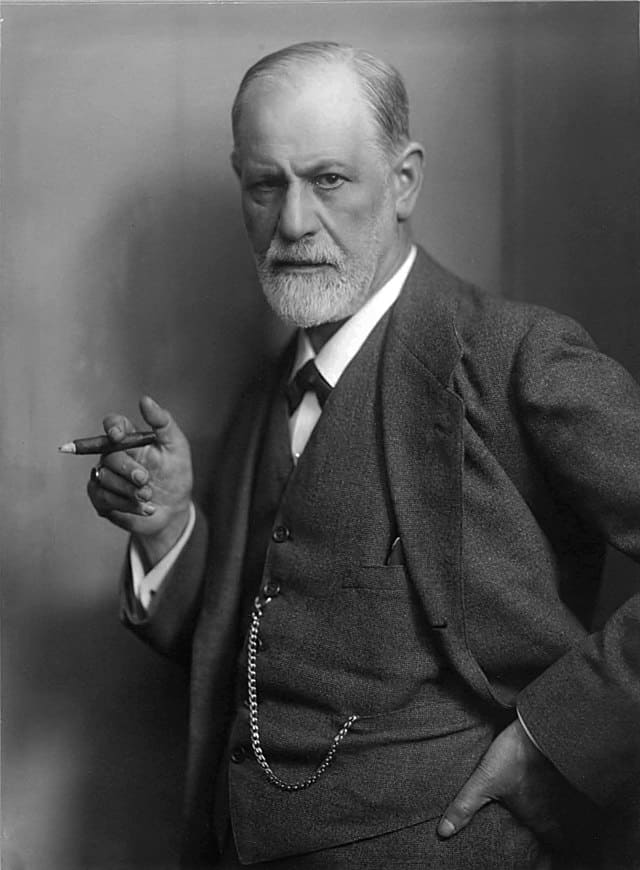
Sigmund Freud ( FROYD, 6 May 1856 – 23 September 1939) was an Austrian neurologist and the founder of psychoanalysis, a clinical method for treating psychopathology through dialogue between a patient and a psychoanalyst.Freud was born to Galician Jewish parents in the Moravian town of Freiberg, in the Austrian Empire. He qualified as a doctor of medicine in 1881 at the University of Vienna. Upon completing his habilitation in 1885, he was appointed a docent in neuropathology and became an affiliated professor in 1902. Freud lived and worked in Vienna, having set up his clinical practice there in 1886. In 1938, Freud left Austria to escape Nazi persecution. He died in exile in the United Kingdom in 1939.
In founding psychoanalysis, Freud developed therapeutic techniques such as the use of free association and discovered transference, establishing its central role in the analytic process. Freud’s redefinition of sexuality to include its infantile forms led him to formulate the Oedipus complex as the central tenet of psychoanalytical theory.
Read More About Sigmund Freud / Source
Nineteen Eighty-Four
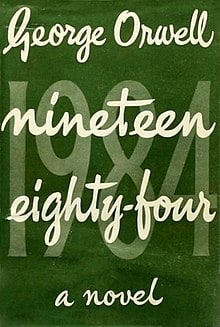
Nineteen Eighty-Four: A Novel, often referred to as 1984, is a dystopian social science fiction novel by the English novelist George Orwell (the pen name of Eric Arthur Blair). It was published on 8 June 1949 by Secker & Warburg as Orwell’s ninth and final book completed in his lifetime. Thematically, Nineteen Eighty-Four centres on the consequences of totalitarianism, mass surveillance, and repressive regimentation of persons and behaviours within society. Orwell, himself a democratic socialist, modelled the authoritarian government in the novel after Stalinist Russia. More broadly, the novel examines the role of truth and facts within politics and the ways in which they are manipulated.
The story takes place in an imagined future, the year 1984, when much of the world has fallen victim to perpetual war, omnipresent government surveillance, historical negationism, and propaganda. Great Britain, known as Airstrip One, has become a province of a totalitarian superstate named Oceania that is ruled by the Party who employ the Thought Police to persecute individuality and independent thinking. Big Brother, the leader of the Party, enjoys an intense cult of personality despite the fact that he may not even exist. The protagonist, Winston Smith, is a diligent and skillful rank-and-file worker and Outer Party member who secretly hates the Party and dreams of rebellion. He enters into a forbidden relationship with a colleague, Julia, and starts to remember what life was like before the Party came to power.
Nineteen Eighty-Four has become a classic literary example of political and dystopian fiction. It also popularised the term “Orwellian” as an adjective, with many terms used in the novel entering common usage, including “Big Brother”, “doublethink”, “Thought Police”, “thoughtcrime”, “Newspeak”, “memory hole”, “2 + 2 = 5”, “proles”, “Two Minutes Hate”, “telescreen”, and “Room 101”. Time included it on its 100 best English-language novels from 1923 to 2005. It was placed on the Modern Library’s 100 Best Novels, reaching No. 13 on the editors’ list and No. 6 on the readers’ list. In 2003, the novel was listed at No. 8 on The Big Read survey by the BBC. Parallels have been drawn between the novel’s subject matter and real life instances of totalitarianism, mass surveillance, and violations of freedom of expression among other themes.
Read More About Nineteen Eighty-Four / Source
A Brief History of Time
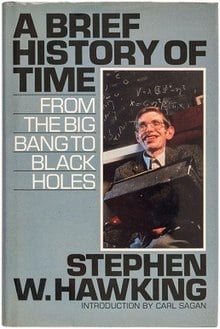
A Brief History of Time: From the Big Bang to Black Holes is a book on theoretical cosmology by English physicist Stephen Hawking. It was first published in 1988. Hawking wrote the book for readers who had no prior knowledge of physics and people who are interested in learning something new about interesting subjects.
In A Brief History of Time, Hawking writes in non-technical terms about the structure, origin, development and eventual fate of the Universe, which is the object of study of astronomy and modern physics. He talks about basic concepts like space and time, basic building blocks that make up the Universe (such as quarks) and the fundamental forces that govern it (such as gravity). He writes about cosmological phenomena such as the Big Bang and black holes.
Read More About A Brief History of Time / Source
A Clockwork Orange (novel)
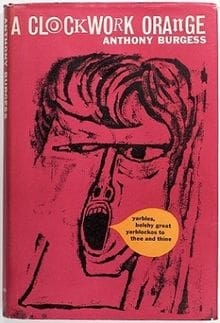
A Clockwork Orange is a dystopian satirical black comedy novel by English writer Anthony Burgess, published in 1962. It is set in a near-future society that has a youth subculture of extreme violence. The teenage protagonist, Alex, narrates his violent exploits and his experiences with state authorities intent on reforming him. The book is partially written in a Russian-influenced argot called “Nadsat”, which takes its name from the Russian suffix that is equivalent to ‘-teen’ in English. According to Burgess, it was a jeu d’esprit written in just three weeks.In 2005, A Clockwork Orange was included on Time magazine’s list of the 100 best English-language novels written since 1923, and it was named by Modern Library and its readers as one of the 100 best English-language novels of the 20th century. The original manuscript of the book has been kept at McMaster University’s William Ready Division of Archives and Research Collections in Hamilton, Ontario, Canada since the institution purchased the documents in 1971.
It is considered one of the most influential dystopian books.
Read More About A Clockwork Orange (novel) / Source
A Heartbreaking Work of Staggering Genius
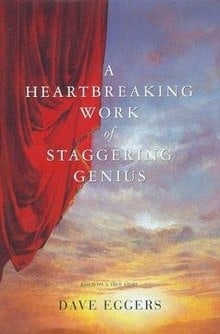
A Heartbreaking Work of Staggering Genius is a memoir by Dave Eggers released in 2000. It chronicles his stewardship of his younger brother Christopher “Toph” Eggers following the cancer-related deaths of his parents.
The book was a commercial and critical success, reaching number one on The New York Times bestseller list and being nominated as a finalist for the Pulitzer Prize for General Non-Fiction. Time magazine and several newspapers dubbed it “The Best Book of the Year”. Critics praised the book for its wild, vibrant prose, and it was described as “big, daring [and] manic-depressive” by The New York Times. The book was chosen as the 12th best book of the decade by The Times.
Read More About A Heartbreaking Work of Staggering Genius / Source
A House for Mr Biswas
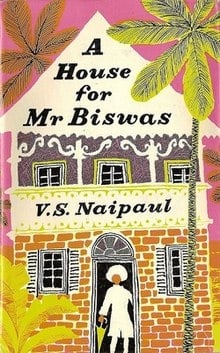
A House for Mr Biswas is a 1961 novel by V. S. Naipaul, significant as Naipaul’s first work to achieve acclaim worldwide. It is the story of Mohun Biswas, a Hindu Indo-Trinidadian who continually strives for success and mostly fails, who marries into the influential Tulsi family only to find himself dominated by it, and who finally sets the goal of owning his own house. It relies on some biographical elements from the experience of the author’s father, and views a colonial world sharply with postcolonial perspectives.
In 1998, the Modern Library ranked A House for Mr Biswas number 72 on its list of the 100 best English-language novels of the 20th century. Time magazine included the novel in its “TIME 100 Best English-language Novels from 1923 to 2005”.
Read More About A House for Mr Biswas / Source
A Long Way Gone
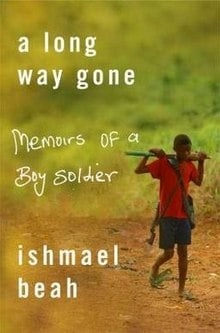
A Long Way Gone: Memoirs of a Boy Soldier (2007) is a memoir written by Ishmael Beah, an author from Sierra Leone. The book is a firsthand account of Beah’s time as a child soldier during the civil war in Sierra Leone (1990s). Beah was 12 years old when he fled his village after it was attacked by rebels, and he wandered the war-filled country until brainwashed by an army unit that forced him to use guns and drugs. By 13, he had perpetrated and witnessed numerous acts of violence. Three years later, UNICEF rescued him from the unit and put him into a rehabilitation program that helped him find his uncle, who would eventually adopt him. After his return to civilian life he began traveling the United States recounting his story.
Read More About A Long Way Gone / Source
A Passage to India
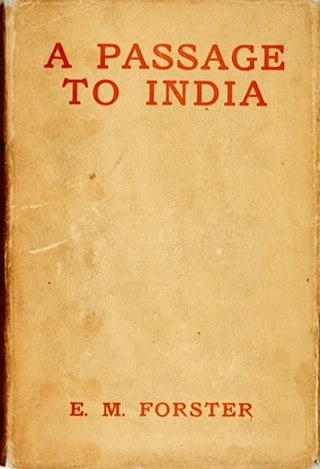
A Passage to India is a 1924 novel by English author E. M. Forster set against the backdrop of the British Raj and the Indian independence movement in the 1920s. It was selected as one of the 100 great works of 20th century English literature by the Modern Library and won the 1924 James Tait Black Memorial Prize for fiction. Time magazine included the novel in its “All Time 100 Novels” list. The novel is based on Forster’s experiences in India, deriving the title from Walt Whitman’s 1870 poem “Passage to India” in Leaves of Grass.The story revolves around four characters: Dr. Aziz, his British friend Mr. Cyril Fielding, Mrs. Moore, and Miss Adela Quested. During a trip to the fictitious Marabar Caves (modeled on the Barabar Caves of Bihar), Adela thinks she finds herself alone with Dr. Aziz in one of the caves (when in fact he is in an entirely different cave), and subsequently panics and flees; it is assumed that Dr. Aziz has attempted to assault her. Aziz’s trial, and its run-up and aftermath, bring to a boil the common racial tensions and prejudices between Indians and the British who rule India.
Read More About A Passage to India / Source
A Series of Unfortunate Events

A Series of Unfortunate Events is a series of thirteen children’s novels written by American author Daniel Handler under the pen name Lemony Snicket. The books follow the turbulent lives of Violet, Klaus, and Sunny Baudelaire. After their parents’ death in a fire, the children are placed in the custody of a murderous relative, Count Olaf, who attempts to steal their inheritance and, later, orchestrates numerous disasters with the help of his accomplices as the children attempt to flee. As the plot progresses, the Baudelaires gradually confront further mysteries surrounding their family and deep conspiracies involving a secret society known as V.F.D., with connections to Olaf, their parents, and many other relatives. The series is narrated by Lemony Snicket, who dedicates each of his works to his deceased love interest, Beatrice, and often attempts to dissuade the reader from reading the Baudelaires’ story.
Read More About A Series of Unfortunate Events / Source
A Tale of Two Cities

A Tale of Two Cities is an 1859 historical novel by Charles Dickens, set in London and Paris before and during the French Revolution. The novel tells the story of the French Doctor Manette, his 18-year-long imprisonment in the Bastille in Paris and his release to live in London with his daughter Lucie, whom he had never met. The story is set against the conditions that led up to the French Revolution and the Reign of Terror.
Read More About A Tale of Two Cities / Source
A Thousand Splendid Suns

A Thousand Splendid Suns is a 2007 novel by Afghan-American author Khaled Hosseini, following his bestselling 2003 debut The Kite Runner. Mariam, an illegitimate teenager from Herat, is forced to marry a shoemaker from Kabul after a family tragedy. Laila, born a generation later, lives a relatively privileged life, but her life intersects with Mariam’s when a similar tragedy forces her to accept a marriage proposal from Mariam’s husband.
Read More About A Thousand Splendid Suns / Source
A Visit from the Goon Squad
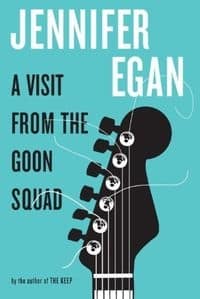
A Visit from the Goon Squad is a 2011 Pulitzer Prize-winning work of fiction by American author Jennifer Egan. The book is a set of thirteen interrelated stories with a large set of characters all connected to Bennie Salazar, a record company executive, and his assistant, Sasha. The book centers on the mostly self-destructive characters, who, as they grow older, are sent in unforeseen, and sometimes unusual, directions by life. The stories shift back and forth in time from the 1970s to the present and into the near future. Many of the stories take place in and around New York City, although other settings include San Francisco, Italy, and Kenya.
In addition to winning the Pulitzer Prize, the book also won the National Book Critics Circle Award for fiction in 2010. The novel received mostly positive reviews from critics and later appeared in many lists of the best fiction works of the 2010s.
Read More About A Visit from the Goon Squad / Source
A Wrinkle in Time
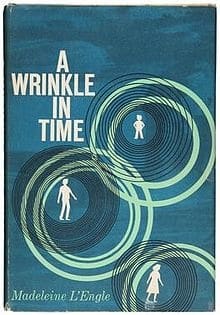
A Wrinkle in Time is a young adult novel written by American author Madeleine L’Engle. First published in 1962, the book has won the Newbery Medal, the Sequoyah Book Award, the Lewis Carroll Shelf Award, and was runner-up for the Hans Christian Andersen Award. The main characters—Meg Murry, Charles Wallace Murry, and Calvin O’Keefe—embark on a journey through space and time, from universe to universe, as they endeavor to save the Murrys’ father and the world. The novel offers a glimpse into the war between light and darkness, and good and evil, as the young characters mature into adolescents on their journey. The novel wrestles with questions of spirituality and purpose, as the characters are often thrown into conflicts of love, divinity, and goodness. It is the first book in L’Engle’s Time Quintet, which follows the Murrys and Calvin O’Keefe.
L’Engle modeled the Murry family on her own. Scholar Bernice E. Cullinan noted that L’Engle created characters who “share common joy with a mixed fantasy and science fiction setting.”
Read More About A Wrinkle in Time / Source
Alice's Adventures in Wonderland
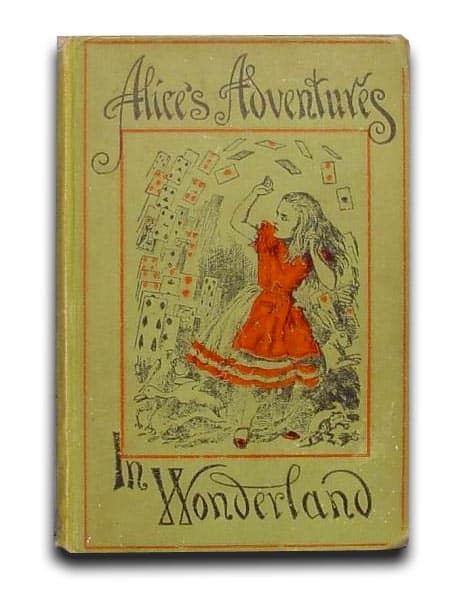
Alice’s Adventures in Wonderland (commonly shortened to Alice in Wonderland) is an 1865 novel by English author Lewis Carroll (the pseudonym of Charles Dodgson). It tells of a young girl named Alice, who falls through a rabbit hole into a subterranean fantasy world populated by peculiar, anthropomorphic creatures. It is considered to be one of the best examples of the literary nonsense genre. The tale plays with logic, giving the story lasting popularity with adults as well as with children.
Read More About Alice's Adventures in Wonderland / Source
All Quiet on the Western Front
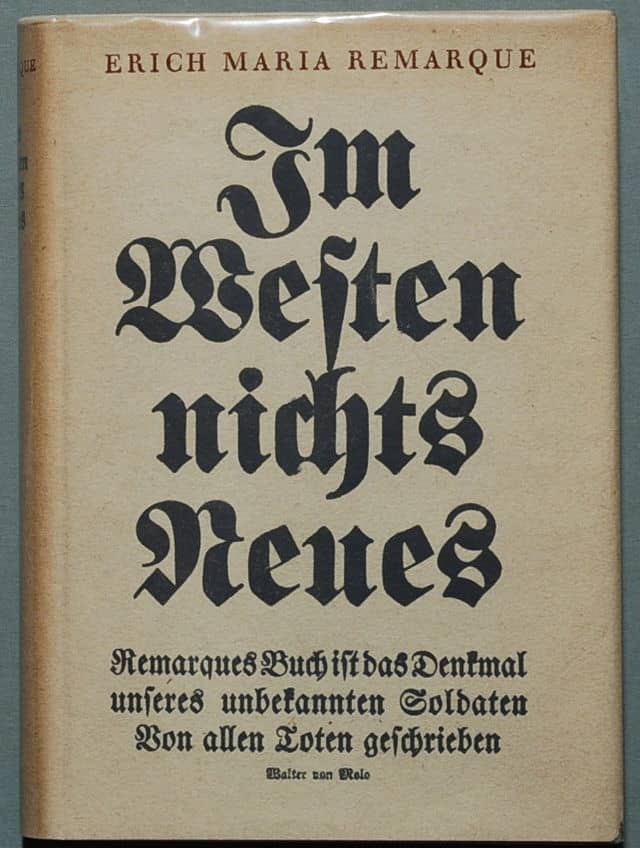
All Quiet on the Western Front (German: Im Westen nichts Neues, lit. ’Nothing New in the West’) is a novel by Erich Maria Remarque, a German veteran of World War I. The book describes the German soldiers’ extreme physical and mental stress during the war, and the detachment from civilian life felt by many of these soldiers upon returning home from the front.
The novel was first published in November and December 1928 in the German newspaper Vossische Zeitung and in book form in late January 1929. The book and its sequel, The Road Back (1930), were among the books banned and burned in Nazi Germany. All Quiet on the Western Front sold 2.5 million copies in 22 languages in its first 18 months in print.In 1930, the book was adapted as an Academy Award-winning film of the same name, directed by Lewis Milestone. It was adapted again in 1979 by Delbert Mann, this time as a television film starring Richard Thomas and Ernest Borgnine.
Read More About All Quiet on the Western Front / Source
All the President's Men
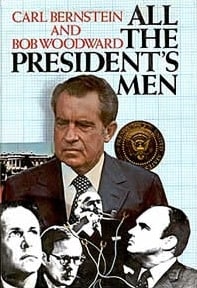
All the President’s Men is a 1974 non-fiction book by Carl Bernstein and Bob Woodward, two of the journalists who investigated the June 1972 break-in at the Watergate Office Building and the resultant political scandal for The Washington Post. The book chronicles the investigative reporting of Woodward and Bernstein from Woodward’s initial report on the Watergate break-in through the resignations of Nixon Administration officials H. R. Haldeman and John Ehrlichman in April 1973, and the revelation of the Oval Office Watergate tapes by Alexander Butterfield three months later. It relates the events behind the major stories the duo wrote for the Post, naming some sources who had previously refused to be identified for their initial articles, notably Hugh Sloan. It also gives detailed accounts of Woodward’s secret meetings with his source Deep Throat, whose identity was kept hidden for over 30 years. Gene Roberts, the former executive editor of The Philadelphia Inquirer and former managing editor of The New York Times, has called the work of Woodward and Bernstein “maybe the single greatest reporting effort of all time.”A film adaptation, produced by Robert Redford, starring Redford and Dustin Hoffman as Woodward and Bernstein, respectively, was released in 1976. That same year, a sequel to the book, The Final Days, was published, which chronicled the last months of Richard Nixon’s presidency, starting around the time their previous book ended.
Read More About All the President's Men / Source
American Psycho
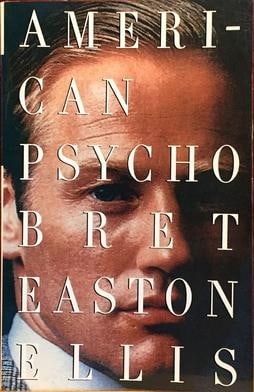
American Psycho is a novel by Bret Easton Ellis, published in 1991. The story is told in the first person by Patrick Bateman, a serial killer and Manhattan investment banker. Alison Kelly of The Observer notes that while “some countries [deem it] so potentially disturbing that it can only be sold shrink-wrapped”, “critics rave about it” and “academics revel in its transgressive and postmodern qualities”.
Read More About American Psycho / Source
And Then There Were None
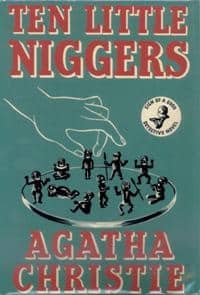
And Then There Were None is a mystery novel by the English writer Agatha Christie, described by her as the most difficult of her books to write. It was first published in the United Kingdom by the Collins Crime Club on 6 November 1939, as Ten Little Niggers, after the children’s counting rhyme and minstrel song, which serves as a major element of the plot. A US edition was released in January 1940 with the title And Then There Were None, which is taken from the last five words of the song. All successive American reprints and adaptations use that title, except for the Pocket Books paperbacks published between 1964 and 1986, which appeared under the title Ten Little Indians.
The book is the world’s best-selling mystery, and with over 100 million copies sold is one of the best-selling books of all time. Freelance author Ed Grabianowski, writing for the infotainment website HowStuffWorks, lists the novel as the sixth best-selling title (any language, including reference works).
Read More About And Then There Were None / Source
Angela's Ashes
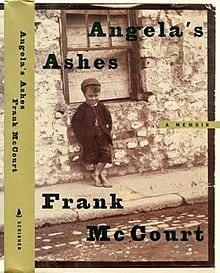
Angela’s Ashes: A Memoir is a 1996 memoir by the Irish-American author Frank McCourt, with various anecdotes and stories of his childhood. It details his very early childhood in Brooklyn, New York, US but focuses primarily on his life in Limerick, Ireland. It also includes his struggles with poverty and his father’s alcoholism. The book was published in 1996 and won the 1997 Pulitzer Prize for Biography or Autobiography. A sequel, ‘Tis, was published in 1999, followed by Teacher Man in 2005.
Read More About Angela's Ashes / Source
Animal Farm
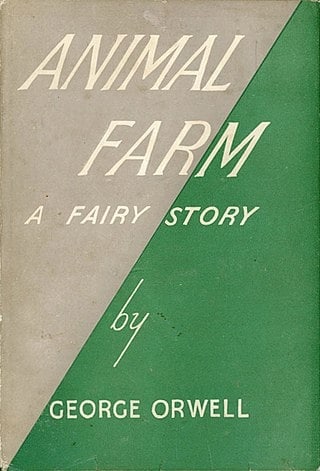
Animal Farm is an allegorical novella by George Orwell, first published in England on 17 August 1945. The book tells the story of a group of farm animals who rebel against their human farmer, hoping to create a society where the animals can be equal, free, and happy. Ultimately, however, the rebellion is betrayed, and the farm ends up in a state as bad as it was before, under the dictatorship of a pig named Napoleon.
According to Orwell, the fable reflects events leading up to the Russian Revolution of 1917 and then on into the Stalinist era of the Soviet Union. Orwell, a democratic socialist, was a critic of Joseph Stalin and hostile to Moscow-directed Stalinism, an attitude that was critically shaped by his experiences during the May Days conflicts between the POUM and Stalinist forces during the Spanish Civil War. The Soviet Union had become a totalitarian autocracy built upon a cult of personality while engaging in the practice of mass incarcerations and secret summary trials and executions. In a letter to Yvonne Davet, Orwell described Animal Farm as a satirical tale against Stalin (“un conte satirique contre Staline”), and in his essay “Why I Write” (1946), wrote that Animal Farm was the first book in which he tried, with full consciousness of what he was doing, “to fuse political purpose and artistic purpose into one whole”.The original title was Animal Farm: A Fairy Story, but U.S. publishers dropped the subtitle when it was published in 1946, and only one of the translations during Orwell’s lifetime kept it. Other titular variations include subtitles like “A Satire” and “A Contemporary Satire”. Orwell suggested the title Union des républiques socialistes animales for the French translation, which abbreviates to URSA, the Latin word for “bear”, a symbol of Russia. It also played on the French name of the Soviet Union, Union des républiques socialistes soviétiques.Orwell wrote the book between November 1943 and February 1944, when the United Kingdom was in its wartime alliance with the Soviet Union against Nazi Germany, and the British intelligentsia held Stalin in high esteem, a phenomenon Orwell hated. The manuscript was initially rejected by a number of British and American publishers, including one of Orwell’s own, Victor Gollancz, which delayed its publication. It became a great commercial success when it did appear partly because international relations were transformed as the wartime alliance gave way to the Cold War.Time magazine chose the book as one of the 100 best English-language novels (1923 to 2005); it also featured at number 31 on the Modern Library List of Best 20th-Century Novels, and number 46 on the BBC’s The Big Read poll. It won a Retrospective Hugo Award in 1996 and is included in the Great Books of the Western World selection.
Read More About Animal Farm / Source
Anna Karenina
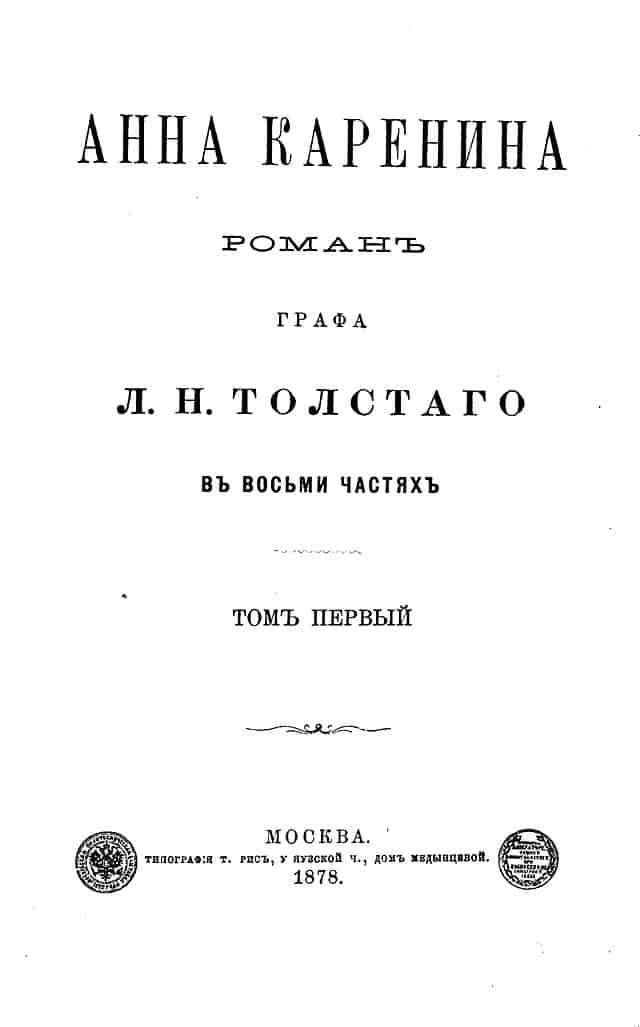
Anna Karenina (Russian: «Анна Каренина», IPA: [ˈanːə kɐˈrʲenʲɪnə]) is a novel by the Russian author Leo Tolstoy, first published in book form in 1878. Many writers consider it the greatest work of literature ever written, and Tolstoy himself called it his first true novel. It was initially released in serial installments from 1873 to 1877 in the periodical The Russian Messenger.
A complex novel in eight parts, with more than a dozen major characters, Anna Karenina is spread over more than 800 pages (depending on the translation and publisher), typically contained in two volumes. It deals with themes of betrayal, faith, family, marriage, Imperial Russian society, desire, and rural vs. city life. The story centers on an extramarital affair between Anna and dashing cavalry officer Count Alexei Kirillovich Vronsky that scandalizes the social circles of Saint Petersburg and forces the young lovers to flee to Italy in a search for happiness, but after they return to Russia, their lives further unravel.
Read More About Anna Karenina / Source
Anne of Green Gables

Anne of Green Gables is a 1908 novel by Canadian author Lucy Maud Montgomery (published as L.M. Montgomery). Written for all ages, it has been considered a classic children’s novel since the mid-twentieth century. Set in the late 19th century, the novel recounts the adventures of Anne Shirley, a 13-year-old orphan girl, who is mistakenly sent to two middle-aged siblings, Matthew and Marilla Cuthbert, who had originally intended to adopt a boy to help them on their farm in the fictional town of Avonlea in Prince Edward Island, Canada. The novel recounts how Anne makes her way through life with the Cuthberts, in school, and within the town.
Since its publication, Anne of Green Gables has been translated into at least 36 languages and has sold more than 50 million copies, making it one of the best selling books worldwide. The first in an anthology series, Montgomery wrote numerous sequels, and since her death, another sequel has been published, as well as an authorized prequel. The original book is taught to students around the world.The book has been adapted as films, made-for-television movies, and animated and live-action television series. Musicals and plays have also been created, with productions annually in Europe and Japan.
Read More About Anne of Green Gables / Source
Are You There God? It's Me, Margaret.
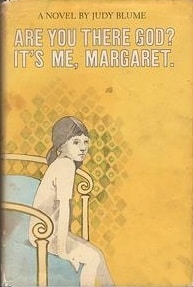
Are You There God? It’s Me, Margaret. is a 1970 book by Judy Blume, typically categorized as a young adult novel, about a sixth-grade girl who has grown up without a religious affiliation, due to her parents’ interfaith marriage. The novel explores her quest for a single religion, while confronting typical issues faced by early adolescent girls going through puberty, such as buying her first bra, having her menarche, and feeling attracted to certain boys. The novel has been frequently challenged since the 1980s for its frank discussions of sexual and religious topics.
Read More About Are You There God? It's Me, Margaret. / Source
As I Lay Dying
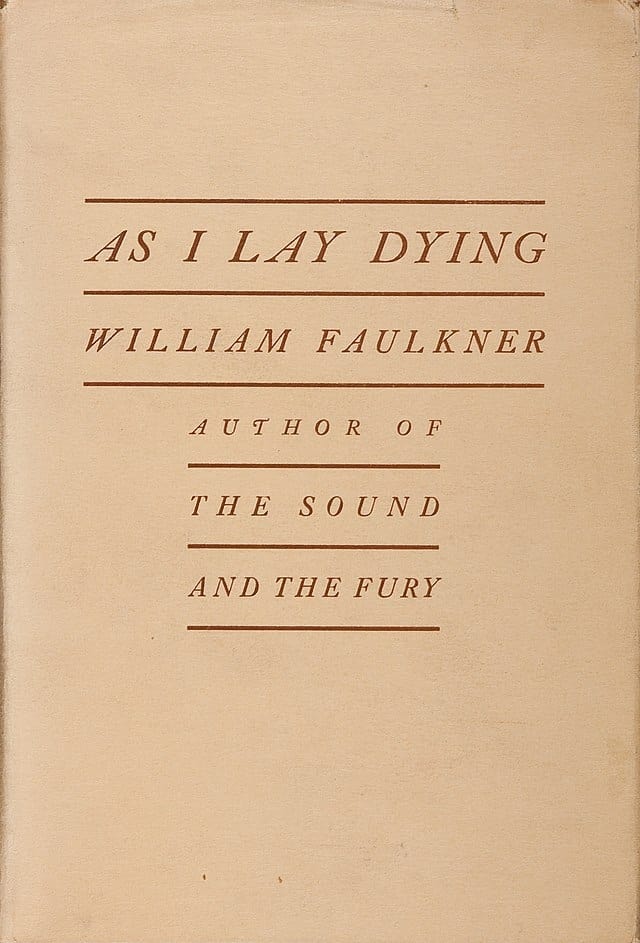
As I Lay Dying is a 1930 Southern Gothic novel by American author William Faulkner. Faulkner’s fifth novel, it is consistently ranked among the best novels of 20th-century literature. The title derives from Book XI of Homer’s Odyssey (William Marris’s 1925 translation), wherein Agamemnon tells Odysseus, “As I lay dying, the woman with the dog’s eyes would not close my eyes as I descended into Hades.”
The novel utilizes stream-of-consciousness writing technique, multiple narrators, and varying chapter lengths.
Read More About As I Lay Dying / Source
Atonement
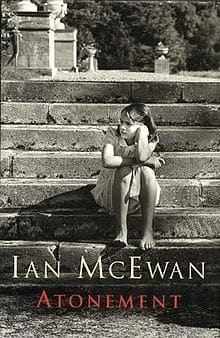
Atonement is a 2001 British metafiction novel written by Ian McEwan. Set in three time periods, 1935 England, Second World War England and France, and present-day England, it covers an upper-class girl’s half-innocent mistake that ruins lives, her adulthood in the shadow of that mistake, and a reflection on the nature of writing.
Widely regarded as one of McEwan’s best works, it was shortlisted for the 2001 Booker Prize for fiction. In 2010, TIME magazine named Atonement in its list of the 100 greatest English-language novels since 1923.In 2007, the book was adapted into a BAFTA and Academy Award-winning film of the same title, starring Saoirse Ronan, James McAvoy, and Keira Knightley, and directed by Joe Wright.
Read More About Atonement / Source
Bartleby, the Scrivener
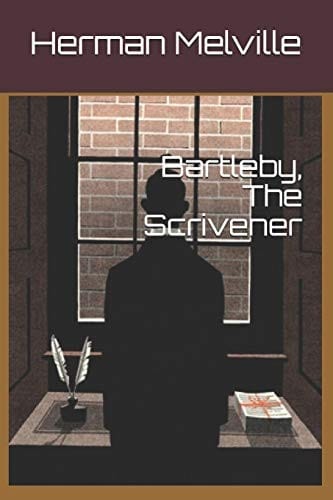
“Bartleby, the Scrivener: A Story of Wall Street” is a short story by the American writer Herman Melville, first serialized anonymously in two parts in the November and December 1853 issues of Putnam’s Magazine and later reprinted with minor textual alterations in his The Piazza Tales in 1856. In the story, a Wall Street lawyer hires a new clerk who, after an initial bout of hard work, refuses to make copies or do any other task required of him with the words “I would prefer not to.”
Numerous critical essays have been published about the story, which scholar Robert Milder describes as “unquestionably the masterpiece of the short fiction” in the Melville canon.
Read More About Bartleby, the Scrivener / Source
Beloved
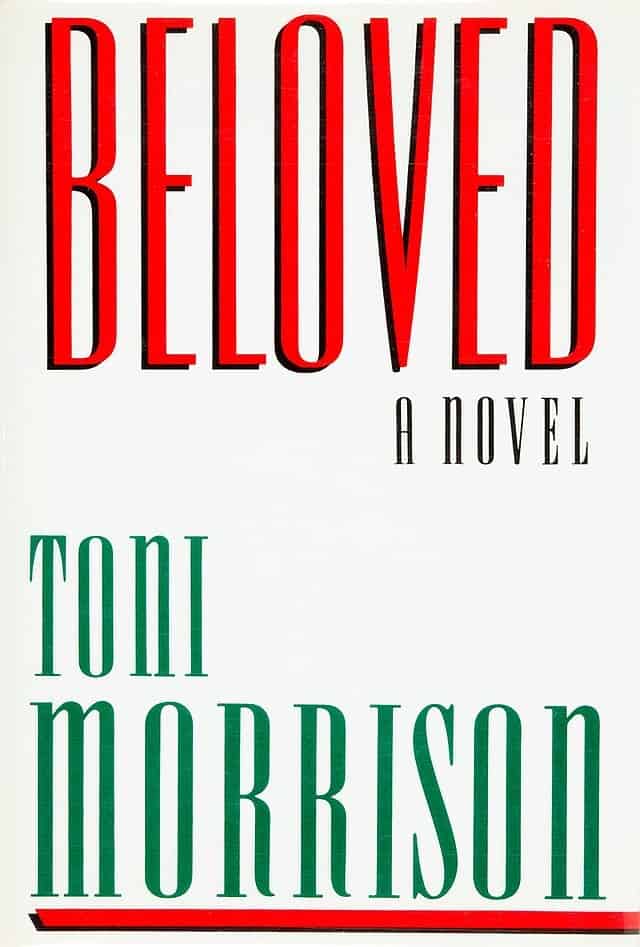
Beloved is a 1987 novel by the American writer Toni Morrison. Set after the American Civil War, it tells the story of a family of former slaves whose Cincinnati home is haunted by a malevolent spirit. Beloved is inspired by a true-life incident involving Margaret Garner, an escaped slave from Kentucky who fled to the free state of Ohio in 1856, but was captured in accordance with the Fugitive Slave Act of 1850. When U.S. marshals burst into the cabin where Garner and her husband had barricaded themselves, they found that she had killed her two-year-old daughter and was attempting to kill her other children to spare them from being returned to slavery.
Morrison had come across an account of Garner titled “A Visit to the Slave Mother who Killed Her Child” in an 1856 newspaper article published in the American Baptist, and reproduced in The Black Book, a miscellaneous compilation of black history and culture that Morrison edited in 1974.The novel won the Pulitzer Prize for Fiction in 1988 and was a finalist for the 1987 National Book Award. It was adapted as a 1998 movie of the same name, starring Oprah Winfrey. A survey of writers and literary critics compiled by The New York Times ranked it as the best work of American fiction from 1981 to 2006.
Read More About Beloved / Source
Birdsong
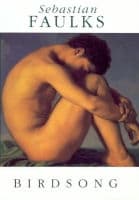
Birdsong is a 1993 war novel and family saga by the English author Sebastian Faulks. It is Faulks’s fourth novel. The plot follows two main characters living at different times: the first is Stephen Wraysford, a British soldier on the front line in Amiens during the First World War, and the second is his granddaughter, Elizabeth Benson, whose 1970s plotline follows her attempts to recover an understanding of Stephen’s experience of the war.
Faulks developed the novel to bring more public awareness to the experience of war remembered by WWI veterans. Most critics found this effort successful, commenting on how the novel, like many other WWI novels, thematically focuses on how the experience of trauma shapes individual psyches. Similarly, because of the parallel narratives WWI and 1970s Britain, the novel explores metahistorical questions about how to document and recover narratives about the past. Because of its genre, themes and writing style, the novel has been favourably compared to a number of other war novels, such as Ian McEwan’s Atonement and those in Pat Barker’s Regeneration Trilogy.
Birdsong is part of a loose trilogy of novels by Sebastian Faulks, alongside The Girl at the Lion d’Or and Charlotte Gray; the three are linked through location, history and several minor characters. Birdsong is one of Faulks’s best received works, earning both critical and popular praise, including being listed as the 13th favourite book in Britain in a 2003 BBC survey called the Big Read. It has also been adapted three times under the same title: for radio (1997), the stage (2010) and television (2012).
Read More About Birdsong / Source
Brave New World
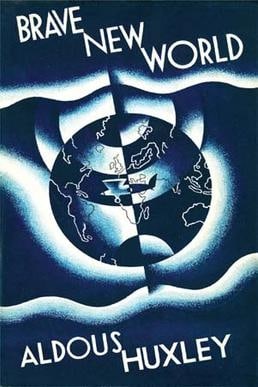
Brave New World is a dystopian social science fiction novel by English author Aldous Huxley, written in 1931 and published in 1932. Largely set in a futuristic World State, whose citizens are environmentally engineered into an intelligence-based social hierarchy, the novel anticipates huge scientific advancements in reproductive technology, sleep-learning, psychological manipulation and classical conditioning that are combined to make a dystopian society which is challenged by only a single individual: the story’s protagonist.
Read More About Brave New World / Source
Catch-22
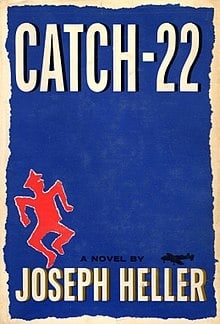
Catch-22 is a satirical war novel by American author Joseph Heller. He began writing it in 1953; the novel was first published in 1961. Often cited as one of the most significant novels of the twentieth century, it uses a distinctive non-chronological third-person omniscient narration, describing events from the points of view of different characters. The separate storylines are out of sequence so the timeline develops along with the plot.
The novel is set during World War II, from 1942 to 1944. It mainly follows the life of antihero Captain John Yossarian, a U.S. Army Air Forces B-25 bombardier. Most of the events in the book occur while the fictional 256th US Army Air Squadron is based on the island of Pianosa, in the Mediterranean Sea west of Italy, though it also covers episodes from basic training at Lowry Field in Colorado and Air Corps training at Santa Ana Army Air Base in California. The novel examines the absurdity of war and military life through the experiences of Yossarian and his cohorts, who attempt to maintain their sanity while fulfilling their service requirements so that they may return home.
The book was made into a film adaptation in 1970, directed by Mike Nichols. In 1994, Heller published a sequel to the 1961 novel entitled Closing Time.
Read More About Catch-22 / Source
Charlie and the Chocolate Factory
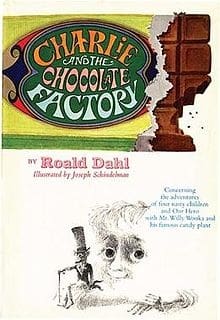
Charlie and the Chocolate Factory is a 1964 children’s novel by British author Roald Dahl. The story features the adventures of young Charlie Bucket inside the chocolate factory of eccentric chocolatier Willy Wonka.
Charlie and the Chocolate Factory was first published in the United States by Alfred A. Knopf, Inc. in 1964 and in the United Kingdom by George Allen & Unwin 11 months later. The book has been adapted into two major motion pictures: Willy Wonka & the Chocolate Factory in 1971, and Charlie and the Chocolate Factory in 2005. The book’s sequel, Charlie and the Great Glass Elevator, was written by Roald Dahl in 1971 and published in 1972. Dahl had also planned to write a third book in the series but never finished it.The story was originally inspired by Roald Dahl’s experience of chocolate companies during his schooldays. Cadbury would often send test packages to the schoolchildren in exchange for their opinions on the new products. At that time (around the 1920s), Cadbury and Rowntree’s were England’s two largest chocolate makers and they each often tried to steal trade secrets by sending spies, posing as employees, into the other’s factory. Because of this, both companies became highly protective of their chocolate-making processes. It was a combination of this secrecy and the elaborate, often gigantic, machines in the factory that inspired Dahl to write the story.
Read More About Charlie and the Chocolate Factory / Source
Charlotte's Web
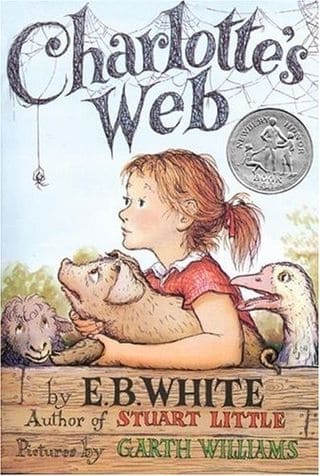
Charlotte’s Web is a book of children’s literature by American author E. B. White and illustrated by Garth Williams; it was published on October 15, 1952, by Harper & Brothers. The novel tells the story of a livestock pig named Wilbur and his friendship with a barn spider named Charlotte.
Read More About Charlotte's Web / Source
Crime and Punishment
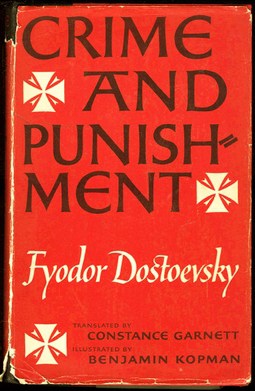
Crime and Punishment is a novel by the Russian author Fyodor Dostoevsky. It was first published in the literary journal The Russian Messenger in twelve monthly installments during 1866. It was later published in a single volume. It is the second of Dostoevsky’s full-length novels following his return from ten years of exile in Siberia. Crime and Punishment is considered the first great novel of his “mature” period of writing. The novel is often cited as one of the supreme achievements in literature.
Read More About Crime and Punishment / Source
Critique of Pure Reason
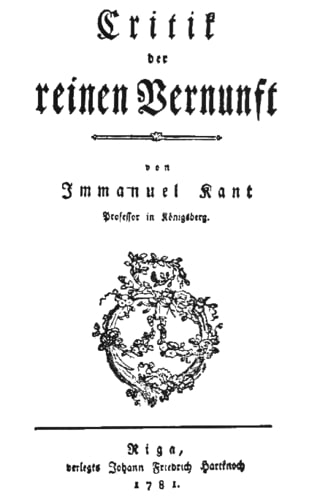
Critique of Pure Reason (German: Kritik der reinen Vernunft; 1781; second edition 1787) is a book by the German philosopher Immanuel Kant, in which the author seeks to determine the limits and scope of metaphysics. Also referred to as Kant’s “First Critique”, it was followed by his Critique of Practical Reason (1788) and Critique of Judgment (1790). In the preface to the first edition, Kant explains that by a “critique of pure reason” he means a critique “of the faculty of reason in general, in respect of all knowledge after which it may strive independently of all experience” and that he aims to reach a decision about “the possibility or impossibility of metaphysics.”
Read More About Critique of Pure Reason / Source
Cutting for Stone
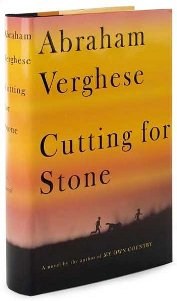
Cutting for Stone (2009) is a novel written by Ethiopian-born Indian-American medical doctor and author Abraham Verghese. It is a saga of twin brothers, orphaned by their mother’s death at their births and forsaken by their father. The book includes both a deep description of medical procedures and an exploration of the human side of medical practices.
When first published, the novel was on The New York Times Best Seller list for two years and generally received well by critics. With its positive reception, Barack Obama put it on his summer reading list and the book was optioned for adaptations.
Read More About Cutting for Stone / Source
Dissolution
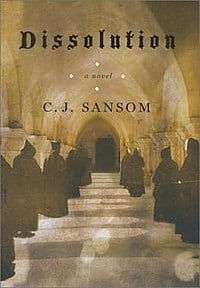
Dissolution (2003) is a historical mystery novel by British author C. J. Sansom. It is Sansom’s first published novel, and the first in the Matthew Shardlake Series. It was dramatised by BBC Radio 4 in 2012.
Read More About Dissolution / Source
Divine Comedy
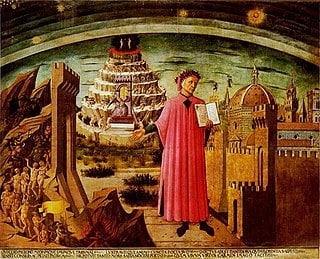
The Divine Comedy is a long Italian narrative poem by Dante Alighieri, begun c. 1308 and completed in 1320, a year before his death in 1321. It is widely considered to be the pre-eminent work in Italian literature and one of the greatest works of world literature. The poem’s imaginative vision of the afterlife is representative of the medieval world-view as it had developed in the Western Church by the 14th century. It helped establish the Tuscan language, in which it is written, as the standardized Italian language. It is divided into three parts: Inferno, Purgatorio, and Paradiso.
Read More About Divine Comedy / Source
Do Androids Dream of Electric Sheep?
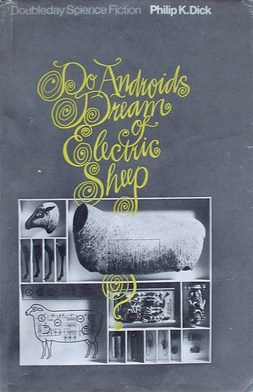
Do Androids Dream of Electric Sheep is a dystopian science fiction novel by American writer Philip K. Dick, first published in 1968. The novel is set in a post-apocalyptic San Francisco, where Earth’s life has been greatly damaged by a nuclear global war, leaving most animal species endangered or extinct.
Read More About Do Androids Dream of Electric Sheep? / Source
Don Quixote
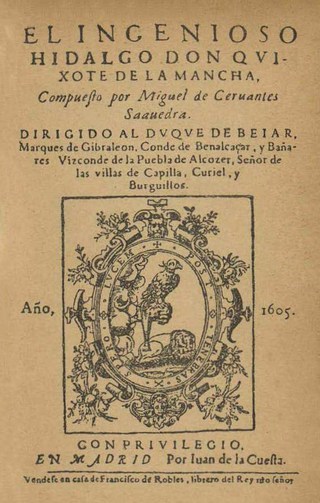
The Ingenious Gentleman Don Quixote of La Mancha, or just Don Quixote, is a Spanish novel by Miguel de Cervantes. It was originally published in two parts, in 1605 and 1615. A founding work of Western literature, it is often labeled as the first modern novel and is considered one of the greatest works ever written. Don Quixote also holds the distinction of being one of the most-translated books in the world.
Read More About Don Quixote / Source
Dracula
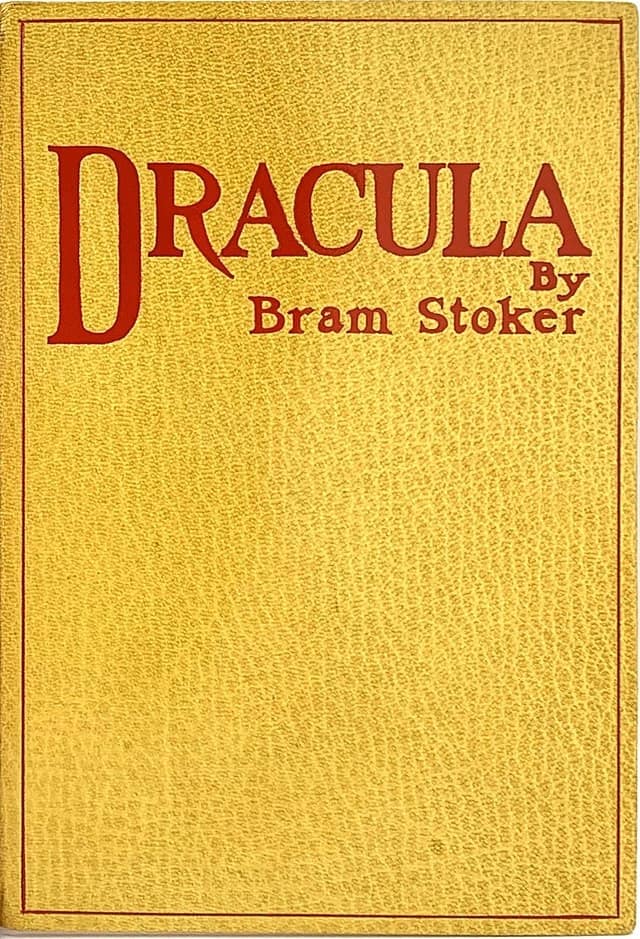
Dracula is an 1897 Gothic horror novel by Irish author Bram Stoker. It introduced the character of Count Dracula and established many conventions of subsequent vampire fantasy. The novel tells the story of Dracula’s attempt to move from Transylvania to England so that he may find new blood and spread the undead curse, and of the battle between Dracula and a small group of people led by Professor Abraham Van Helsing.
Read More About Dracula / Source
Dubliners
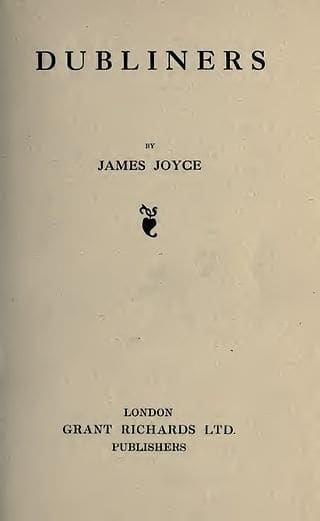
Dubliners is a collection of fifteen short stories by James Joyce, first published in 1914. The stories comprise a naturalistic depiction of Irish middle class life in and around Dublin in the early years of the 20th century.
The stories were written when Irish nationalism was at its peak, and a search for a national identity and purpose was raging; at a crossroads of history and culture, Ireland was jolted by various converging ideas and influences. They centre on Joyce’s idea of an epiphany: a moment where a character experiences a life-changing self-understanding or illumination, and the idea of paralysis where Joyce felt Irish nationalism stagnated cultural progression, placing Dublin at the heart of this regressive movement. Many of the characters in Dubliners later appear in minor roles in Joyce’s novel Ulysses. The initial stories in the collection are narrated by child protagonists, and as the stories continue, they deal with the lives and concerns of progressively older people. This is in line with Joyce’s tripartite division of the collection into childhood, adolescence and maturity.
Read More About Dubliners / Source
Dune
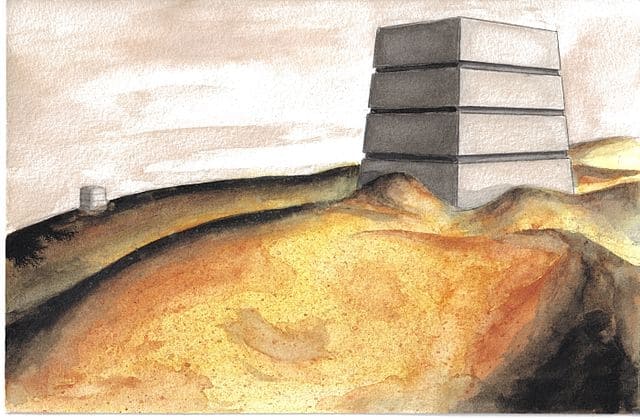
Dune is a 1965 science-fiction novel by American author Frank Herbert, originally published as two separate serials in Analog magazine. It tied with Roger Zelazny’s This Immortal for the Hugo Award in 1966, and it won the inaugural Nebula Award for Best Novel. It is the first installment of the Dune saga; further, in 2003, it was cited as the world’s best-selling science fiction novel.
East of Eden
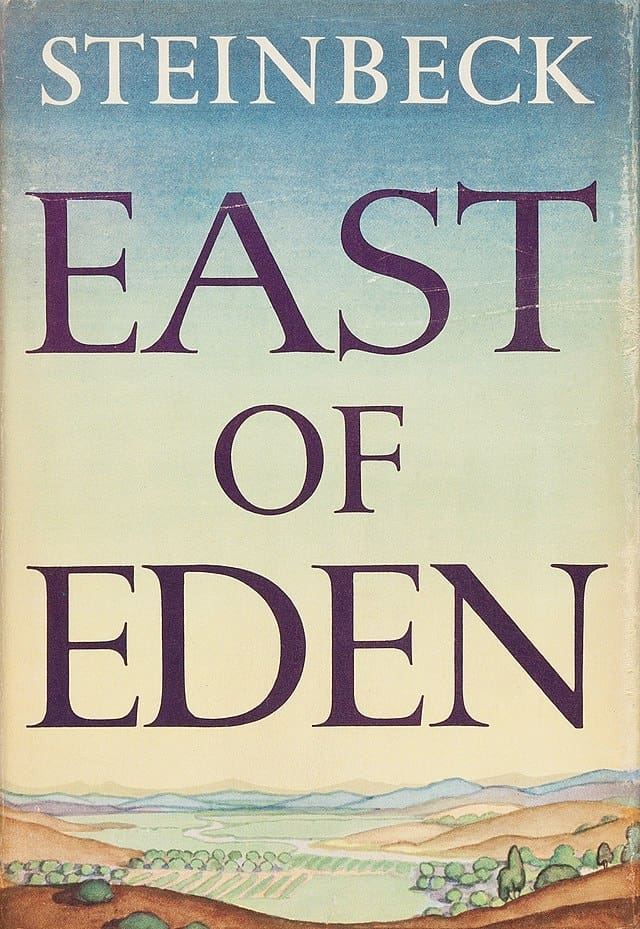
East of Eden is a novel by American author and Nobel Prize winner John Steinbeck. Published in September 1952, the work is regarded by many to be Steinbeck’s most ambitious novel and by Steinbeck himself to be his magnum opus. Steinbeck stated about East of Eden: “It has everything in it I have been able to learn about my craft or profession in all these years,” and later said: “I think everything else I have written has been, in a sense, practice for this.” The novel was originally addressed to Steinbeck’s young sons, Thom and John (then 6½ and 4½ years old, respectively). Steinbeck wanted to describe the Salinas Valley for them in detail: the sights, sounds, smells and colors.
East of Eden brings to life the intricate details of two families, the Trasks and the Hamiltons, and their interwoven stories. The Hamilton family in the novel is said to be based on the real-life family of Samuel Hamilton, Steinbeck’s maternal grandfather. A young John Steinbeck also appears briefly in the novel as a minor character.
Read More About East of Eden / Source
Emma
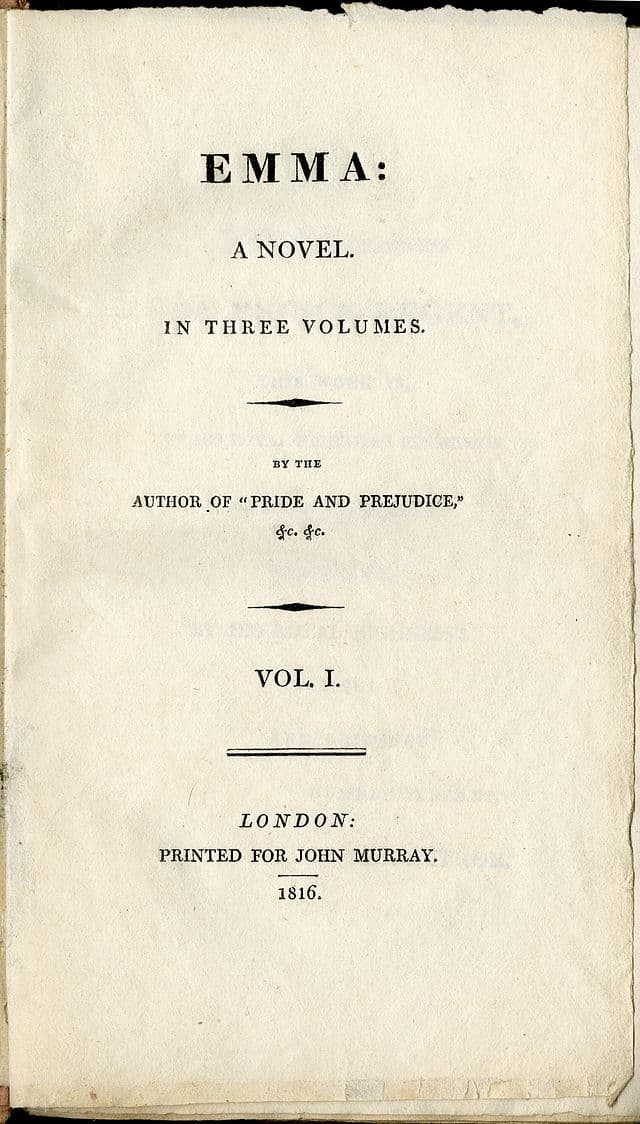
Emma, by Jane Austen, is a novel about youthful hubris and romantic misunderstandings. It is set in the fictional country village of Highbury and the surrounding estates of Hartfield, Randalls and Donwell Abbey, and involves the relationships among people from a small number of families. The novel was first published in December 1815, with its title page listing a publication date of 1816.
Fahrenheit 451
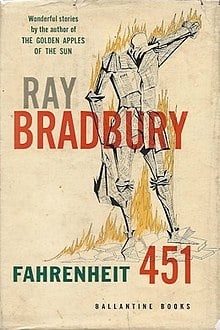
Fahrenheit 451 is a 1953 dystopian novel by American writer Ray Bradbury. Often regarded as one of his best works, the novel presents a future American society where books are outlawed and “firemen” burn any that are found. The book’s tagline explains the title as “‘the temperature at which book paper catches fire, and burns”: the autoignition temperature of paper. The lead character, Guy Montag, is a fireman who becomes disillusioned with his role of censoring literature and destroying knowledge, eventually quitting his job and committing himself to the preservation of literary and cultural writings.
Read More About Fahrenheit 451 / Source
Fear and Loathing in Las Vegas
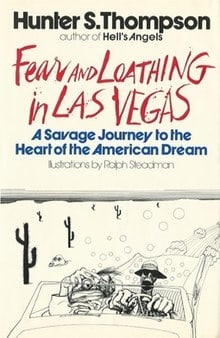
Fear and Loathing in Las Vegas: A Savage Journey to the Heart of the American Dream is a 1971 novel by Hunter S. Thompson, illustrated by Ralph Steadman. The book is a roman à clef, rooted in autobiographical incidents. The story follows its protagonist, Raoul Duke, and his attorney, Dr. Gonzo, as they descend on Las Vegas to chase the American Dream through a drug-induced haze, all the while ruminating on the failure of the 1960s countercultural movement. The work is Thompson’s most famous book, and is noted for its lurid descriptions of illegal drug use and its early retrospective on the culture of the 1960s. Its popularization of Thompson’s highly subjective blend of fact and fiction has become known as gonzo journalism. The novel first appeared as a two-part series in Rolling Stone magazine in 1971, and was published as a book in 1972. It was later adapted into a film of the same title in 1998 by Terry Gilliam, starring Johnny Depp and Benicio del Toro who portrayed Raoul Duke and Dr. Gonzo, respectively.
Read More About Fear and Loathing in Las Vegas / Source
For Whom the Bell Tolls
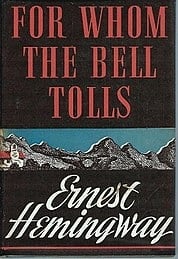
For Whom the Bell Tolls is a novel by Ernest Hemingway published in 1940. It tells the story of Robert Jordan, a young American volunteer attached to a Republican guerrilla unit during the Spanish Civil War. As a dynamiter, he is assigned to blow up a bridge during an attack on the city of Segovia.
It was published just after the end of the Spanish Civil War (1936–1939), whose general lines were well known at the time. It assumes the reader knows that the war was between the government of the Second Spanish Republic, which many foreigners went to Spain to help and which was supported by the Soviet Union, and the Nationalist faction, which was supported by Nazi Germany and Fascist Italy. It was commonly viewed as the dress rehearsal for the Second World War. In 1940, the year the book was published, the United States had not yet entered the war, which had begun on Sept. 1, 1939, with Nazi Germany’s invasion of Poland.The novel is regarded as one of Hemingway’s best works, along with The Sun Also Rises, A Farewell to Arms, and The Old Man and the Sea.
Read More About For Whom the Bell Tolls / Source
Frankenstein
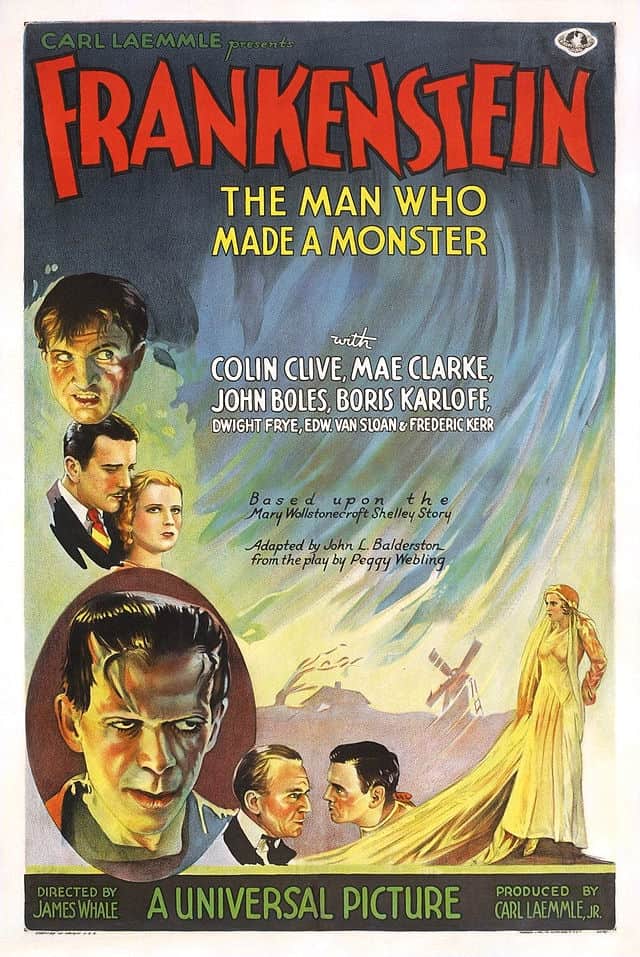
Frankenstein; or, The Modern Prometheus is an 1818 novel written by English author Mary Shelley. Frankenstein tells the story of Victor Frankenstein, a young scientist who creates a sapient creature in an unorthodox scientific experiment. Shelley started writing the story when she was 18, and the first edition was published anonymously in London on 1 January 1818, when she was 20. Her name first appeared in the second edition, which was published in Paris in 1821.
Read More About Frankenstein / Source
Go Tell It on the Mountain
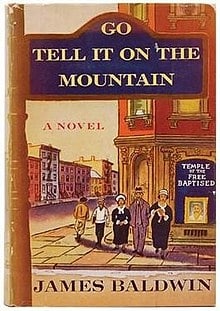
Go Tell It on the Mountain is a 1953 semi-autobiographical novel by James Baldwin. It tells the story of John Grimes, an intelligent teenager in 1930s Harlem, and his relationship with his family and his church. The novel also reveals the back stories of John’s mother, his biological father, and his violent, fanatically religious stepfather, Gabriel Grimes. The novel focuses on the role of the Pentecostal Church in the lives of African Americans, both as a negative source of repression and moral hypocrisy and a positive source of inspiration and community. In 1998, the Modern Library ranked Go Tell It on the Mountain 39th on its list of the 100 best English-language novels of the 20th century. Time Magazine included the novel on its TIME 100 Best English-language Novels from 1923 to 2005.
Read More About Go Tell It on the Mountain / Source
Gone with the Wind
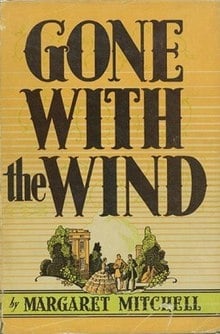
Gone with the Wind is a novel by American writer Margaret Mitchell, first published in 1936. The story is set in Clayton County and Atlanta, both in Georgia, during the American Civil War and Reconstruction Era. It depicts the struggles of young Scarlett O’Hara, the spoiled daughter of a well-to-do plantation owner, who must use every means at her disposal to claw her way out of poverty following Sherman’s destructive “March to the Sea”. This historical novel features a coming-of-age story, with the title taken from the poem “Non Sum Qualis eram Bonae Sub Regno Cynarae”, written by Ernest Dowson.Gone with the Wind was popular with American readers from the outset and was the top American fiction bestseller in 1936 and 1937. As of 2014, a Harris poll found it to be the second favorite book of American readers, just behind the Bible. More than 30 million copies have been printed worldwide.
Gone with the Wind is a controversial reference point for subsequent writers of the South, both black and white. Scholars at American universities refer to, interpret, and study it in their writings. The novel has been absorbed into American popular culture.
Mitchell received the Pulitzer Prize for Fiction for the book in 1937. It was adapted into the 1939 film of the same name, which has been considered to be one of the greatest movies ever made and also received the Academy Award for Best Picture during the 12th annual Academy Awards ceremony. Gone with the Wind is the only novel by Mitchell published during her lifetime.
Read More About Gone with the Wind / Source
Goodnight Moon
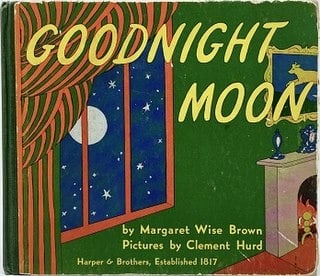
Goodnight Moon is an American children’s book written by Margaret Wise Brown and illustrated by Clement Hurd. It was published on September 3, 1947, and is a highly acclaimed bedtime story.
This book is the second in Brown and Hurd’s “classic series”, which also includes The Runaway Bunny and My World. The three books have been published together as a collection titled Over the Moon.
Read More About Goodnight Moon / Source
Great Expectations
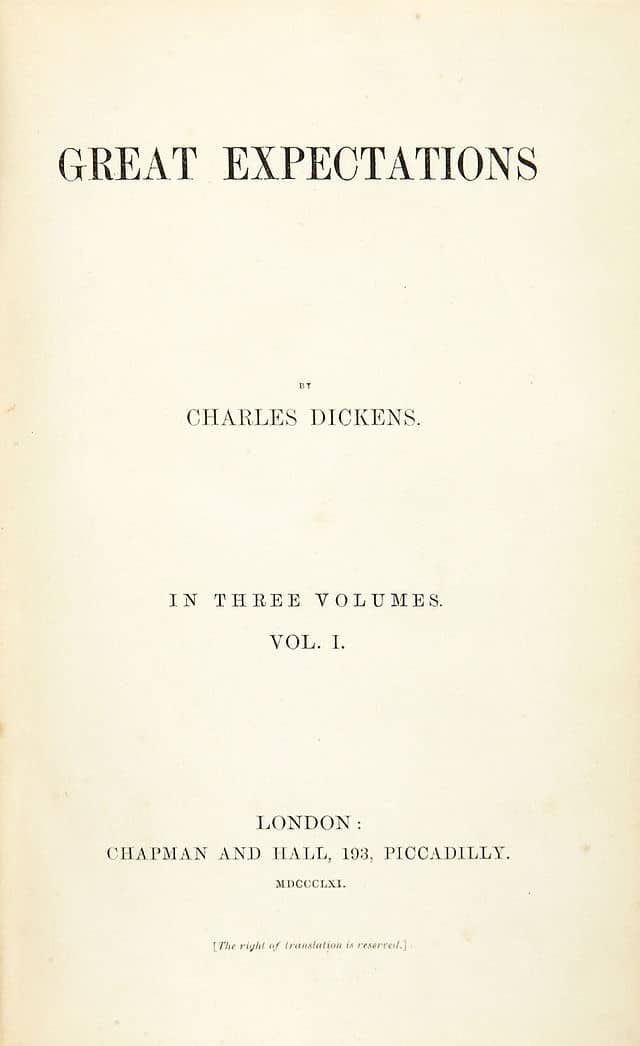
Great Expectations is the thirteenth novel by Charles Dickens and his penultimate completed novel. It depicts the education of an orphan nicknamed Pip (the book is a bildungsroman, a coming-of-age story). It is Dickens’s second novel, after David Copperfield, to be fully narrated in the first person. The novel was first published as a serial in Dickens’s weekly periodical All the Year Round, from 1 December 1860 to August 1861. In October 1861, Chapman and Hall published the novel in three volumes.
Read More About Great Expectations / Source
Gulliver's Travels
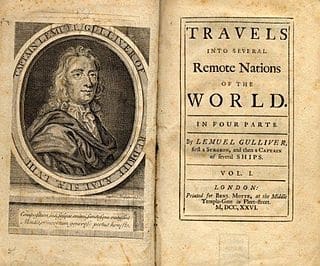
Gulliver’s Travels, or Travels into Several Remote Nations of the World. In Four Parts. By Lemuel Gulliver, First a Surgeon, and then a Captain of Several Ships is a 1726 prose satire by the Irish writer and clergyman Jonathan Swift, satirising both human nature and the “travellers’ tales” literary subgenre. It is Swift’s best known full-length work, and a classic of English literature. Swift claimed that he wrote Gulliver’s Travels “to vex the world rather than divert it”.
Read More About Gulliver's Travels / Source
Guns, Germs, and Steel
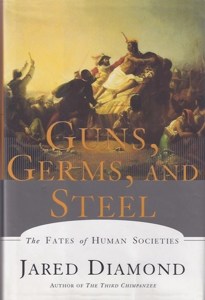
Guns, Germs, and Steel: The Fates of Human Societies (previously titled Guns, Germs and Steel: A Short History of Everybody for the Last 13,000 Years) is a 1997 transdisciplinary non-fiction book by Jared Diamond. In 1998, Guns, Germs, and Steel won the Pulitzer Prize for general nonfiction and the Aventis Prize for Best Science Book. A documentary based on the book, and produced by the National Geographic Society, was broadcast on PBS in July 2005.The book attempts to explain why Eurasian and North African civilizations have survived and conquered others, while arguing against the idea that Eurasian hegemony is due to any form of Eurasian intellectual, moral, or inherent genetic superiority. Diamond argues that the gaps in power and technology between human societies originate primarily in environmental differences, which are amplified by various positive feedback loops. When cultural or genetic differences have favored Eurasians (for example, written language or the development among Eurasians of resistance to endemic diseases), he asserts that these advantages occurred because of the influence of geography on societies and cultures (for example, by facilitating commerce and trade between different cultures) and were not inherent in the Eurasian genomes.
Read More About Guns, Germs, and Steel / Source
Hamlet
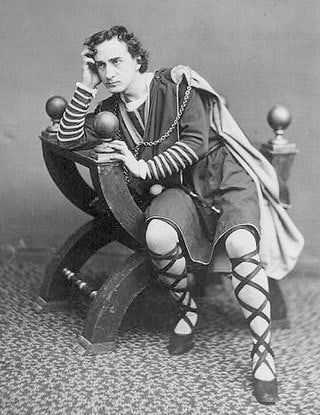
The Tragedy of Hamlet, Prince of Denmark, often shortened to Hamlet is a tragedy written by William Shakespeare sometime between 1599 and 1601. It is Shakespeare’s longest play, with 29,551 words. Set in Denmark, the play depicts Prince Hamlet and his revenge against his uncle, Claudius, who has murdered Hamlet’s father in order to seize his throne and marry Hamlet’s mother.
Read More About Hamlet / Source
Heart of Darkness
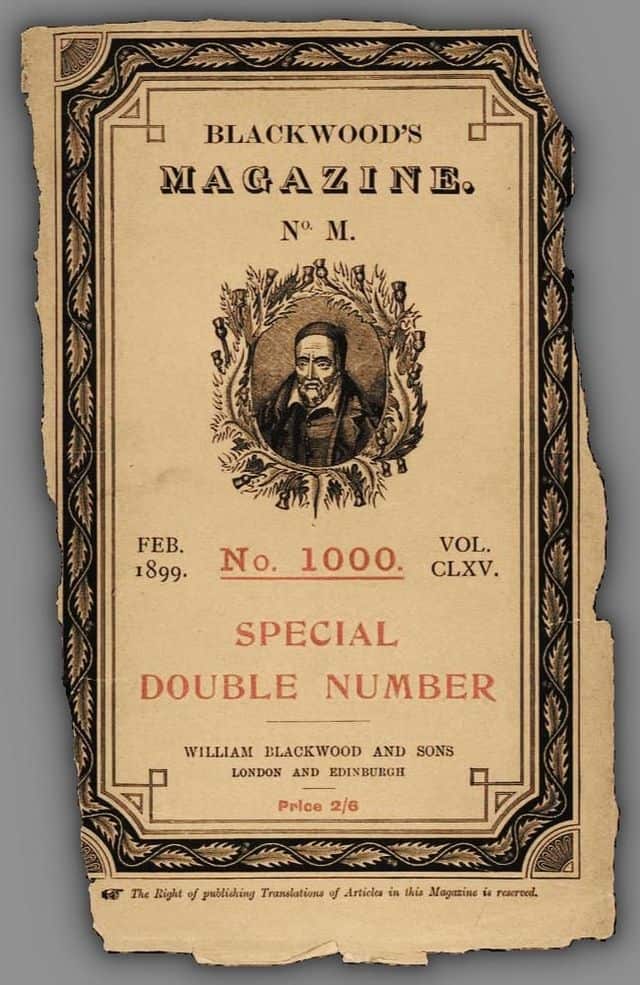
Heart of Darkness (1899) is a novella by Polish-English novelist Joseph Conrad about a narrated voyage up the Congo River into the Congo Free State in the Heart of Africa. Charles Marlow, the narrator, tells his story to friends aboard a boat anchored on the River Thames. This setting provides the frame for Marlow’s story of his obsession with the successful ivory trader Kurtz. Conrad offers parallels between London (“the greatest town on earth”) and Africa as places of darkness.Central to Conrad’s work is the idea that there is little difference between “civilised people” and “savages.” Heart of Darkness implicitly comments on imperialism and racism.Originally issued as a three-part serial story in Blackwood’s Magazine to celebrate the thousandth edition of the magazine, Heart of Darkness has been widely re-published and translated into many languages. It provided the inspiration for Francis Ford Coppola’s 1979 film Apocalypse Now. In 1998, the Modern Library ranked Heart of Darkness 67th on their list of the 100 best novels in English of the twentieth century.
Read More About Heart of Darkness / Source
Homegoing (Gyasi novel)
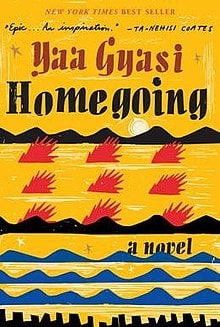
Homegoing is the debut historical fiction novel by Ghanaian-American author Yaa Gyasi, published in 2016. Each chapter in the novel follows a different descendant of an Asante woman named Maame, starting with her two daughters, who are half-sisters, separated by circumstance: Effia marries James Collins, the British governor in charge of Cape Coast Castle, while her half-sister Esi is held captive in the dungeons below. Subsequent chapters follow their children and following generations.
The novel was selected in 2016 for the National Book Foundation’s “5 under 35” award, the National Book Critics Circle’s John Leonard Award for best first book, and was longlisted for the Dylan Thomas Prize in 2017. It received the Hemingway Foundation/PEN Award for 2017, an American Book Award, and the Vilcek Prize for Creative Promise in Literature.
Read More About Homegoing (Gyasi novel) / Source
Hopscotch
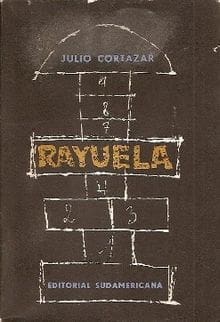
Hopscotch (Spanish: Rayuela) is a novel by Argentine writer Julio Cortázar. Written in Paris, it was published in Spanish in 1963 and in English in 1966. For the first U.S. edition, translator Gregory Rabassa split the inaugural National Book Award in the translation category.Hopscotch is a stream-of-consciousness novel which can be read according to two different sequences of chapters. This novel is often referred to as a counter-novel, as it was by Cortázar himself. It meant an exploration with multiple endings, a neverending search through unanswerable questions.
Read More About Hopscotch / Source
Grimms' Fairy Tales
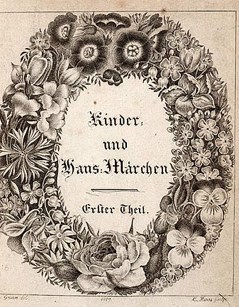
Grimms’ Fairy Tales, originally known as the Children’s and Household Tales is a German collection of fairy tales by the Grimm brothers or “Brothers Grimm”, Jacob and Wilhelm, first published on 20 December 1812. The first edition contained 86 stories, and by the seventh edition in 1857, had 210 unique fairy tales.
Read More About Grimms' Fairy Tales / Source
In Cold Blood
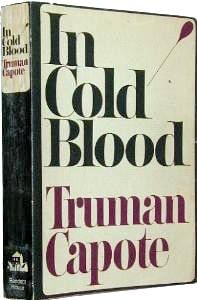
In Cold Blood is a non-fiction novel by American author Truman Capote, first published in 1966. It details the 1959 murders of four members of the Herbert Clutter family in the small farming community of Holcomb, Kansas.
Capote learned of the quadruple murder before the killers were captured, and he traveled to Kansas to write about the crime. He was accompanied by his childhood friend and fellow author Harper Lee, and they interviewed residents and investigators assigned to the case and took thousands of pages of notes. Killers Richard Hickock and Perry Smith were arrested six weeks after the murders and later executed by the state of Kansas. Capote ultimately spent six years working on the book.
In Cold Blood was an instant success and is the second-best-selling true crime book in history, behind Vincent Bugliosi’s Helter Skelter (1974) about the Charles Manson murders. Some critics consider Capote’s work the original non-fiction novel, although other writers had already explored the genre, such as Rodolfo Walsh in Operación Masacre (1957). In Cold Blood has been lauded for its eloquent prose, extensive detail, and triple narrative which describes the lives of the murderers, the victims, and other members of the rural community in alternating sequences. The psychologies and backgrounds of Hickock and Smith are given special attention, as is the pair’s complex relationship during and after the murders. In Cold Blood is regarded by critics as a pioneering work in the true crime genre, although Capote was disappointed that the book failed to win the Pulitzer Prize. Parts of the book differ from the real events, including important details.
Read More About In Cold Blood / Source
Interpreter of Maladies
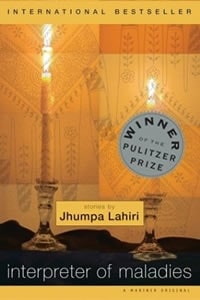
Interpreter of Maladies is a book collection of nine short stories by American author of Indian origin Jhumpa Lahiri published in 1999. It won the Pulitzer Prize for Fiction and the Hemingway Foundation/PEN Award in the year 2000 and has sold over 15 million copies worldwide. It was also chosen as The New Yorker’s Best Debut of the Year and is on Oprah Winfrey’s Top Ten Book List.
The stories are about the lives of Indians and Indian Americans who are caught between their roots and the “New World”.
Read More About Interpreter of Maladies / Source
Invisible Man
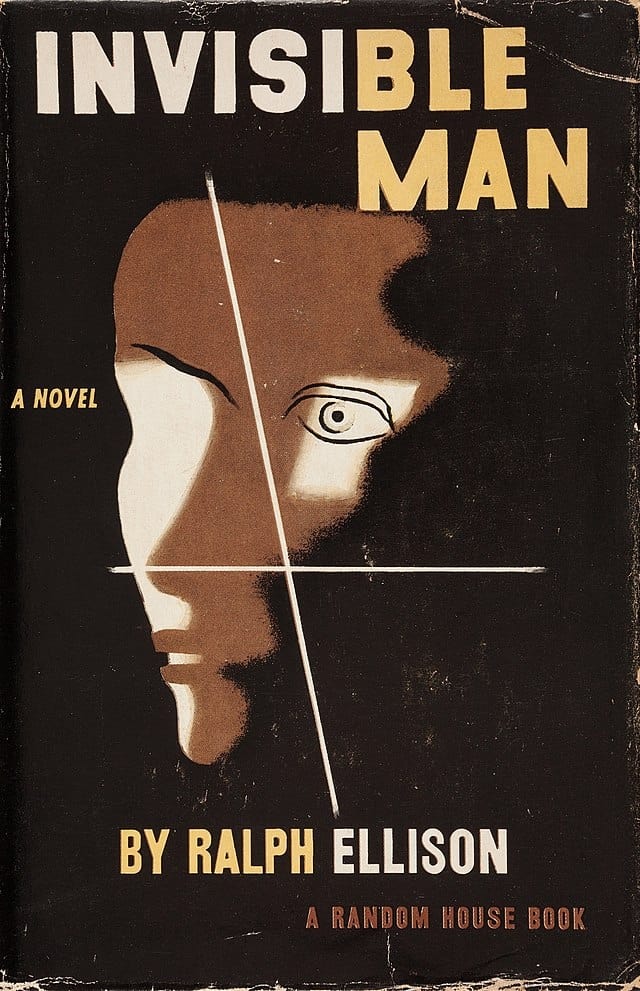
Invisible Man is a novel by Ralph Ellison, published by Random House in 1952. It addresses many of the social and intellectual issues faced by African Americans in the early twentieth century, including black nationalism, the relationship between black identity and Marxism, and the reformist racial policies of Booker T. Washington, as well as issues of individuality and personal identity.
Invisible Man won the U.S. National Book Award for Fiction in 1953, making Ellison the first African American writer to win the award.
In 1998, the Modern Library ranked Invisible Man 19th on its list of the 100 best English-language novels of the 20th century. Time magazine included the novel in its TIME 100 Best English-language Novels from 1923 to 2005, calling it “the quintessential American picaresque of the 20th century,” rather than a “race novel, or even a bildungsroman.” Malcolm Bradbury and Richard Ruland recognize an existential vision with a “Kafka-like absurdity.” According to The New York Times, Barack Obama modeled his 1995 memoir Dreams from My Father on Ellison’s novel.
Read More About Invisible Man / Source
Jane Eyre
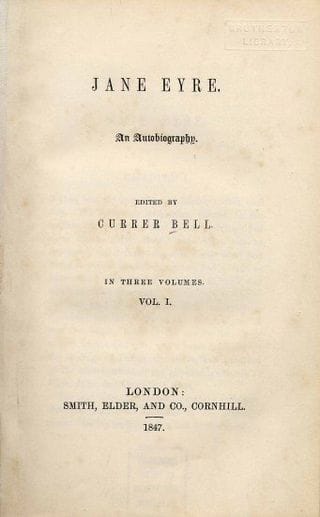
Jane Eyre (originally published as Jane Eyre: An Autobiography) is a novel by English writer Charlotte Brontë, published under the pen name “Currer Bell”, on 16 October 1847, by Smith, Elder & Co. of London. The first American edition was published the following year by Harper & Brothers of New York. Jane Eyre is a Bildungsroman which follows the experiences of its eponymous heroine, including her growth to adulthood and her love for Mr. Rochester, the brooding master of Thornfield Hall.The novel revolutionised prose fiction by being the first to focus on its protagonist’s moral and spiritual development through an intimate first-person narrative, where actions and events are coloured by a psychological intensity. Charlotte Brontë has been called the “first historian of the private consciousness”, and the literary ancestor of writers like Proust and Joyce.The book contains elements of social criticism with a strong sense of Christian morality at its core, and it is considered by many to be ahead of its time because of Jane’s individualistic character and how the novel approaches the topics of class, sexuality, religion, and feminism. It, along with Jane Austen’s Pride and Prejudice, is one of the most famous romance novels of all time.
Read More About Jane Eyre / Source
Kafka on the Shore

Kafka on the Shore (海辺のカフカ, Umibe no Kafuka) is a 2002 novel by Japanese author Haruki Murakami. Its 2005 English translation was among “The 10 Best Books of 2005” from The New York Times and received the World Fantasy Award for 2006.
Read More About Kafka on the Shore / Source
Kitchen Confidential (book)
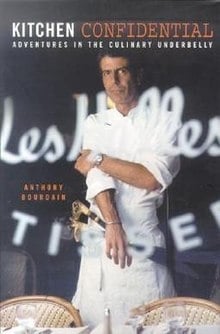
Kitchen Confidential: Adventures in the Culinary Underbelly is a New York Times bestselling nonfiction book written by American chef Anthony Bourdain, first published in 2000. In 2018, it topped the New York Times non-fiction paperback and non-fiction combined e-book & print lists.In 1999, Bourdain’s essay “Don’t Eat Before Reading This” was published in the New Yorker. This served as the foundation for Kitchen Confidential.Released in 2000, the book is both Bourdain’s professional memoir and a behind-the-scenes look at restaurant kitchens. The book is known for its treatment of the professional culinary industry, which he describes as an intense, unpleasant, and sometimes hazardous workplace staffed by who he describes as misfits.
Read More About Kitchen Confidential (book) / Source
Les Misérables
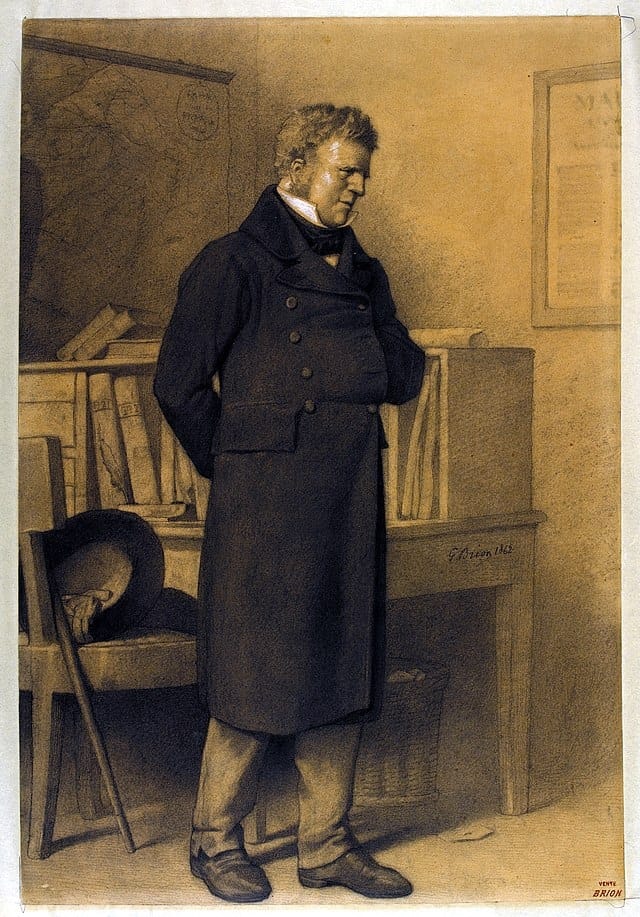
Les Misérables (, French: [le mizeʁabl(ə)]) is a French historical novel by Victor Hugo, first published in 1862, that is considered one of the greatest novels of the 19th century.
In the English-speaking world, the novel is usually referred to by its original French title. However, several alternatives have been used, including The Miserables, The Wretched, The Miserable Ones, The Poor Ones, The Wretched Poor, The Victims and The Dispossessed. Beginning in 1815 and culminating in the 1832 June Rebellion in Paris, the novel follows the lives and interactions of several characters, particularly the struggles of ex-convict Jean Valjean and his experience of redemption.Examining the nature of law and grace, the novel elaborates upon the history of France, the architecture and urban design of Paris, politics, moral philosophy, antimonarchism, justice, religion, and the types and nature of romantic and familial love. Les Misérables has been popularized through numerous adaptations for film, television and the stage, including a musical.
Read More About Les Misérables / Source
Life of Pi
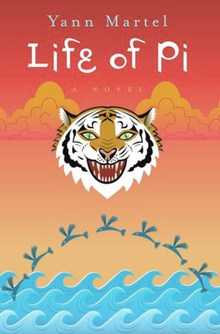
Life of Pi is a Canadian philosophical novel by Yann Martel published in 2001. The protagonist is Piscine Molitor “Pi” Patel, an Indian Tamil boy from Pondicherry who explores issues of spirituality and metaphysics from an early age. He survives 227 days after a shipwreck while stranded on a lifeboat in the Pacific Ocean with a Bengal tiger which raises questions about the nature of reality and how it is perceived and told. He is part of a Hindi speaking family.
The novel has sold more than ten million copies worldwide. It was rejected by at least five London publishing houses before being accepted by Knopf Canada, which published it in September 2001. The UK edition won the Man Booker Prize for Fiction the following year. It was also chosen for CBC Radio’s Canada Reads 2003, where it was championed by author Nancy Lee.The French translation L’Histoire de Pi was chosen in the French CBC version of the contest Le Combat des livres, where it was championed by Louise Forestier. The novel won the 2003 Boeke Prize, a South African novel award. In 2004, it won the Asian/Pacific American Award for Literature in Best Adult Fiction for years 2001–2003. In 2012 it was adapted into a feature film directed by Ang Lee with a screenplay by David Magee.
Read More About Life of Pi / Source
Little Women
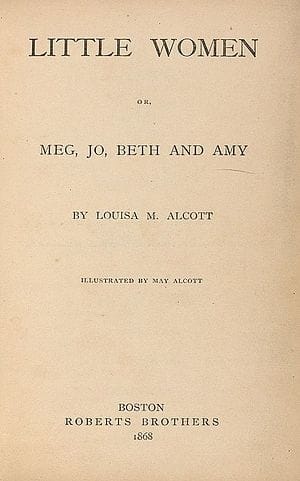
Little Women is a coming-of-age novel written by American novelist Louisa May Alcott (1832–1888).
Originally published in two volumes in 1868 and 1869, Alcott wrote the book over several months at the request of her publisher. The story follows the lives of the four March sisters—Meg, Jo, Beth, and Amy—and details their passage from childhood to womanhood. Loosely based on the lives of the author and her three sisters, it is classified as an autobiographical or semi-autobiographical novel. Little Women was an immediate commercial and critical success, with readers eager for more about the characters.
Read More About Little Women / Source
Lolita
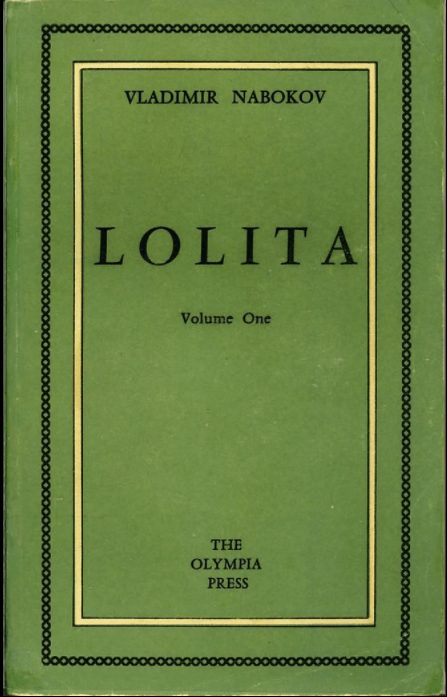
Lolita is a 1955 novel written by Russian-American novelist Vladimir Nabokov. The novel is notable for its controversial subject: the protagonist and unreliable narrator, a middle-aged literature professor under the pseudonym Humbert Humbert, is obsessed with a 12-year-old girl, Dolores Haze, whom he sexually molests after he becomes her stepfather. “Lolita” is his private nickname for Dolores.
Read More About Lolita / Source
Love in the Time of Cholera
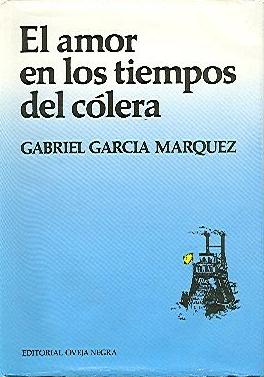
Love in the Time of Cholera (Spanish: El amor en los tiempos del cólera) is a novel by Colombian Nobel prize winning author Gabriel García Márquez. The novel was first published in Spanish in 1985. Alfred A. Knopf published an English translation in 1988, and an English-language movie adaptation was released in 2007.
Read More About Love in the Time of Cholera / Source
Love Medicine
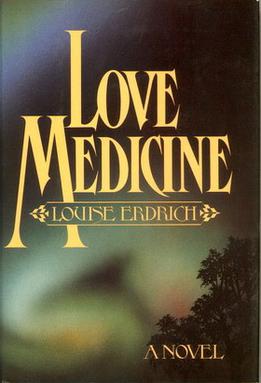
Love Medicine is Louise Erdrich’s debut novel, first published in 1984. Erdrich revised and expanded the novel in subsequent 1993 and 2009 editions. The book follows the lives of five interconnected Ojibwe families living on fictional reservations in Minnesota and North Dakota. The collection of stories in the book spans six decades from the 1930s to the 1980s. Love Medicine garnered critical praise and won numerous awards, including the 1984 National Book Critics Circle Award.
Read More About Love Medicine / Source
Man's Search for Meaning
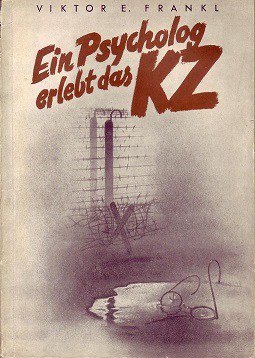
Man’s Search for Meaning is a 1946 book by Viktor Frankl chronicling his experiences as a prisoner in Nazi concentration camps during World War II, and describing his psychotherapeutic method, which involved identifying a purpose in life to feel positive about, and then immersively imagining that outcome. According to Frankl, the way a prisoner imagined the future affected his longevity. The book intends to answer the question “How was everyday life in a concentration camp reflected in the mind of the average prisoner?” Part One constitutes Frankl’s analysis of his experiences in the concentration camps, while Part Two introduces his ideas of meaning and his theory called logotherapy.
Read More About Man's Search for Meaning / Source
Maus
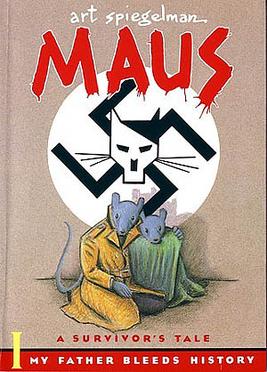
Maus is a graphic novel by American cartoonist Art Spiegelman. Serialized from 1980 to 1991, it depicts Spiegelman interviewing his father about his experiences as a Polish Jew and Holocaust survivor. The work employs postmodernist techniques and represents Jews as mice, Germans as cats, and Poles as pigs. Critics have classified Maus as memoir, biography, history, fiction, autobiography, or a mix of genres. In 1992, it became the first (and is still the only) graphic novel to win a Pulitzer Prize (the Special Award in Letters).
Meditations
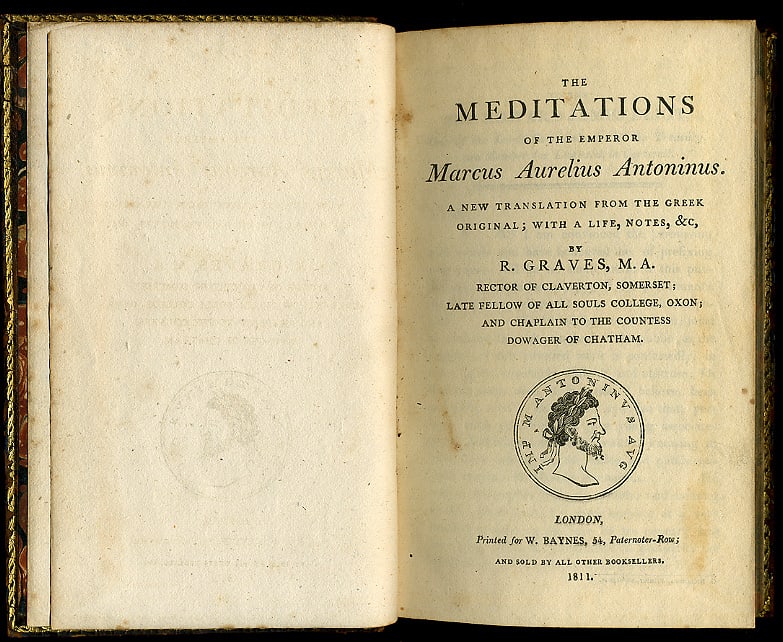
Meditations is a series of personal writings by Marcus Aurelius, Roman Emperor from AD 161 to 180, recording his private notes to himself and ideas on Stoic philosophy. Marcus Aurelius wrote the 12 books of the Meditations in Koine Greek as a source for his own guidance and self-improvement.
Read More About Meditations / Source
Metamorphoses
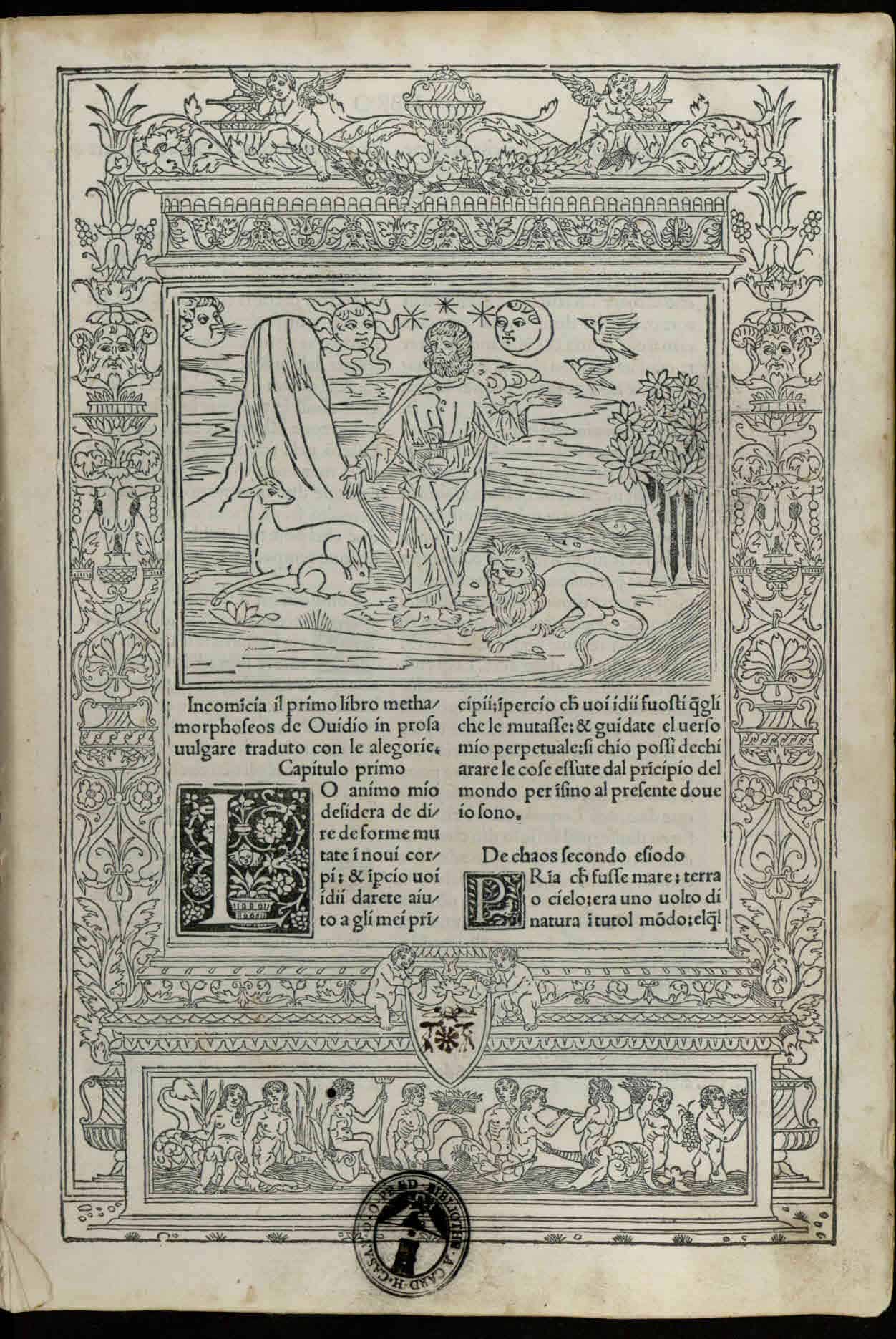
The Metamorphoses is an 8 AD Latin narrative poem by the Roman poet Ovid, considered his magnum opus. Comprising 11,995 lines, 15 books and over 250 myths, the poem chronicles the history of the world from its creation to the deification of Julius Caesar within a loose mythico-historical framework.
Although meeting the criteria for an epic, the poem defies simple genre classification by its use of varying themes and tones. Ovid took inspiration from the genre of metamorphosis poetry, and some of the Metamorphoses derives from earlier treatment of the same myths; however, he diverged significantly from all of his models.
Read More About Metamorphoses / Source
Middlesex (novel)
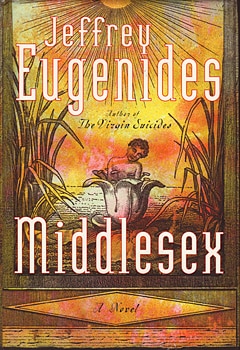
Middlesex is a Pulitzer Prize-winning novel by Jeffrey Eugenides published in 2002. The book is a bestseller, with more than four million copies sold since its publication. Its characters and events are loosely based on aspects of Eugenides’ life and observations of his Greek heritage. It is not an autobiography; unlike the protagonist, Eugenides is not intersex. The author decided to write Middlesex after reading the 1980 memoir Herculine Barbin and was dissatisfied with its discussion of intersex anatomy and emotions.
Read More About Middlesex (novel) / Source
Moby-Dick
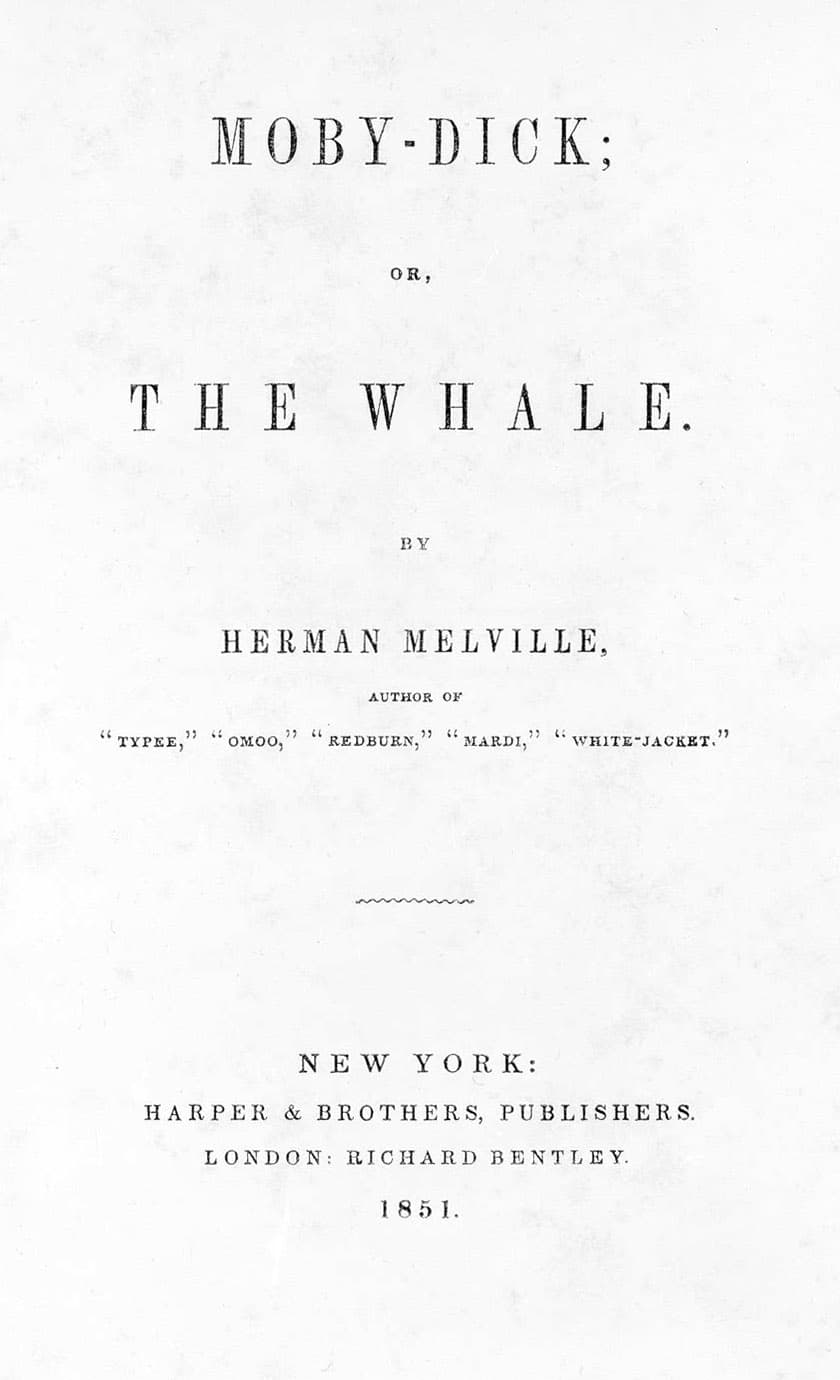
Moby-Dick; or, The Whale is an 1851 novel by American writer Herman Melville. The book is the sailor Ishmael’s narrative of the obsessive quest of Ahab, captain of the whaling ship Pequod, for revenge on Moby Dick, the giant white sperm whale that on the ship’s previous voyage bit off Ahab’s leg at the knee. A contribution to the literature of the American Renaissance, Moby-Dick was published to mixed reviews, was a commercial failure, and was out of print at the time of the author’s death in 1891. Its reputation as a “Great American Novel” was established only in the 20th century, after the centennial of its author’s birth. William Faulkner said he wished he had written the book himself, and D. H. Lawrence called it “one of the strangest and most wonderful books in the world” and “the greatest book of the sea ever written”. Its opening sentence, “Call me Ishmael”, is among world literature’s most famous.Melville began writing Moby-Dick in February 1850, and finished 18 months later, a year longer than he had anticipated. Melville drew on his experience as a common sailor from 1841 to 1844, including several years on whalers, and on wide reading in whaling literature. The white whale is modeled on the notoriously hard-to-catch albino whale Mocha Dick, and the book’s ending is based on the sinking of the whaleship Essex in 1820. His literary influences include Shakespeare and the Bible. The detailed and realistic descriptions of whale hunting and of extracting whale oil, as well as life aboard ship among a culturally diverse crew, are mixed with exploration of class and social status, good and evil, and the existence of God. In addition to narrative prose, Melville uses styles and literary devices ranging from songs, poetry, and catalogs to Shakespearean stage directions, soliloquies, and asides. In August 1850, with the manuscript perhaps half finished, he met Nathaniel Hawthorne and was deeply moved by his Mosses from an Old Manse, which he compared to Shakespeare in its cosmic ambitions. This encounter may have inspired him to revise and expand Moby-Dick, which is dedicated to Hawthorne, “in token of my admiration for his genius”.
The book was first published (in three volumes) as The Whale in London in October 1851, and under its definitive title in a single-volume edition in New York in November. The London publisher, Richard Bentley, censored or changed sensitive passages; Melville made revisions as well, including a last-minute change to the title for the New York edition. The whale, however, appears in the text of both editions as “Moby Dick”, without the hyphen. Reviewers in Britain were largely favorable, though some objected that the tale seemed to be told by a narrator who perished with the ship, as the British edition lacked the Epilogue recounting Ishmael’s survival. American reviewers were more hostile.
Read More About Moby-Dick / Source
On the Origin of Species
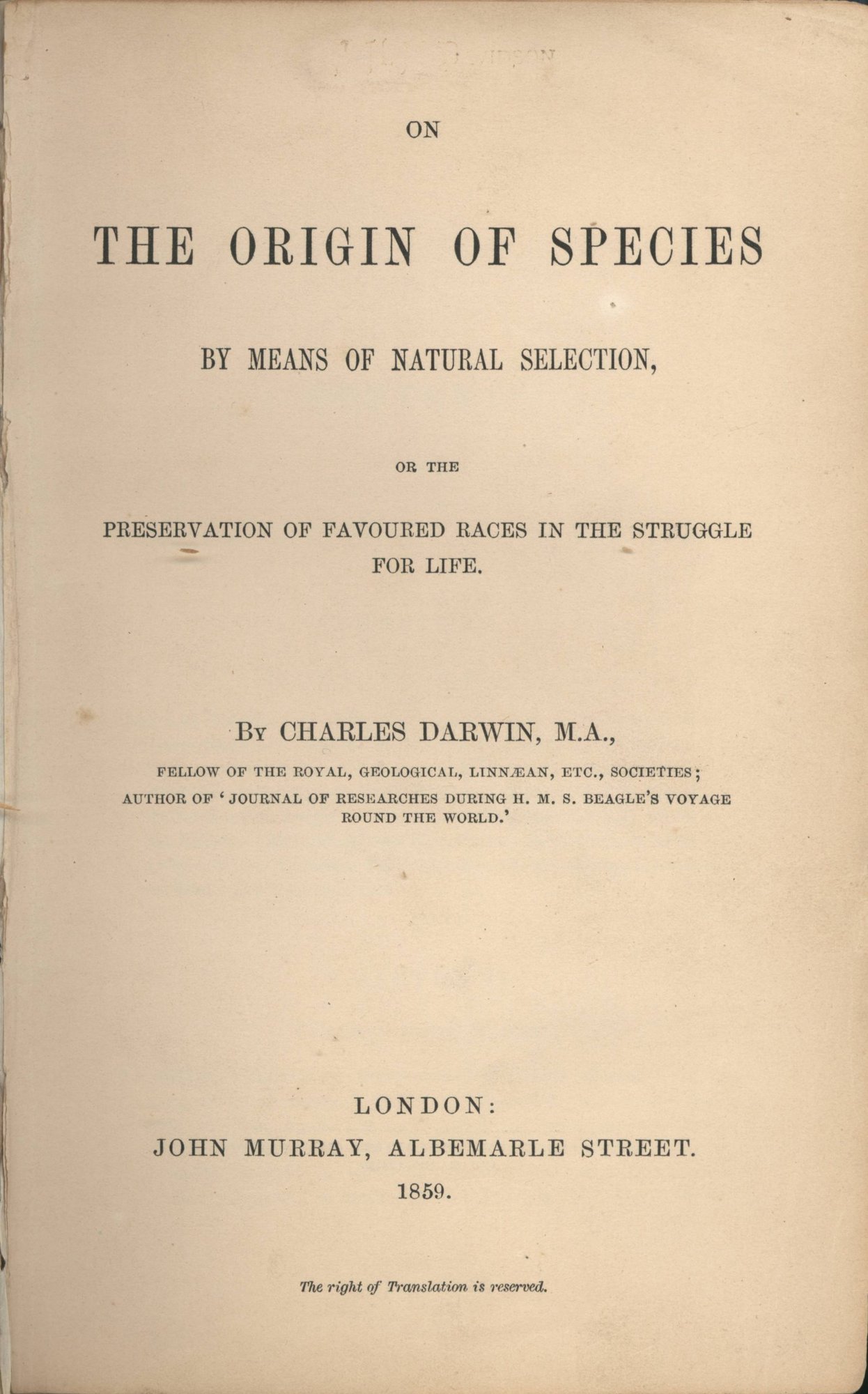
On the Origin of Species more completely, On the Origin of Species by Means of Natural Selection, or the Preservation of Favoured Races in the Struggle for Life, published on 24 November 1859, is a work of scientific literature by Charles Darwin that is considered to be the foundation of evolutionary biology. Darwin’s book introduced the scientific theory that populations evolve over the course of generations through a process of natural selection.
Read More About On the Origin of Species / Source
Silent Spring
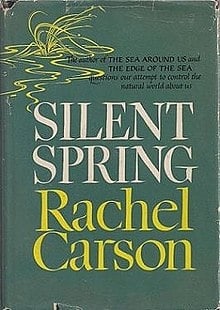
Silent Spring is an environmental science book by Rachel Carson. The book was published on September 27, 1962, documenting the adverse environmental effects caused by the indiscriminate use of pesticides. Carson accused the chemical industry of spreading disinformation, and public officials of accepting the industry’s marketing claims unquestioningly. Starting in the late 1950s, prior to the book’s publication, Carson had focused her attention on environmental conservation, especially environmental problems that she believed were caused by synthetic pesticides.
Read More About Silent Spring / Source
The Art Of War
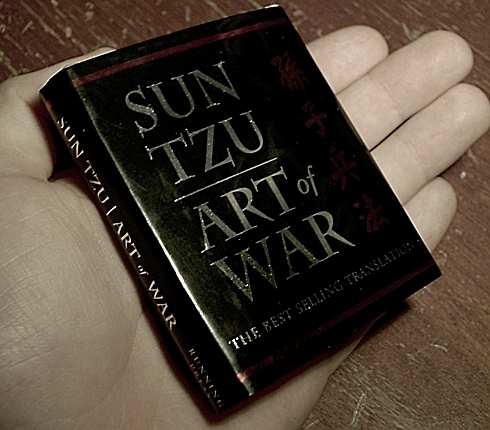
The Art of War is an ancient Chinese military treatise dating from the Late Spring and Autumn Period (roughly 5th century BC). The work, which is attributed to the ancient Chinese military strategist Sun Tzu (“Master Sun”, also spelled Sunzi), is composed of 13 chapters. Each one is devoted to a different set of skills (or “art”) related to warfare and how it applies to military strategy and tactics. For almost 1,500 years it was the lead text in an anthology that was formalized as the Seven Military Classics by Emperor Shenzong of Song in 1080.
Read More About The Art Of War / Source
The Autobiography Of Malcolm X
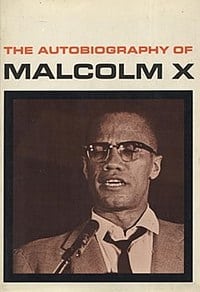
The Autobiography of Malcolm X was published in 1965, the result of a collaboration between human rights activist Malcolm X and journalist Alex Haley. Haley coauthored the autobiography based on a series of in-depth interviews he conducted between 1963 and Malcolm X’s 1965 assassination. The Autobiography is a spiritual conversion narrative that outlines Malcolm X’s philosophy of black pride, black nationalism, and pan-Africanism.
Read More About The Autobiography Of Malcolm X / Source
The Color Of Water
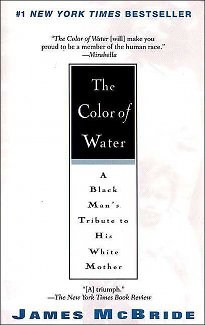
The Color of Water: A Black Man’s Tribute to His White Mother, is the autobiography and memoir of James McBride first published in 1995; it is also a tribute to his mother, whom he calls Mommy, or Ma. The chapters alternate between James McBride’s descriptions of his early life and first-person accounts of his mother Ruth’s life, mostly taking place before her son was born.
Read More About The Color Of Water / Source
The Color Purple
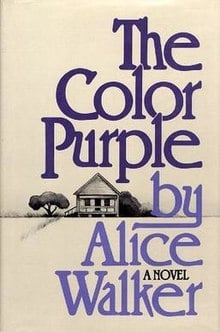
The Color Purple is a 1982 epistolary novel by American author Alice Walker which won the 1983 Pulitzer Prize for Fiction and the National Book Award for Fiction. It was later adapted into a film and musical of the same name. The novel has been the frequent target of censors and appears on the American Library Association list of the 100 Most Frequently Challenged Books of 2000–2009 at number seventeen because of the sometimes explicit content, particularly in terms of violence.
Read More About The Color Purple / Source
The Devil In The White City
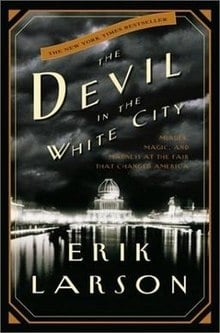
This book is set in Chicago in 1893, interweaving the true tales of Daniel Burnham, the architect behind the 1893 World’s Fair, and H. H. Holmes, a serial killer who lured his victims to their deaths in his elaborately constructed “Murder Castle”. The Devil in the White City is divided into four parts, the first three happening in Chicago between 1890 and 1893, while part four of the book takes place in Philadelphia circa 1895.
Read More About The Devil In The White City / Source
The Diary Of A Young Girl
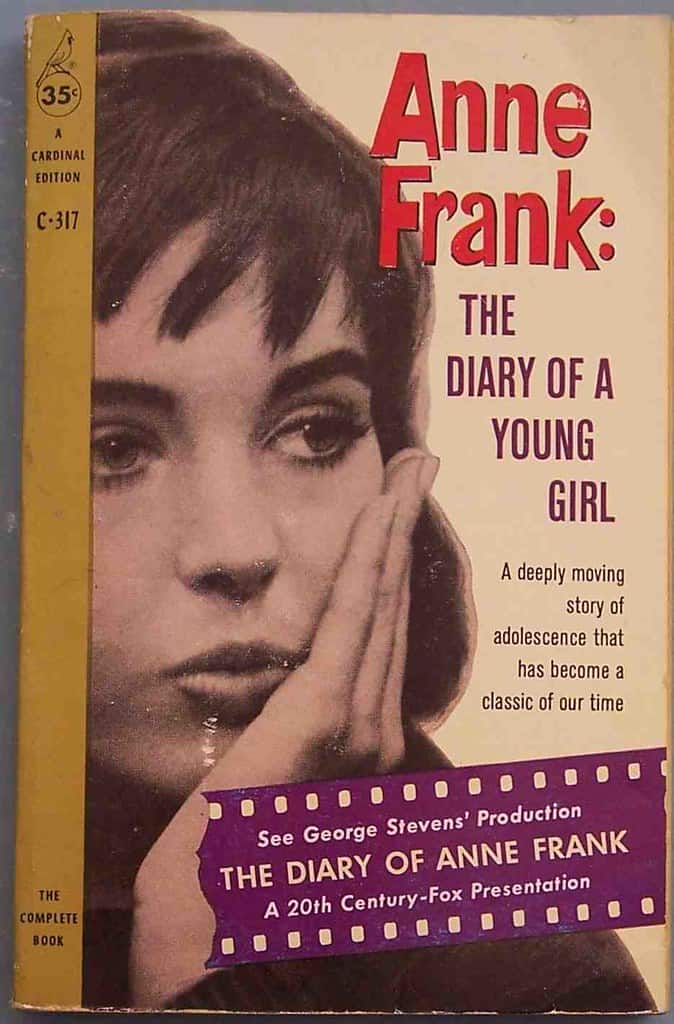
The Diary of a Young Girl, also known as The Diary of Anne Frank, is a book of the writings from the Dutch-language diary kept by Anne Frank while she was in hiding for two years with her family during the Nazi occupation of the Netherlands. The family was apprehended in 1944, and Anne Frank died of typhus in the Bergen-Belsen concentration camp in 1945.
Read More About The Diary Of A Young Girl / Source
The Immortal Life Of Henrietta Lacks
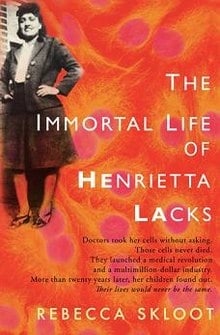
The Immortal Life of Henrietta Lacks (2010) is a non-fiction book by American author Rebecca Skloot. It was the 2011 winner of the National Academies Communication Award for best creative work that helps the public understanding of topics in science, engineering or medicine.
Read More About The Immortal Life Of Henrietta Lacks / Source
The Liars' Club
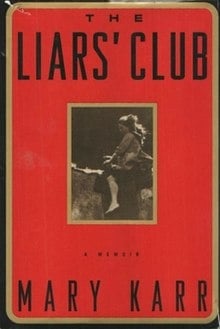
The Liars’ Club is a memoir by the American author Mary Karr. Published in 1995 by Viking Adult, the book tells the story of Karr’s childhood in the 1960s in a small industrial town in Southeast Texas. The title refers to her father and his friends who would gather together to drink and tell stories when they were not working at the local oil refinery or the chemical plant.
Read More About The Liars' Club / Source
The Little Prince
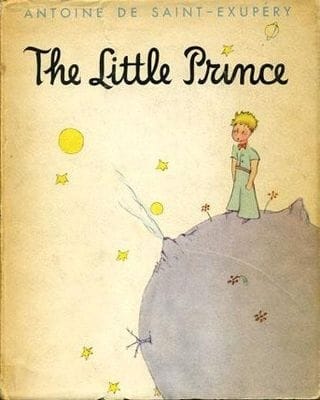
The Little Prince French is a novella by French aristocrat, writer, and aviator Antoine de Saint-Exupéry. It was first published in English and French in the US by Reynal & Hitchcock in April 1943, and posthumously in France following the liberation of France as Saint-Exupéry’s works had been banned by the Vichy Regime.
Read More About The Little Prince / Source
The Looming Tower
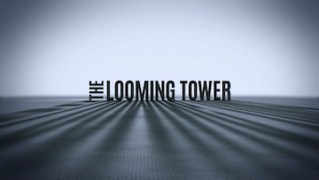
The Looming Tower is an American television miniseries, based on Lawrence Wright’s 2006 book of the same name, which premiered on Hulu on February 28, 2018. The 10-episode drama series was created and executive produced by Dan Futterman, Alex Gibney, and Wright. Futterman also acted as the series’s showrunner and Gibney directed the first episode.
Read More About The Looming Tower / Source
The Man Who Mistook His Wife For A Hat
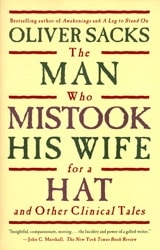
The Man Who Mistook His Wife for a Hat and Other Clinical Tales is a 1985 book by neurologist Oliver Sacks describing the case histories of some of his patients. Sacks chose the title of the book from the case study of one of his patients who has visual agnosia, a neurological condition that leaves him unable to recognize faces and objects.
Read More About The Man Who Mistook His Wife For A Hat / Source
The Myth Of Sisyphus

The Myth of Sisyphus is a 1942 philosophical essay by Albert Camus. Influenced by philosophers such as Søren Kierkegaard, Arthur Schopenhauer, and Friedrich Nietzsche, Camus introduces his philosophy of the absurd. The absurd lies in the juxtaposition between the fundamental human need to attribute meaning to life and the “unreasonable silence” of the universe in response.
Read More About The Myth Of Sisyphus / Source
The Odyssey
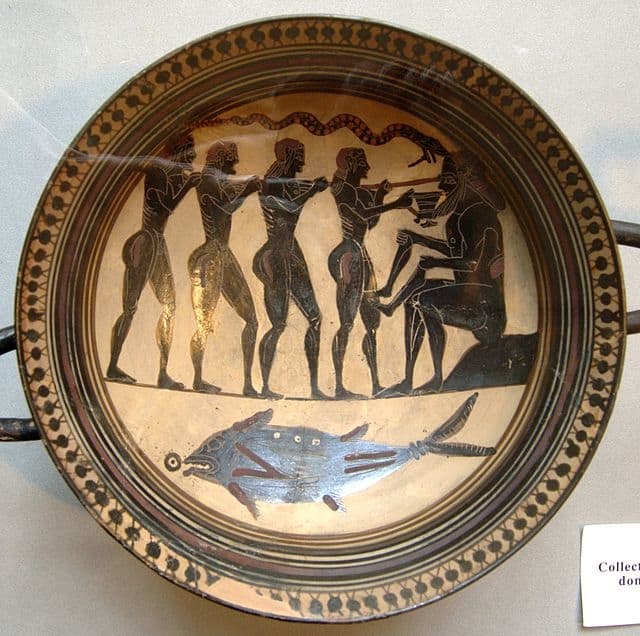
The Odyssey is one of two major ancient Greek epic poems attributed to Homer. It is one of the oldest extant works of literature still read by contemporary audiences. As with the Iliad, the poem is divided into 24 books. It follows the Greek hero Odysseus, king of Ithaca, and his journey home after the Trojan War.
Read More About The Odyssey / Source
The Power Broker
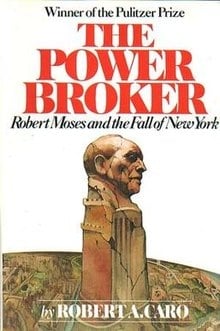
The Power Broker: Robert Moses and the Fall of New York is a 1974 biography of Robert Moses by Robert Caro. The book focuses on the creation and use of power in local and state politics, as witnessed through Moses’ use of unelected positions to design and implement dozens of highways and bridges, sometimes at great cost to the communities he nominally served.
Read More About The Power Broker / Source
The Republic

The Republic is a Socratic dialogue, authored by Plato around 375 BC, concerning justice , the order and character of the just city-state, and the just man. It is Plato’s best-known work, and has proven to be one of the world’s most influential works of philosophy and political theory, both intellectually and historically.
Read More About The Republic / Source
The Right Stuff
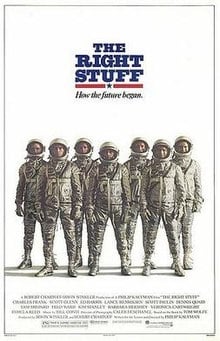
The Right Stuff is a 1983 American epic historical drama film written for the screen and directed by Philip Kaufman. It is based on the 1979 book of the same name by Tom Wolfe. It follows the Navy, Marine, and Air Force test pilots who were involved in aeronautical research at Edwards Air Force Base, California, as well as the Mercury Seven, the seven military pilots who were selected to be the astronauts for Project Mercury, the first human spaceflight by the United States.
Read More About The Right Stuff / Source
The Stranger
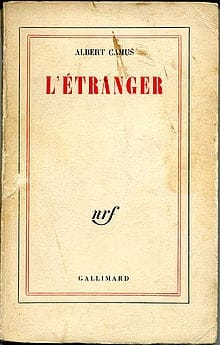
The Stranger’s first edition consisted of only 4,400 copies, which was so few that it could not be a best-seller. Since the novella was published during the Nazi occupation of France, there was a possibility that the Propaganda-Staffel would censor it, but a representative of the Occupation authorities felt it contained nothing damaging to their cause, so it was published without omissions.
Read More About The Stranger / Source
The Year Of Magical Thinking
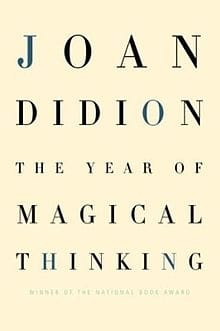
The Year of Magical Thinking (2005), by Joan Didion (b. 1934), is an account of the year following the death of the author’s husband John Gregory Dunne (1932–2003). Published by Knopf in October 2005, The Year of Magical Thinking was immediately acclaimed as a classic book about mourning.
Read More About The Year Of Magical Thinking / Source
Unbroken: A World War Ii Story Of Survival, Resilience And Redemption
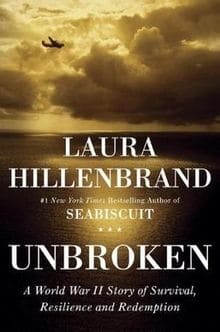
Unbroken: A World War II Story of Survival, Resilience, and Redemption is a 2010 non-fiction book by Laura Hillenbrand. Unbroken is a biography of World War II veteran Louis Zamperini, a former Olympic track star who survived a plane crash in the Pacific Theater, spent 47 days drifting on a raft, and then survived more than two and a half years as a prisoner of war (POW) in three Japanese POW camps.
Read More About Unbroken: A World War Ii Story Of Survival, Resilience And Redemption / Source
A Short History Of Nearly Everything
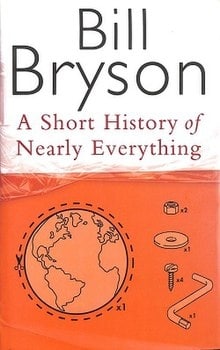
A Short History of Nearly Everything by American-British author Bill Bryson is a popular science book that explains some areas of science, using easily accessible language that appeals more to the general public than many other books dedicated to the subject. It was one of the bestselling popular science books of 2005 in the United Kingdom, selling over 300,000 copies.
Read More About A Short History Of Nearly Everything / Source
How To Win Friends And Influence People
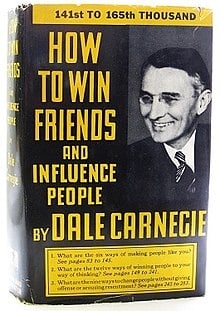
How to Win Friends and Influence People is a self-help book written by Dale Carnegie, published in 1936. Over 30 million copies have been sold worldwide, making it one of the best-selling books of all time. In 2011, it was number 19 on Time Magazine’s list of the 100 most influential books.
Read More About How To Win Friends And Influence People / Source
The Omnivore's Dilemma
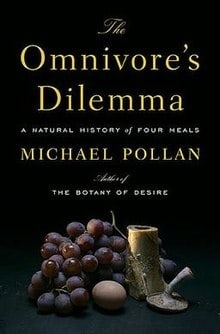
The Omnivore’s Dilemma: A Natural History of Four Meals is a nonfiction book written by American author Michael Pollan published in 2006. As omnivores, humans are faced with a wide variety of food choices. In the book, Pollan investigates the environmental and animal welfare impacts of various food choices.
Read More About The Omnivore's Dilemma / Source
Moneyball: The Art Of Winning An Unfair Game
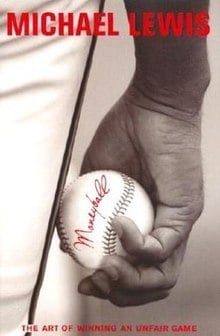
Moneyball: The Art of Winning an Unfair Game is a book by Michael Lewis, published in 2003, about the Oakland Athletics baseball team and its general manager Billy Beane. Its focus is the team’s analytical, evidence-based, sabermetric approach to assembling a competitive baseball team despite Oakland’s small budget. A film based on Lewis’ book, starring Brad Pitt and Jonah Hill, was released in 2011.
Read More About Moneyball: The Art Of Winning An Unfair Game / Source
Evicted: Poverty And Profit In The American City
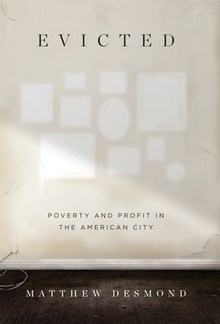
Evicted: Poverty and Profit in the American City is a 2016 non-fiction book by the American author Matthew Desmond. Set in the poorest areas of Milwaukee, Wisconsin, the book follows eight families struggling to pay rent to their landlords during the financial crisis of 2007–2008. It highlights the issues of extreme poverty, affordable housing, and economic exploitation in the United States.
Read More About Evicted: Poverty And Profit In The American City / Source
On Writing
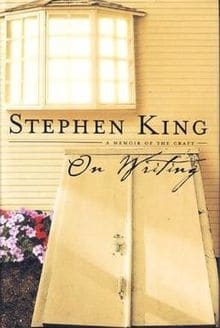
On Writing: A Memoir of the Craft is a memoir by American author Stephen King that describes his experiences as a writer and his advice for aspiring writers. Originally published in 2000 by Charles Scribner’s Sons, On Writing is King’s first book after he was involved in a car accident a year earlier.
Read More About On Writing / Source
Persepolis
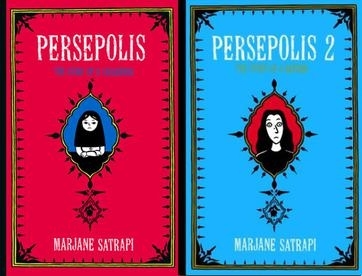
Persepolis is Marjane Satrapi’s memoir of growing up in Iran during the Islamic Revolution. In powerful black-and-white comic strip images, Satrapi tells the story of her life in Tehran from ages six to fourteen, years that saw the overthrow of the Shah’s regime, the triumph of the Islamic Revolution, and the devastating effects of war with Iraq.
Read More About Persepolis / Source
A Grief Observed
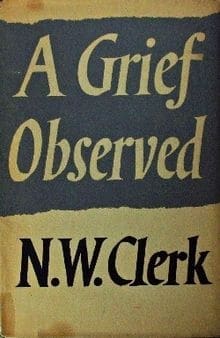
A Grief Observed is a collection of C. S. Lewis’s reflections on the experience of bereavement following the death of his wife, Joy Davidman, in 1960. The book was first published in 1961 under the pseudonym N.W. Clerk, as Lewis wished to avoid identification as the author. Though republished in 1963, after his death, under his own name, the text still refers to his wife as “H”
Read More About A Grief Observed / Source
The Wonderful Adventures Of Mrs. Seacole In Many Land
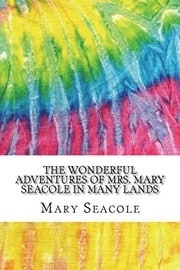
Mary Seacole was born a free black woman in Jamaica of the early 19th century. In her long and varied life, she was to travel in Central America, Russia and Europe, find work as a inn-keeper and as a doctress during the Crimean War, and become a famed heroine, the author of her own biography, in Britain. As this autobiography shows, Mary Seacole had a sharp instinct for hypocrisy as well as a ripe taste for sarcasm.
Read More About The Wonderful Adventures Of Mrs. Seacole In Many Land / Source
Walden
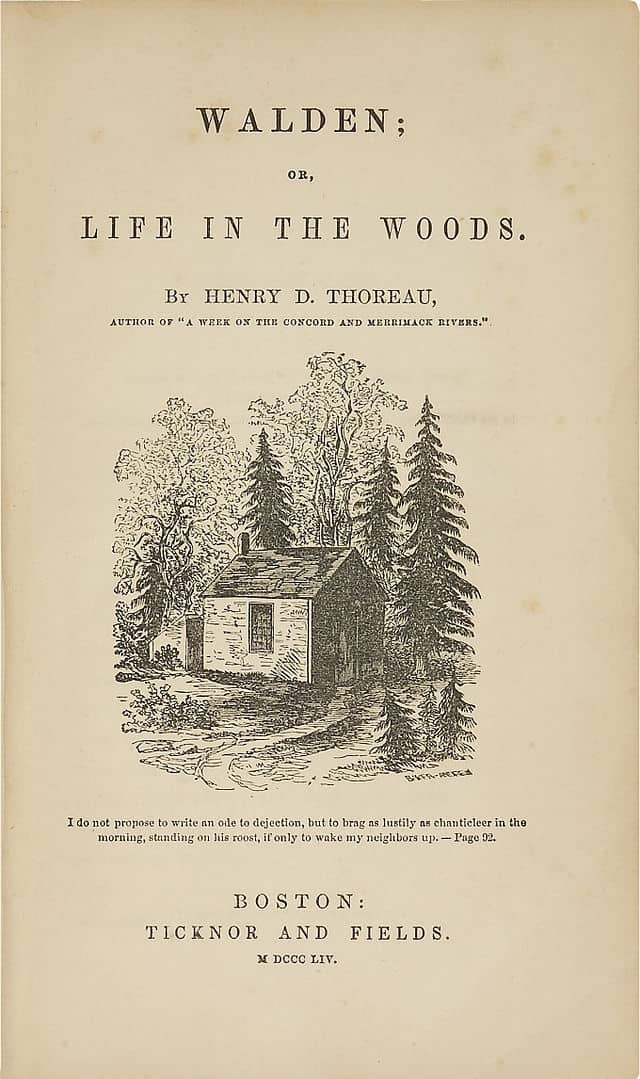
Walden or, Life in the Woods is a book by American transcendentalist writer Henry David Thoreau. The text is a reflection upon simple living in natural surroundings. The work is part personal declaration of independence, social experiment, voyage of spiritual discovery, satire, and—to some degree—a manual for self-reliance.
Read More About Walden / Source
The Happiest Man on Earth

Eddie Jaku always considered himself a German first, a Jew second. He was proud of his country. But all of that changed in November 1938, when he was beaten, arrested and taken to a concentration camp.
Read More About The Happiest Man on Earth / Source
The Kindness Method
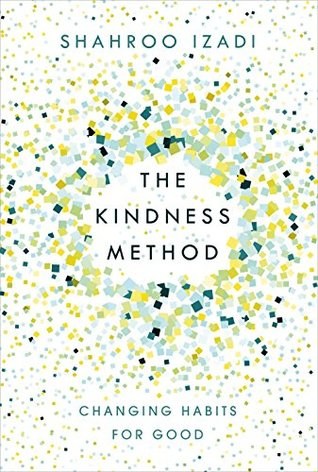
The Kindness Method is the key to breaking unwanted habits—for good! Combining her own therapeutic style, personal experiences, and techniques learned from working in the field of substance abuse, Shahroo Izadi shares simple steps that strengthen your willpower like a muscle, allowing you to sustain your motivation and make lasting change in your life.
Read More About The Kindness Method / Source
Burial Rites
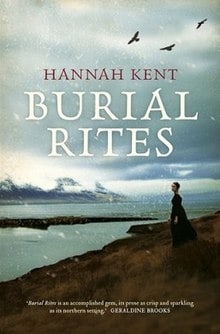
Burial Rites tells the story of Agnes Magnúsdóttir, a servant in northern Iceland who was condemned to death after the murder of two men, one of whom was her employer, and became the last woman put to death in Iceland.
Read More About Burial Rites / Source
The Sun Also Rises
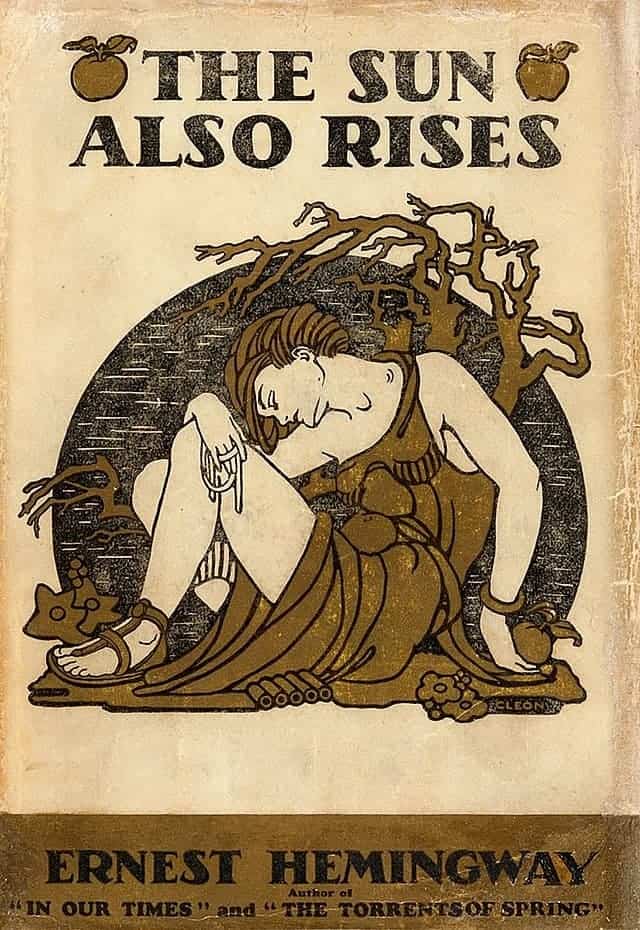
The Sun Also Rises is a 1926 novel by American writer Ernest Hemingway, his first, that portrays American and British expatriates who travel from Paris to the Festival of San Fermín in Pamplona to watch the running of the bulls and the bullfights. An early and enduring modernist novel, it received mixed reviews upon publication.
Read More About The Sun Also Rises / Source
The Things They Carried
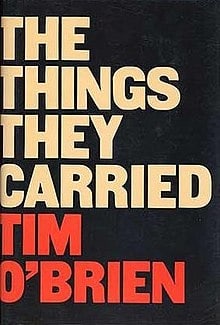
The Things They Carried (1990) is a collection of linked short stories by American novelist Tim O’Brien, about a platoon of American soldiers fighting on the ground in the Vietnam War. His third book about the war, it is based upon his experiences as a soldier in the 23rd Infantry Division.
Read More About The Things They Carried / Source
The Three Muskateers
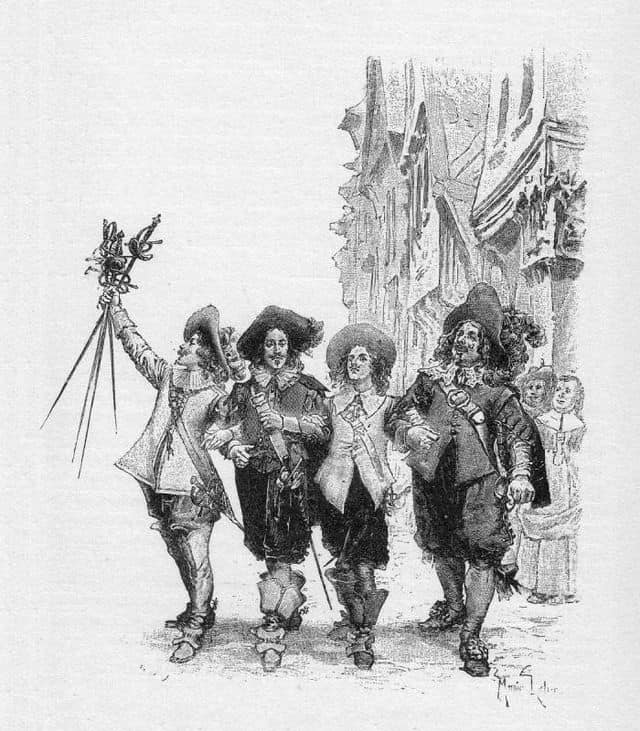
The Three Musketeers (French: Les Trois Mousquetaires, is a French historical adventure novel written in 1844 by French author Alexandre Dumas. It is in the swashbuckler genre, which has heroic, chivalrous swordsmen who fight for justice.
Read More About The Three Muskateers / Source
The Woman in White

The Woman in White is Wilkie Collins’s fifth published novel, written in 1859. It is a mystery novel and falls under the genre of “sensation novels”. The story is an early example of detective fiction with protagonist Walter Hartright employing many of the sleuthing techniques of later private detectives.
Read More About The Woman in White / Source
Things Fall Apart
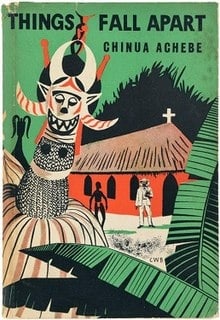
Things Fall Apart is the debut novel by Nigerian author Chinua Achebe, first published in 1958. It depicts pre-colonial life in the southeastern part of Nigeria and the arrival of Europeans during the late 19th century. It is seen as the archetypal modern African novel in English, and one of the first to receive global critical acclaim.
Read More About Things Fall Apart / Source
Treasure Island
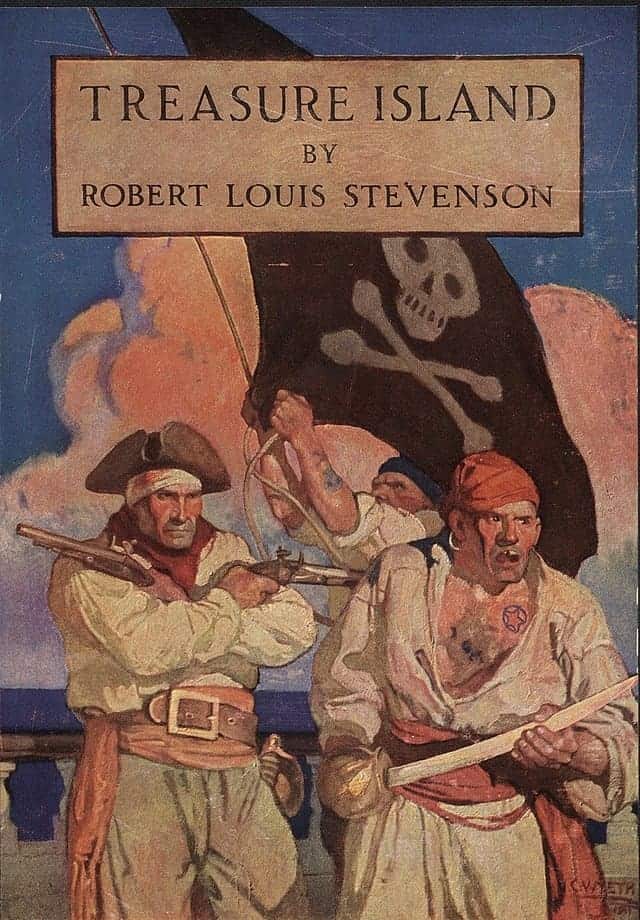
Treasure Island is an adventure novel by Scottish author Robert Louis Stevenson, narrating a tale of “buccaneers and buried gold”, serialized 1881–82. Its influence is enormous on popular perceptions of pirates, making popular such elements as treasure maps marked with an “X”, schooners, the Black Spot, tropical islands, and one-legged seamen bearing parrots on their shoulders.
Read More About Treasure Island / Source
War And Peace
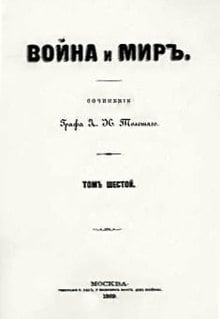
War and Peace is a literary work mixed with chapters on history and philosophy by the Russian author Leo Tolstoy, first published serially, then published in its entirety in 1869. It is regarded as one of Tolstoy’s finest literary achievements and remains an internationally praised classic of world literature.
Read More About War And Peace / Source
White Teeth
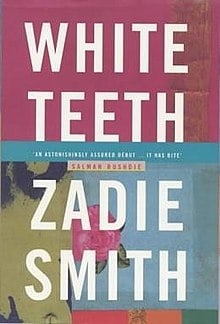
White Teeth is a 2000 novel by the British author Zadie Smith. It focuses on the later lives of two wartime friends—the Bangladeshi Samad Iqbal and the Englishman Archie Jones—and their families in London. The novel is centred around Britain’s relationship with immigrants from the British Commonwealth.
Read More About White Teeth / Source
Wolf Hall
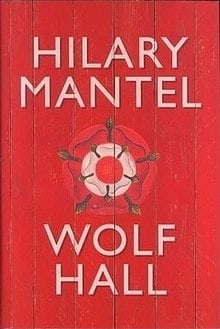
Wolf Hall is a 2009 historical novel by English author Hilary Mantel, published by Fourth Estate, named after the Seymour family’s seat of Wolfhall, or Wulfhall, in Wiltshire. Set in the period from 1500 to 1535, Wolf Hall is a sympathetic fictionalised biography documenting the rapid rise to power of Thomas Cromwell in the court of Henry VIII through to the death of Sir Thomas More.
Read More About Wolf Hall / Source
Wuthering Heights
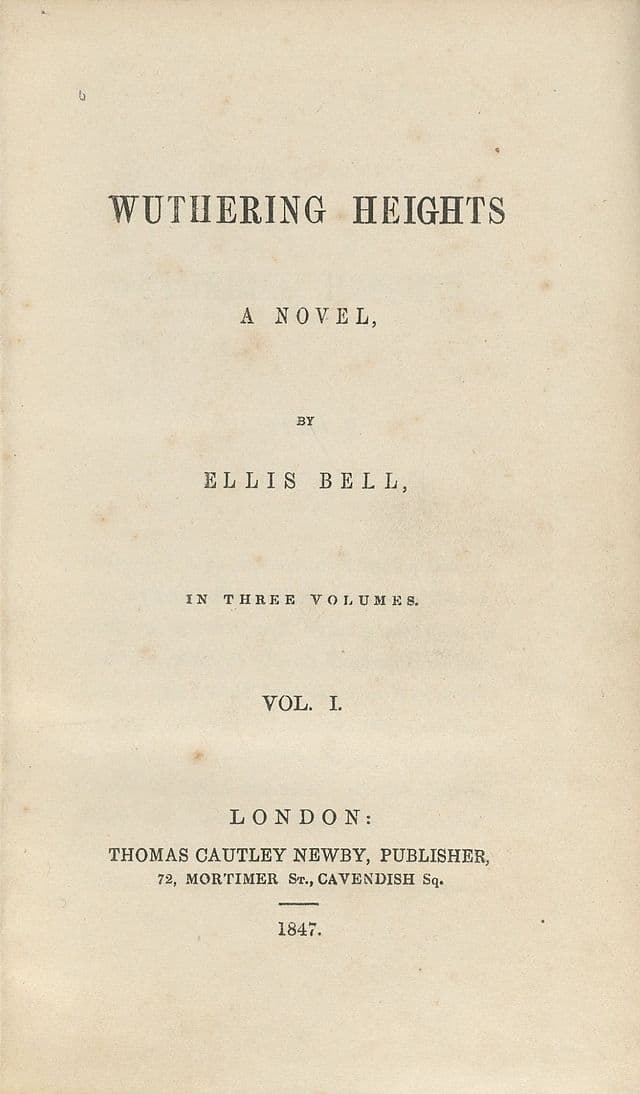
Wuthering Heights is an 1847 novel by Emily Brontë, initially published under the pseudonym Ellis Bell. It concerns two families of the landed gentry living on the West Yorkshire moors, the Earnshaws and the Lintons, and their turbulent relationships with Earnshaw’s adopted son, Heathcliff.
Read More About Wuthering Heights / Source
The Nightingale
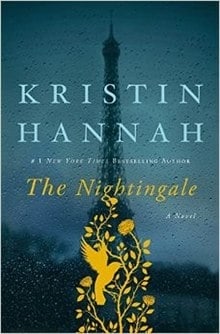
The Nightingale is a historical fiction novel by American author Kristin Hannah published by St. Martin’s Press in 2015. The book tells the story of two sisters in France during World War II and their struggle to survive and resist the German occupation of France.
Read More About The Nightingale / Source
The Outsiders
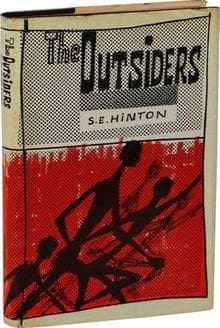
The Outsiders is a coming-of-age novel by S. E. Hinton, first published in 1967 by Viking Press. Hinton was 15 when she started writing the novel but did most of the work when she was 16 and a junior in high school. Hinton was 18 when the book was published.
Read More About The Outsiders / Source
The Pillars Of Earth
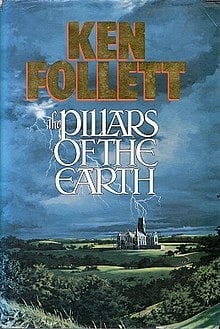
The Pillars of the Earth is a historical novel by Welsh author Ken Follett published in 1989 about the building of a cathedral in the fictional town of Kingsbridge, England. Set in the 12th century, the novel covers the time between the sinking of the White Ship and the murder of Thomas Becket, but focuses primarily on the Anarchy.
Read More About The Pillars Of Earth / Source
The Remains Of The Day
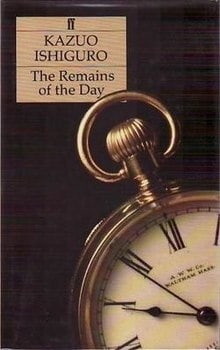
The Remains of the Day is a 1989 novel by the Nobel Prize-winning British author Kazuo Ishiguro. The protagonist, Stevens, is a butler with a long record of service at Darlington Hall, a stately home near Oxford, England. In 1956, he takes a road trip to visit a former colleague, and reminisces about events at Darlington Hall in the 1920s and 1930s.
Read More About The Remains Of The Day / Source
The Master and Margarita
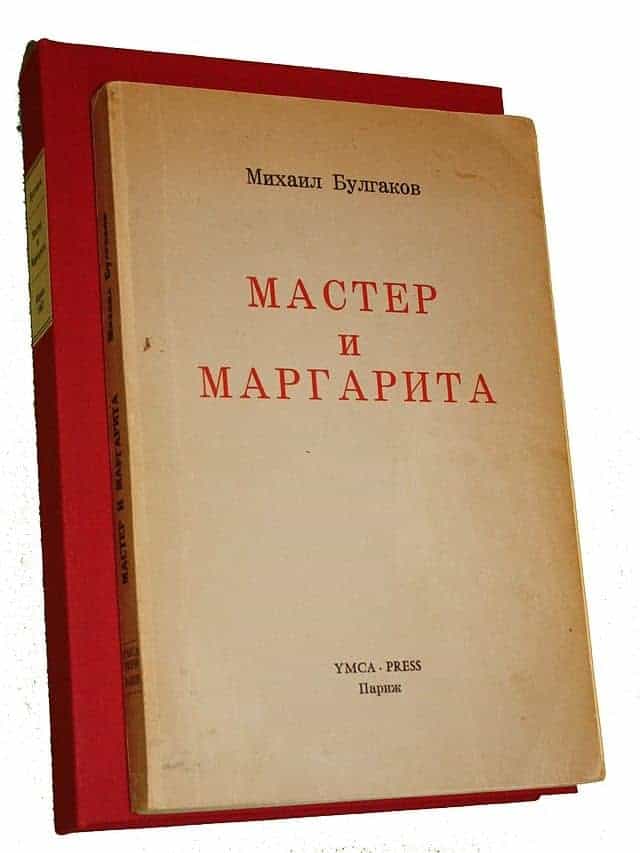
The Master and Margarita is a novel by Russian writer Mikhail Bulgakov, written in the Soviet Union between 1928 and 1940 during Stalin’s regime. A censored version was published in Moscow magazine in 1966–1967, after the writer’s death.
Read More About The Master and Margarita / Source
The Code of the Woosters
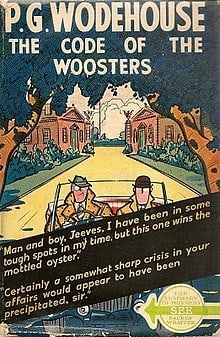
The Code of the Woosters is a novel by P. G. Wodehouse, first published on 7 October 1938, in the United Kingdom by Herbert Jenkins, London, and in the United States by Doubleday, Doran, New York. It was serialised in The Saturday Evening Post (US) from 16 July to 3 September 1938 and in the London Daily Mail from 14 September to 6 October 1938.
Read More About The Code of the Woosters / Source
The Godfather
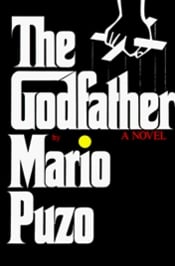
The Godfather is a crime novel by American author Mario Puzo. Originally published in 1969 by G. P. Putnam’s Sons, the novel details the story of a fictional Mafia family in New York City (and Long Beach, New York), headed by Vito Corleone. Puzo’s dedication for The Godfather is “For Anthony Cleri”.
Read More About The Godfather / Source
The Grapes of Wrath
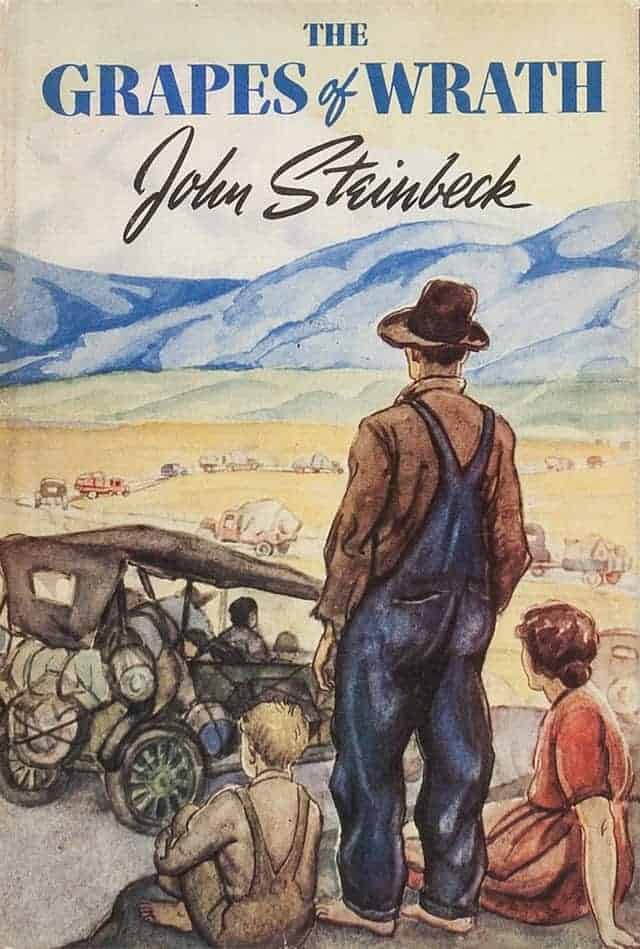
The Grapes of Wrath is an American realist novel written by John Steinbeck and published in 1939. The book won the National Book Award and Pulitzer Prize for fiction, and it was cited prominently when Steinbeck was awarded the Nobel Prize in 1962.
Read More About The Grapes of Wrath / Source
The Iliad
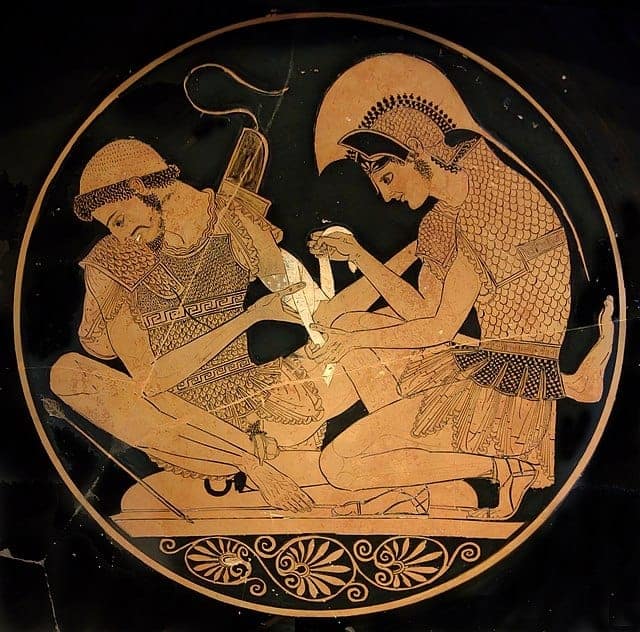
The Iliad is an ancient Greek epic poem in dactylic hexameter, traditionally attributed to Homer. Usually considered to have been written down circa the 8th century BC, the Iliad is among the oldest extant works of Western literature, along with the Odyssey, another epic poem attributed to Homer which tells of Odysseus’s experiences after the events of the Iliad.
Read More About The Iliad / Source
The Joy Luck Club
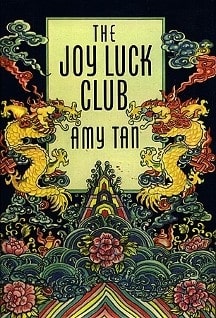
The Joy Luck Club is a 1989 novel written by Amy Tan. It focuses on four Chinese American immigrant families in San Francisco who start a club known as The Joy Luck Club, playing the Chinese game of mahjong for money while feasting on a variety of foods.
Read More About The Joy Luck Club / Source
The Book Thief
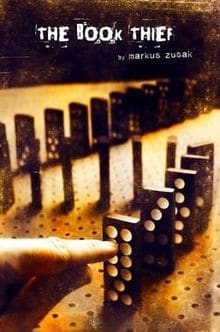
The Book Thief is a historical novel by the Australian author Markus Zusak, and is one of his most popular works. Published in 2005, The Book Thief became an international bestseller and was translated into 63 languages and sold 16 million copies.
Read More About The Book Thief / Source
The Brief Wondrous Life of Oscar Wao
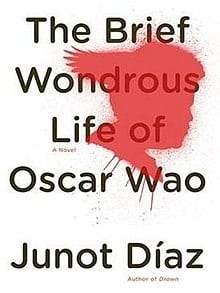
The Brief Wondrous Life of Oscar Wao is a novel written by Dominican American author Junot Díaz, published in 2007. Although a work of fiction, the novel is set in New Jersey in the United States, where Díaz was raised, and it deals with the Dominican Republic experience under dictator Rafael Trujillo.
Read More About The Brief Wondrous Life of Oscar Wao / Source
The Burning Chambers
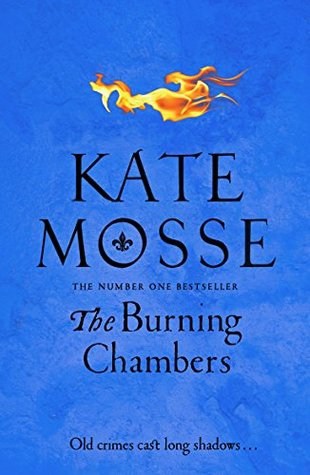
Nineteen-year-old Minou Joubert receives an anonymous letter at her father’s bookshop. Sealed with a distinctive family crest, it contains just five words: SHE KNOWS THAT YOU LIVE. But before Minou can decipher the mysterious message, a chance encounter with a young Huguenot convert, Piet Reydon, changes her destiny forever.
Read More About The Burning Chambers / Source
The Call of the Wild
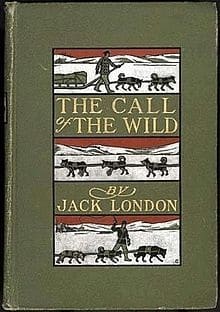
The Call of the Wild is a short adventure novel by Jack London, published in 1903 and set in Yukon, Canada, during the 1890s Klondike Gold Rush, when strong sled dogs were in high demand. The central character of the novel is a dog named Buck.
Read More About The Call of the Wild / Source
The Adventures of Huckleberry Finn
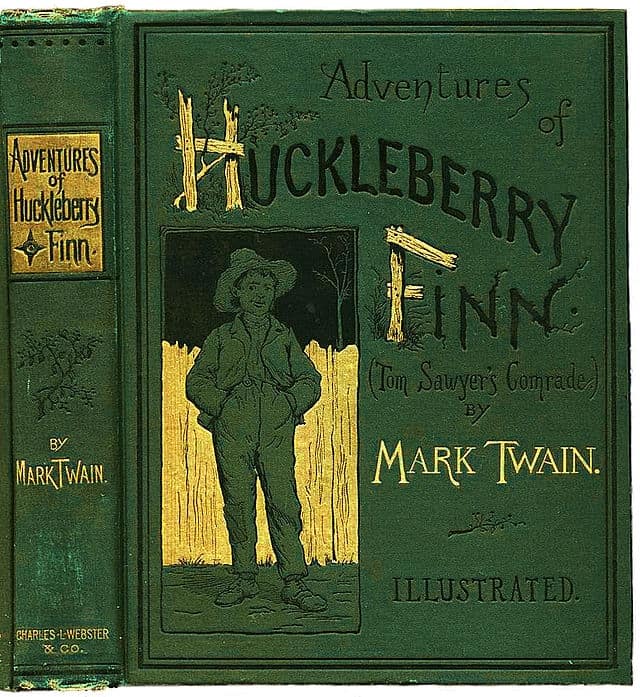
Adventures of Huckleberry Finn (or, as it is known in more recent editions, The Adventures of Huckleberry Finn) is a novel by American author Mark Twain, which was first published in the United Kingdom in December 1884 and in the United States in February 1885.
Read More About The Adventures of Huckleberry Finn / Source
The Age of Innocence
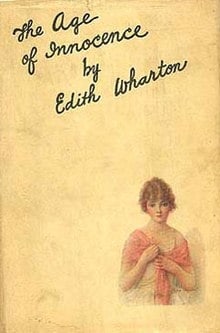
The Age of Innocence is a 1920 novel by American author Edith Wharton. It was her twelfth novel, and was initially serialized in 1920 in four parts, in the magazine Pictorial Review. Later that year, it was released as a book by D. Appleton & Company.
Read More About The Age of Innocence / Source
The Amazing Adventures of Kavalier and Clay

The Amazing Adventures of Kavalier & Clay is a 2000 novel by American author Michael Chabon that won the Pulitzer Prize for Fiction in 2001. The novel follows the lives of two Jewish cousins, Czech artist Joe Kavalier and Brooklyn-born writer Sammy Clay, before, during, and after World War II.
Read More About The Amazing Adventures of Kavalier and Clay / Source
Slaughterhouse-Five
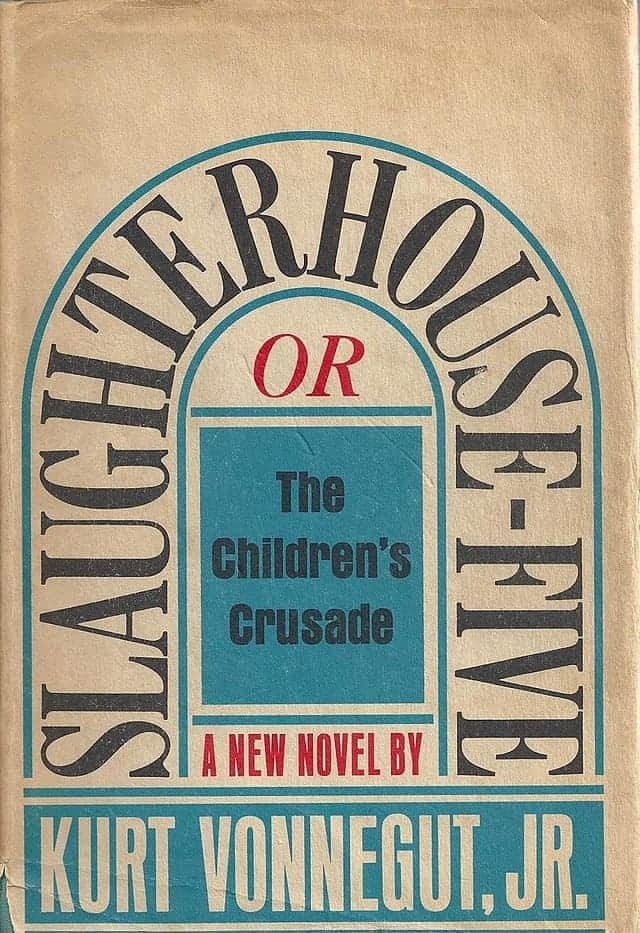
Slaughterhouse-Five, or, The Children’s Crusade: A Duty-Dance with Death is a science fiction infused anti-war novel by Kurt Vonnegut, first published in 1969. It follows the life and experiences of Billy Pilgrim, from his early years to his time as an American soldier and chaplain’s assistant during World War II.
Read More About Slaughterhouse-Five / Source
Shuggie Bain
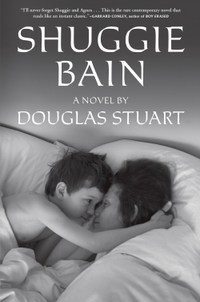
Shuggie Bain is the debut novel by Scottish-American writer Douglas Stuart, published in 2020. It tells the story of the youngest of the three children, Shuggie, growing up with his alcoholic mother, Agnes, in the 1980s, in a post-industrial working-class Glasgow, Scotland.
Read More About Shuggie Bain / Source
One Hundred Years Of Solitude
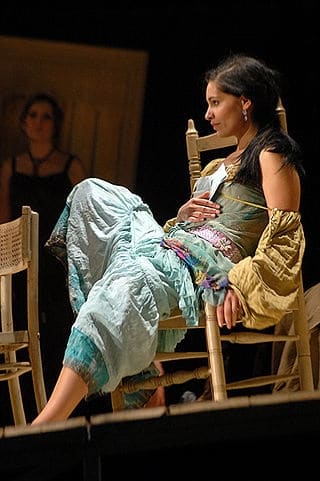
One Hundred Years of Solitude is a landmark 1967 novel by Colombian author Gabriel García Márquez that tells the multi-generational story of the Buendía family, whose patriarch, José Arcadio Buendía, founded the (fictitious) town of Macondo. The novel is often cited as one of the supreme achievements in literature.
Read More About One Hundred Years Of Solitude / Source
One Thousand and One Nights
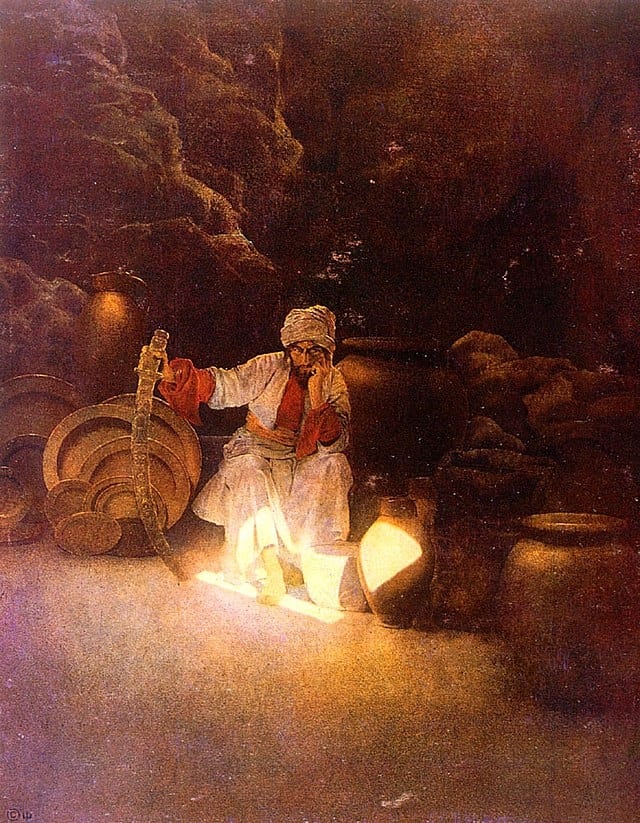
One Thousand and One Nights is a collection of Middle Eastern folk tales compiled in Arabic during the Islamic Golden Age. It is often known in English as the Arabian Nights, from the first English-language edition (c. 1706–1721), which rendered the title as The Arabian Nights’ Entertainment.
Read More About One Thousand and One Nights / Source
Daring Greatly: How The Courage To Be Vulnerable Transforms The Way We Live,love, Parent And Lead
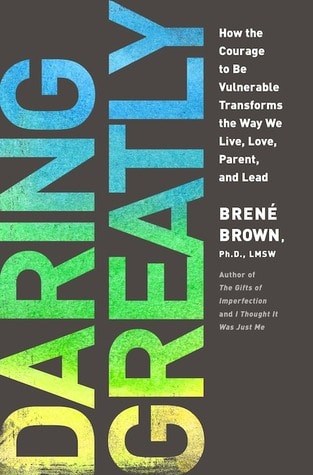
This book tells us about every day we experience the uncertainty, risks, and emotional exposure that define what it means to be vulnerable, or to dare greatly. Whether the arena is a new relationship, an important meeting, our creative process, or a difficult family conversation, we must find the courage to walk into vulnerability and engage with our whole hearts.
Night
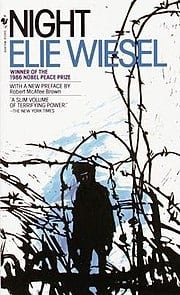
Night is a 1960 book by Elie Wiesel based on his Holocaust experiences with his father in the Nazi German concentration camps at Auschwitz and Buchenwald in 1944–1945, toward the end of the Second World War in Europe.
Read More About Night / Source
Team Of Rivals: The Political Genius Of Abraham Lincoln
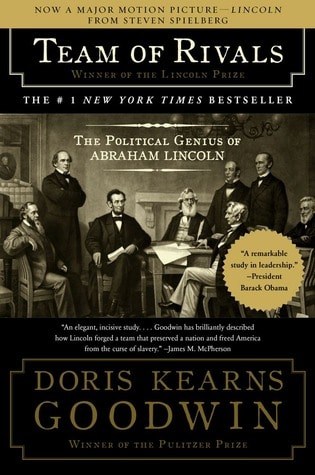
In this book On May 18, 1860, William H. Seward, Salmon P. Chase, Edward Bates, and Abraham Lincoln waited in their hometowns for the results from the Republican National Convention in Chicago. When Lincoln emerged as the victor, his rivals were dismayed and angry.
Read More About Team Of Rivals: The Political Genius Of Abraham Lincoln / Source
Existentialism Is a Humanism
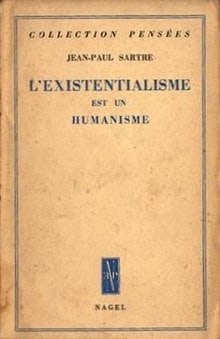
Existentialism Is a Humanism is a 1946 work by the philosopher Jean-Paul Sartre, based on a lecture by the same name he gave at Club Maintenant in Paris, on 29 October 1945. In early translations, Existentialism and Humanism was the title used in the United Kingdom; the work was originally published in the United States as Existentialism, and a later translation employs the original title.
Read More About Existentialism Is a Humanism / Source
Atlas
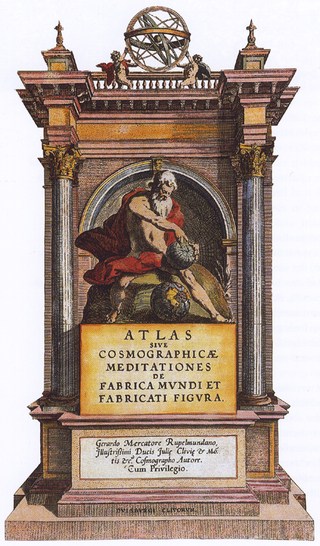
An atlas is a collection of maps; it is typically a bundle of maps of Earth or a region of Earth. Atlases have traditionally been bound into book form, but today many atlases are in multimedia formats. In addition to presenting geographic features and political boundaries, many atlases often feature geopolitical, social, religious and economic statistics. They also have information about the map and places in it.
Read More About Atlas / Source
The Alchemist
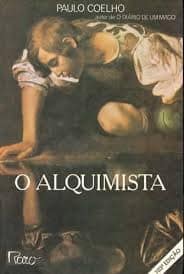
The Alchemist is a novel by Brazilian author Paulo Coelho that was first published in 1988. Originally written in Portuguese, it became a widely translated international bestseller. An allegorical novel, The Alchemist follows a young Andalusian shepherd in his journey to the pyramids of Egypt, after having a recurring dream of finding a treasure there.
Read More About The Alchemist / Source
The Brothers Karamazov
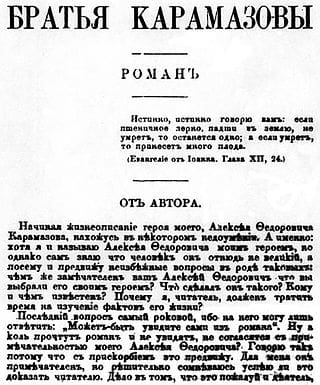
The Brothers Karamazov, also translated as The Karamazov Brothers, is the last novel by Russian author Fyodor Dostoevsky. Dostoevsky spent nearly two years writing The Brothers Karamazov, which was published as a serial in The Russian Messenger from January 1879 to November 1880. Dostoevsky died less than four months after its publication.
Read More About The Brothers Karamazov / Source
The Fountainhead
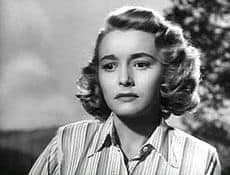
The Fountainhead is a 1943 novel by Russian-American author Ayn Rand, her first major literary success. The novel’s protagonist, Howard Roark, is an intransigent young architect, who battles against conventional standards and refuses to compromise with an architectural establishment unwilling to accept innovation. Roark embodies what Rand believed to be the ideal man, and his struggle reflects Rand’s belief that individualism is superior to collectivism.
Read More About The Fountainhead / Source
Arrival
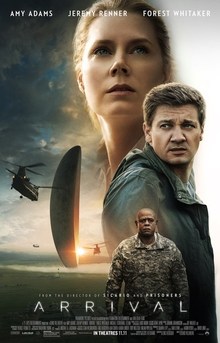
Arrival is a 2016 American science fiction drama film directed by Denis Villeneuve and adapted by Eric Heisserer, who conceived the movie as a spec script based on the 1998 short story “Story of Your Life” by Ted Chiang. It stars Amy Adams, Jeremy Renner, and Forest Whitaker.
Read More About Arrival / Source
One Flew Over The Cuckoo's Nest
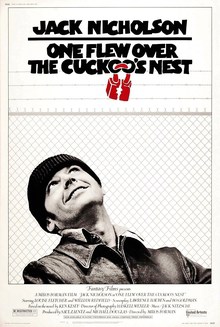
One Flew Over the Cuckoo’s Nest is a 1975 American psychological comedy-drama film directed by Miloš Forman, based on the 1962 novel of the same name by Ken Kesey. The film stars Jack Nicholson as Randle McMurphy, a new patient at a mental institution, and features a supporting cast of Louise Fletcher, Will Sampson, Danny DeVito, Sydney Lassick, William Redfield, as well as Christopher Lloyd and Brad Dourif in their film debuts.
Read More About One Flew Over The Cuckoo's Nest / Source
The Notebook
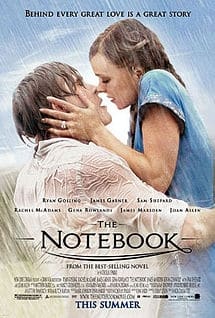
The Notebook is a 2004 American romantic drama film directed by Nick Cassavetes, written by Jeremy Leven and Jan Sardi, based on the 1996 novel of the same name by Nicholas Sparks. The film stars Ryan Gosling and Rachel McAdams as a young couple who fall in love in the 1940s.
Read More About The Notebook / Source
The Princess Bride
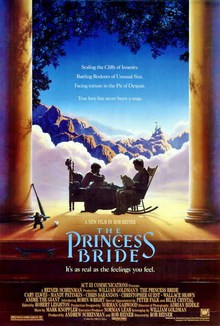
The Princess Bride is a 1987 American fantasy adventure comedy film directed and co-produced by Rob Reiner, starring Cary Elwes, Robin Wright, Mandy Patinkin, Chris Sarandon, Wallace Shawn, André the Giant, and Christopher Guest. Adapted by William Goldman from his 1973 novel The Princess Bride, it tells the story of a farmhand named Westley, accompanied by companions befriended along the way, who must rescue his true love Princess Buttercup from the odious Prince Humperdinck.
Read More About The Princess Bride / Source
The Wizard of Oz
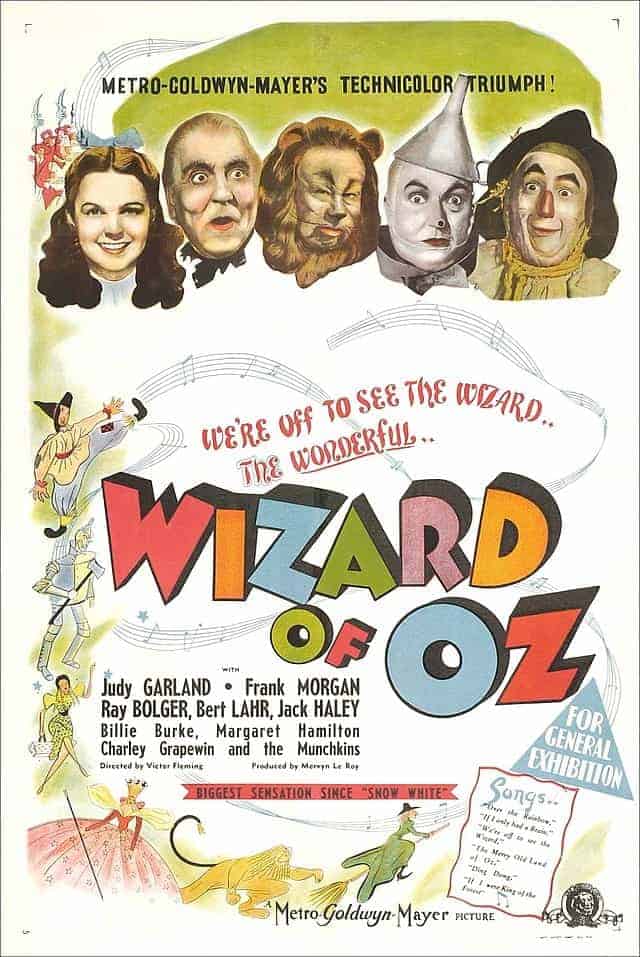
The Wizard of Oz is a 1939 American musical fantasy film produced by Metro-Goldwyn-Mayer. An adaptation of L. Frank Baum’s 1900 children’s fantasy novel The Wonderful Wizard of Oz, the film was primarily directed by Victor Fleming , and stars Judy Garland, Frank Morgan, Ray Bolger, Bert Lahr, Jack Haley, Billie Burke and Margaret Hamilton.
Read More About The Wizard of Oz / Source
To Kill a Mockingbird
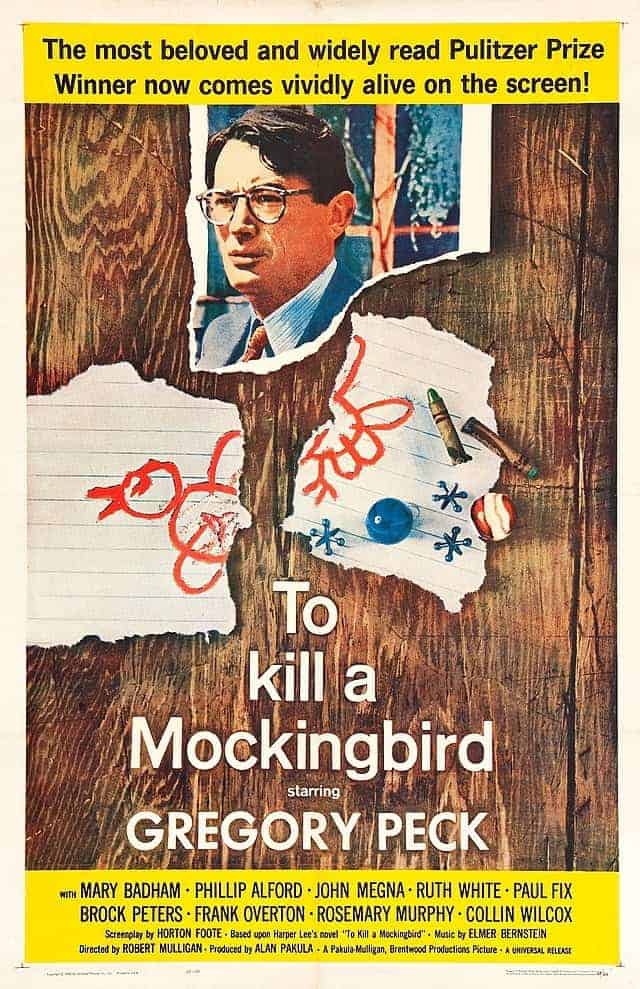
To Kill a Mockingbird is a 1962 American drama film directed by Robert Mulligan. The screenplay by Horton Foote is based on Harper Lee’s 1960 Pulitzer Prize–winning novel of the same name. It stars Gregory Peck as Atticus Finch and Mary Badham as Scout. To Kill a Mockingbird marked the film debuts of Robert Duvall, William Windom, and Alice Ghostley.
Read More About To Kill a Mockingbird / Source
Winnie-the-Pooh
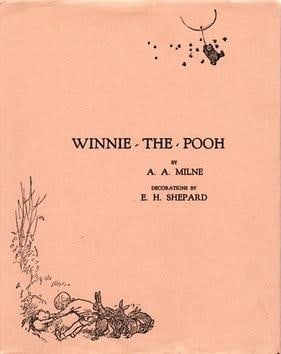
Winnie-the-Pooh is a children’s book by English author A. A. Milne and English illustrator E. H. Shepard. Published in 1926, it is a collection of short stories about an anthropomorphic teddy bear, Winnie-the-Pooh, and his friends Christopher Robin, Piglet, Eeyore, Owl, Rabbit, Kanga, and Roo. It is the first of two story collections by Milne about Winnie-the-Pooh, the second being The House at Pooh Corner (1928).
Milne and Shepard collaborated previously for English humour magazine Punch, and in 1924 created When We Were Very Young, a poetry collection. Among the characters in the poetry book was a teddy bear Shepard modeled after his son’s toy. Following this, Shepard encouraged Milne to write about his son Christopher Robin Milne’s toys, and so they became the inspiration for the characters in Winnie-the-Pooh.
The book was well-received at release, and was a commercial success, selling 150,000 copies before the end of the year. Critical analysis of the book has held that it represents a rural Arcadia, separated from real-world issues or problems, and is without purposeful subtext. More recently, criticism has been levelled at the lack of positive female characters, i.e. that the only female character, Kanga, is depicted as a bad mother. Winnie-the-Pooh has been translated into over fifty languages; a 1958 Latin translation, Winnie ille Pu, was the first foreign-language book to be featured on the New York Times Best Seller List, and the only book in Latin ever to have been featured. The stories and characters in the book have been adapted in other media, most notably by Disney beginning with Winnie the Pooh and the Honey Tree (1966).
Read More About Winnie-the-Pooh / Source
Where the Sidewalk Ends
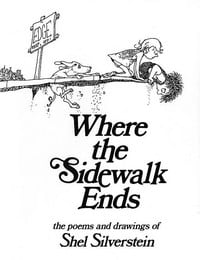
Where the Sidewalk Ends is a 1974 children’s poetry collection written and illustrated by Shel Silverstein. It was published by Harper and Row Publishers. The book’s poems address many common childhood concerns and also present purely fanciful stories and imagination inspiring images. Based on a 2007 online poll, the National Education Association list the book as one of its “Teachers’ Top 100 Books for Children.” Controversial because of profanity and subject matter, the book was banned in many libraries and schools.A 30th Anniversary Edition of the book appeared in 2004, and two audio editions (1983 and 2000) are also available.
Read More About Where the Sidewalk Ends / Source
Watership Down
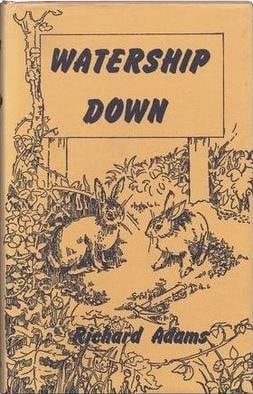
Watership Down is an adventure novel by English author Richard Adams, published by Rex Collings Ltd of London in 1972. Set in southern England, around Hampshire, the story features a small group of rabbits. Although they live in their natural wild environment, with burrows, they are anthropomorphised, possessing their own culture, language, proverbs, poetry, and mythology. Evoking epic themes, the novel follows the rabbits as they escape the destruction of their warren and seek a place to establish a new home (the hill of Watership Down), encountering perils and temptations along the way.
Watership Down was Richard Adams’ debut novel. It was rejected by several publishers before Collings accepted the manuscript; the published book then won the annual Carnegie Medal (UK), annual Guardian Prize (UK), and other book awards. The novel was adapted into an animated feature film in 1978 and, from 1999 to 2001, an animated children’s television series. In 2018, a drama of the story was made, which both aired in the UK and was made available on Netflix.
Adams completed a sequel almost 25 years later, in 1996, Tales from Watership Down, constructed as a collection of 19 short stories about El-ahrairah and the rabbits of the Watership Down warren.
Read More About Watership Down / Source
The Very Hungry Caterpillar
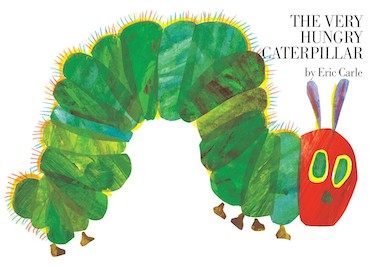
The Very Hungry Caterpillar is a children’s picture book designed, illustrated, and written by Eric Carle, first published by the World Publishing Company in 1969, later published by Penguin Putnam. The book features a very hungry caterpillar who eats his way through a wide variety of foodstuffs before pupating and emerging as a butterfly. The winner of many children’s literature awards and a major graphic design award, it has sold almost 50 million copies worldwide. It has been described as having sold the equivalent of a copy per minute since its publication, and as “one of the greatest childhood classics of all time”. It was voted the number two children’s picture book in a 2012 survey of School Library Journal readers.The Very Hungry Caterpillar is Carle’s third book, and uses distinctive collage illustrations that were innovative at the time of publication, ‘eaten’ holes in the pages, and simple text with educational themes – counting, the days of the week, foods, and a butterfly’s life stages. It teaches children how to count and to make one-to-one correspondences between numbers and the items the Very Hungry Caterpillar has eaten. There have been many related books and other products, including educational tools, created in connection to the book. The Very Hungry Caterpillar’s diet is fictional rather than scientifically accurate, but the book introduces concepts of Lepidoptera life stages where transformations take place including the ultimate metamorphosis from ‘hungry caterpillar’ to ‘beautiful butterfly’, and it has been endorsed by the Royal Entomological Society.
Read More About The Very Hungry Caterpillar / Source
The Phantom Tollbooth
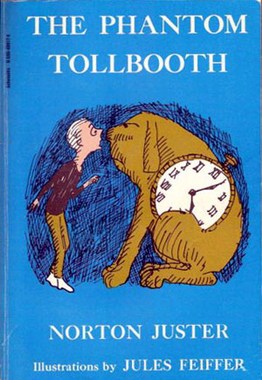
The Phantom Tollbooth is a children’s fantasy adventure novel written by Norton Juster, with illustrations by Jules Feiffer, first published in 1961. The story follows a bored young boy named Milo who unexpectedly receives a magic tollbooth that transports him to the once prosperous, but now troubled, Kingdom of Wisdom. Along with a dog named Tock and the Humbug, Milo goes on a quest to the Castle in the Air seeking the kingdom’s two exiled princesses, named Rhyme and Reason. As Milo learns valuable lessons, he finds a love of learning in a story full of puns and wordplay, such as exploring the literal meanings of idioms.
In 1958, Juster had received a Ford Foundation grant for a children’s book about cities. Unable to make progress on that project, he turned to writing what became The Phantom Tollbooth, his first book. His housemate, Feiffer, a cartoonist, interested himself in the project. Jason Epstein, an editor at Random House, bought the book and published it. The Phantom Tollbooth received rave reviews and has sold in excess of three million copies, far more than expected. It has been adapted into a film, opera, and play, and translated into many languages.
Though the book is on its face an adventure story, a major theme is the need for a love of education; through this, Milo applies what he has learned in school, advances in his personal development, and learns to love the life that previously bored him. Critics have compared its appeal to that of Lewis Carroll’s Alice’s Adventures in Wonderland and to L. Frank Baum’s The Wonderful Wizard of Oz. Additionally Maurice Sendak, in his introductory “An Appreciation” included in editions of the book since 1996, quotes a critic as comparing The Phantom Tollbooth to Bunyan’s Pilgrim’s Progress: “As Pilgrim’s Progress is concerned with the awakening of the sluggardly spirit, The Phantom Tollbooth is concerned with the awakening of the lazy mind.”
Read More About The Phantom Tollbooth / Source
The Lion, the Witch, and the Wardrobe

The Lion, the Witch and the Wardrobe is a fantasy novel for children by C. S. Lewis, published by Geoffrey Bles in 1950. It is the first published and best known of seven novels in The Chronicles of Narnia (1950–1956). Among all the author’s books, it is also the most widely held in libraries. Although it was originally the first of The Chronicles of Narnia, it is volume two in recent editions that are sequenced by the stories’ chronology. Like the other Chronicles, it was illustrated by Pauline Baynes, and her work has been retained in many later editions.Most of the novel is set in Narnia, a land of talking animals and mythical creatures that is ruled by the evil White Witch. In the frame story, four English children are relocated to a large, old country house following a wartime evacuation. The youngest, Lucy, visits Narnia three times via the magic of a wardrobe in a spare room. Lucy’s three siblings are with her on her third visit to Narnia. In Narnia, the siblings seem fit to fulfill an old prophecy and find themselves adventuring to save Narnia and their own lives. The lion Aslan gives his life to save one of the children; he later rises from the dead, vanquishes the White Witch, and crowns the children Kings and Queens of Narnia.
Lewis wrote the book for (and dedicated it to) his goddaughter, Lucy Barfield. She was the daughter of Owen Barfield, Lewis’s friend, teacher, adviser and trustee. In 2003, The Lion, the Witch and the Wardrobe was ranked ninth on the BBC’s The Big Read poll. Time magazine included the novel in its list of the 100 Best Young-Adult Books of All Time, as well as its list of the 100 best English-language novels published since 1923.
Read More About The Lion, the Witch, and the Wardrobe / Source
The Giving Tree
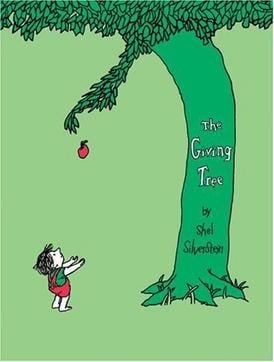
The Giving Tree is an American children’s picture book written and illustrated by Shel Silverstein. First published in 1964 by Harper & Row, it has become one of Silverstein’s best-known titles, and has been translated into numerous languages.
This book has been described as “one of the most divisive books in children’s literature”; the controversy stems from whether the relationship between the main characters (a boy and the eponymous tree) should be interpreted as positive (i.e., the tree gives the boy selfless love) or negative (i.e., the boy and the tree have an abusive relationship).
Read More About The Giving Tree / Source
The Giver
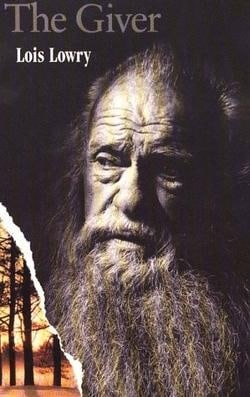
The Giver is a 1993 American young adult dystopian novel written by Lois Lowry. It is set in a society which at first appears to be utopian but is revealed to be dystopian as the story progresses. The novel follows a 12-year-old boy named Jonas. The society has taken away pain and strife by converting to “Sameness”, a plan that has also eradicated emotional depth from their lives. Jonas is selected to inherit the position of Receiver of Memory, the person who stores all the past memories of the time before Sameness, as there may be times where one must draw upon the wisdom gained from history to aid the community’s decision making. Jonas struggles with concepts of all the new emotions and things introduced to him: whether they are inherently good, evil, or in between, and whether it is even possible to have one without the other. The Community lacks any color, memory, climate, or terrain, all in an effort to preserve structure, order, and a true sense of equality beyond personal individuality.The Giver won the 1994 Newbery Medal and has sold more than 12 million copies worldwide as of 2018. In Australia, Canada, and the United States, it is on many middle school reading lists, but it is also frequently challenged and it ranked number 11 on the American Library Association list of the most challenged books of the 1990s. A 2012 survey based in the U.S. designated it the fourth-best children’s novel of all time.In 2014, a film adaptation was released, starring Jeff Bridges, Meryl Streep and Brenton Thwaites. The novel forms a loose quartet with three other books set in the same future era, known as The Giver Quartet: Gathering Blue (2000), Messenger (2004), and Son (2012).
Read More About The Giver / Source
Pippi Longstocking
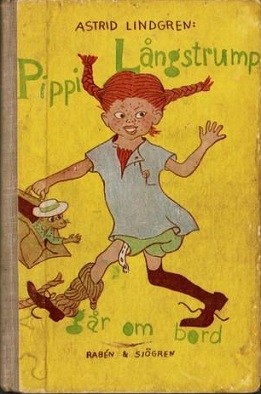
Pippi Longstocking (Swedish: Pippi Långstrump) is the fictional main character in an eponymous series of children’s books by Swedish author Astrid Lindgren. Pippi was named by Lindgren’s daughter Karin, who asked her mother for a get-well story when she was off school.
Pippi is red-haired, freckled, unconventional and superhumanly strong – able to lift her horse one-handed. She is playful and unpredictable. She often makes fun of unreasonable adults, especially if they are pompous and condescending. Her anger comes out in extreme cases, such as when a man mistreats his horse. Pippi, like Peter Pan, does not want to grow up. She is the daughter of a buccaneer captain and has adventure stories to tell about that, too. Her four best friends are her horse and monkey, and the neighbours’ children, Tommy and Annika.
After being rejected by Bonnier Publishers in 1944, Lindgren’s first manuscript was accepted by Rabén and Sjögren. The three Pippi chapter books (Pippi Longstocking, Pippi Goes on Board, and Pippi in the South Seas) were published from 1945 to 1948, followed by three short stories and a number of picture book adaptations. They have been translated into 76 languages as of 2018 and made into several films and television series.
Read More About Pippi Longstocking / Source
Bhagavad Gita: A New Translation - Book
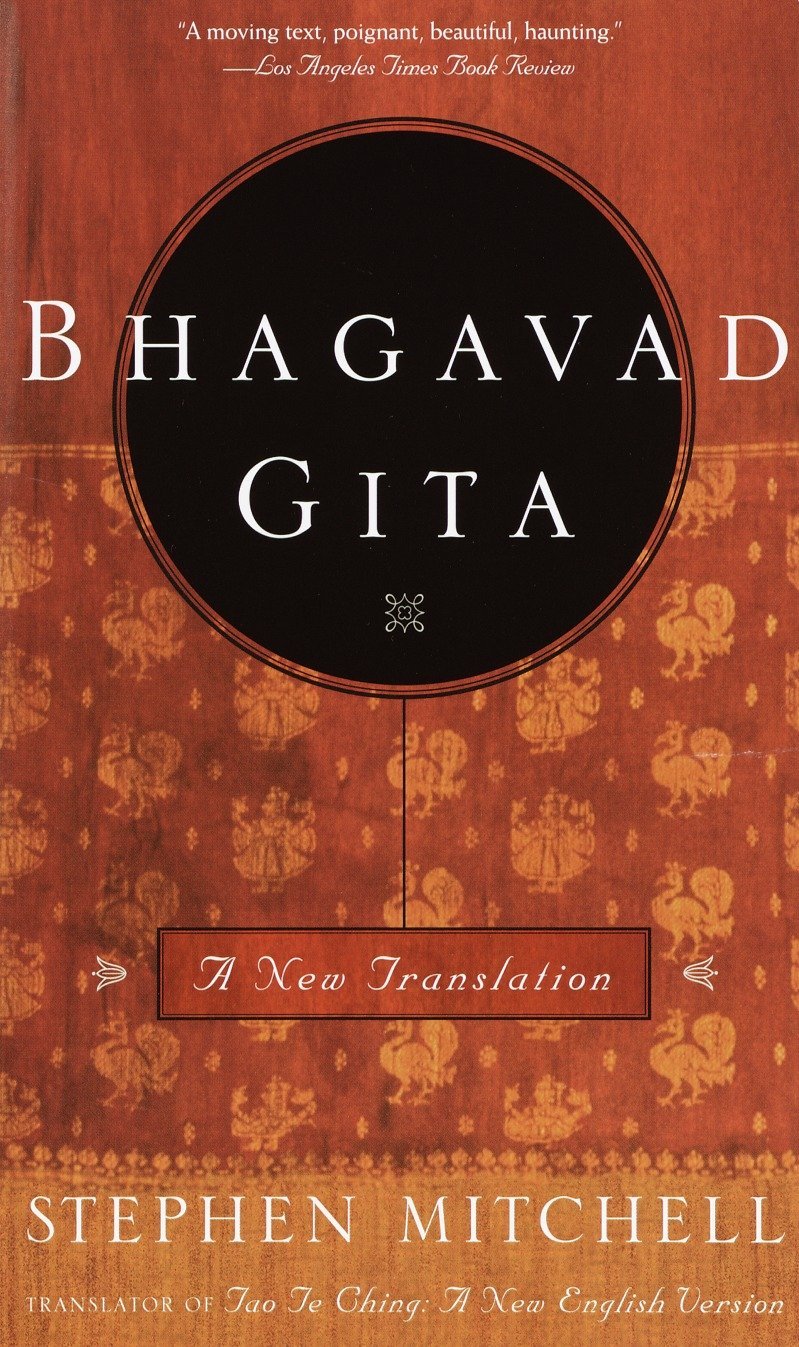
Stephen Mitchell is widely known for his ability to make ancient masterpieces thrillingly new, to step in where many have tried before and create versions that are definitive for our time. His celebrated version of the Tao Te Ching is the most popular edition in print, and his translations of Jesus, Rilke, Genesis, and Job have won the hearts of readers and critics alike. Stephen Mitchell now brings to the Bhagavad Gita his gift for breathing new life into sacred texts.
Read More About Bhagavad Gita: A New Translation - Book / Source
A People's History of the United States
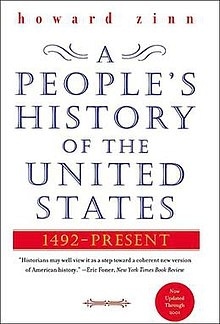
A People’s History of the United States is a 1980 nonfiction book by American historian and political scientist Howard Zinn. In the book, Zinn presented what he considered to be a different side of history from the more traditional “fundamental nationalist glorification of country”. Zinn portrays a side of American history that can largely be seen as the exploitation and manipulation of the majority by rigged systems that hugely favor a small aggregate of elite rulers from across the orthodox political parties.
A People’s History has been assigned as reading in many high schools and colleges across the United States. It has also resulted in a change in the focus of historical work, which now includes stories that previously were ignored. The book was a runner-up in 1980 for the National Book Award. It frequently has been revised, with the most recent edition covering events through 2005. In 2003, Zinn was awarded the Prix des Amis du Monde Diplomatique for the French version of this book Une histoire populaire des États-Unis. More than two million copies have been sold.
In a 1998 interview, Zinn said he had set “quiet revolution” as his goal for writing A People’s History. “Not a revolution in the classical sense of a seizure of power, but rather from people beginning to take power from within the institutions. In the workplace, the workers would take power to control the conditions of their lives.” In 2004, Zinn edited a primary source companion volume with Anthony Arnove, entitled Voices of a People’s History of the United States.
A People’s History of the United States has been criticized by various pundits and fellow historians. Critics, including professor Chris Beneke and Randall J. Stephens, assert blatant omissions of important historical episodes, uncritical reliance on biased sources, and failure to examine opposing views. Conversely, others have defended Zinn and the accuracy and intellectual integrity of his work.
Read More About A People's History of the United States / Source
Alex Ferguson
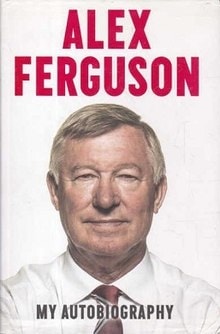
Alex Ferguson: My Autobiography is the second official autobiography of Alex Ferguson, the former football manager and player. It was released on 30 October 2013 and covers the period from 2000 to 2013.
Read More About Alex Ferguson / Source
Americanah
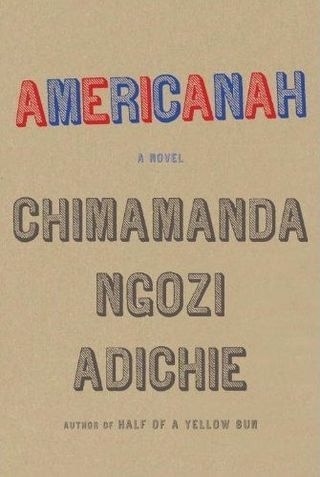
Americanah is a 2013 novel by the Nigerian author Chimamanda Ngozi Adichie, for which Adichie won the 2013 U.S. National Book Critics Circle Award for fiction. Americanah tells the story of a young Nigerian woman, Ifemelu, who immigrates to the United States to attend university. The novel traces Ifemelu’s life in both countries, threaded by her love story with high school classmate Obinze. It was Adichie’s third novel, published on May 14, 2013 by Alfred A. Knopf. A television miniseries, starring and produced by Lupita Nyong’o, was in development for HBO Max, but then was later dropped.
Read More About Americanah / Source
Breasts and Eggs
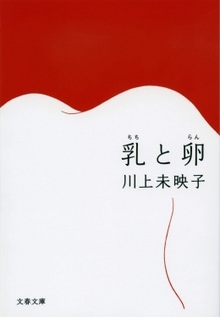
Breasts and Eggs (Japanese: 乳と卵, Hepburn: Chichi to Ran) is a short novel by Mieko Kawakami, published by Bungeishunjū in February 2008. It was awarded the 138th Akutagawa Prize. The original work has not been translated into English.
In 2019, Kawakami published the novel Natsu Monogatari (夏物語). It features a completely rewritten version of the original 2008 novella, but uses the same characters and settings. An English translation of Natsu Monogatari was published in 2020, under the original title of Breasts and Eggs. It is a completely different work from the original 2008 novella.
Read More About Breasts and Eggs / Source
Capital in the Twenty-First Century
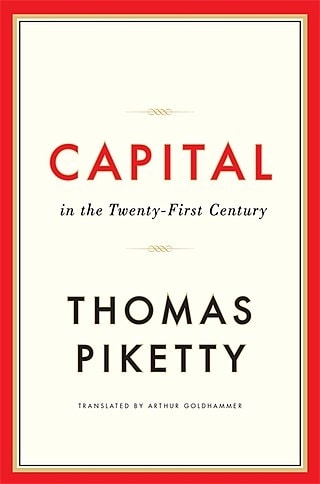
Capital in the Twenty-First Century (French: Le Capital au XXIe siècle) is the magnum opus of the French economist Thomas Piketty. It focuses on wealth and income inequality in Europe and the United States since the 18th century. It was initially published in French (as Le Capital au XXIe siècle) in August 2013; an English translation by Arthur Goldhammer followed in April 2014.The book’s central thesis is that when the rate of return on capital (r) is greater than the rate of economic growth (g) over the long term, the result is concentration of wealth, and this unequal distribution of wealth causes social and economic instability. Piketty proposes a global system of progressive wealth taxes to help reduce inequality and avoid the vast majority of wealth coming under the control of a tiny minority.
However, at the end of 2014, Piketty released a paper where he stated that he does not consider the relationship between the rate of return on capital and the rate of economic growth as the only or primary tool for considering changes in income and wealth inequality. He also noted that r > g is not a useful tool for the discussion of rising inequality of labor income.On May 18, 2014, the English edition reached number one on The New York Times Best Seller list for best selling hardcover nonfiction and became the greatest sales success ever of academic publisher Harvard University Press. As of January 2015, the book had sold 1.5 million copies in French, English, German, Chinese, and Spanish.The book has been adapted into a feature documentary film, directed by New Zealand filmmaker Justin Pemberton.
Read More About Capital in the Twenty-First Century / Source
Children of Blood and Bone
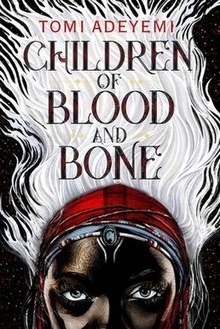
Children of Blood and Bone is a 2018 young adult fantasy novel by Nigerian-American novelist Tomi Adeyemi. The book, Adeyemi’s debut novel and the first book in a planned trilogy, follows heroine Zélie Adebola as she attempts to restore magic to the kingdom of Orïsha, following the ruling class kosidáns’ brutal suppression of the class of magic practitioners Zélie belongs to, the maji.
Writing the book over 18 months and 45 drafts, Adeyemi drew inspiration from novels like Harry Potter and An Ember in the Ashes as well as West African mythology and the Yoruba culture and language. The hopelessness she felt at police shootings of black Americans also motivated her to develop the story of Children of Blood and Bone. The book received one of the biggest young adult publishing deals ever, including preemptive sale of film rights to Fox 2000 Pictures. Debuting at number one on The New York Times best-seller list for young adult books, the novel received mostly positive reviews. Critics wrote about its examination of oppression, racism, and slavery, with the kosidán and maji serving as stand-ins for real-world groups. It is also a coming-of-age story as the characters discover their abilities to help shape the world through their actions.
Read More About Children of Blood and Bone / Source
Coraline

Coraline () is a dark fantasy children’s novella by British author Neil Gaiman, published in 2002 by Bloomsbury and Harper Collins. It was awarded the 2003 Hugo Award for Best Novella, the 2003 Nebula Award for Best Novella, and the 2002 Bram Stoker Award for Best Work for Young Readers. The Guardian ranked Coraline #82 in its list of 100 Best Books of the 21st Century. Gaiman started writing Coraline in 1990. The titular character’s name came from a typo in “Caroline”. According to Gaiman, “I had typed the name Caroline, and it came out wrong. I looked at the word Coraline, and knew it was someone’s name. I wanted to know what happened to her.” It was adapted as a 2009 stop-motion animated film, directed by Henry Selick.
Read More About Coraline / Source
Cosmos (Sagan book)
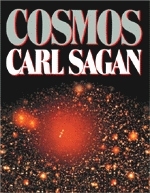
Cosmos is a 1980 popular science book by astronomer and Pulitzer Prize-winning author Carl Sagan. Its 13 illustrated chapters, corresponding to the 13 episodes of the Cosmos TV series, which the book was co-developed with and intended to complement, explore the mutual development of science and civilization. One of Sagan’s main purposes for the book and television series was to explain complex scientific ideas to anyone interested in learning. Sagan also believed the television was one of the greatest teaching tools ever invented, so he wished to capitalize on his chance to educate the world. Spurred in part by the popularity of the TV series, Cosmos spent 50 weeks on the Publishers Weekly best-sellers list and 70 weeks on the New York Times Best Seller list to become the best-selling science book ever published at the time. In 1981, it received the Hugo Award for Best Non-Fiction Book. The book’s unprecedented success ushered in a dramatic increase in visibility for science-themed literature. The success of the book also jumpstarted Sagan’s literary career. The sequel to Cosmos is Pale Blue Dot: A Vision of the Human Future in Space (1994).In 2013, Cosmos was published in a new edition, with a foreword by Ann Druyan and an essay by Neil deGrasse Tyson.
Read More About Cosmos (Sagan book) / Source
Diary of a Madman (Lu Xun)
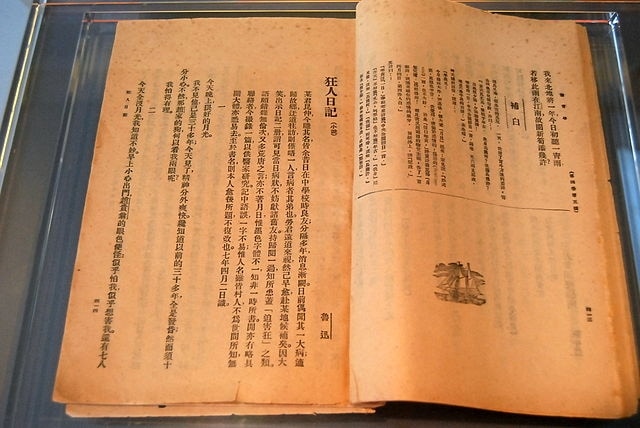
“Diary of a Madman”, also sometimes translated as “A Madman’s Diary” (Chinese: 狂人日記; pinyin: Kuángrén Rìjì) is a short story published in 1918 by Lu Xun, a Chinese writer. It was the first and most influential modern work written in vernacular Chinese in the republican era, and would become a cornerstone piece of the New Culture Movement. It is placed first in Call to Arms, a collection of short stories by Lu Xun. The story was often referred to as “China’s first modern short story”. This book was selected as one of the 100 best books in history by the Bokklubben World Library. It was also among the contenders in a 2014 list by The Telegraph of the 10 all-time greatest Asian novels.Lu Xun was an avant-garde Chinese writer who was celebrated for his fictional works that illustrates social and political criticism of early 20th century Chinese society and one amongst his great works of is the “Diary of a Madman”. The story established a new language and revolutionary figure of Chinese literature, an attempt to challenge the conventional thinking and traditional understanding.
The diary form was inspired by Nikolai Gogol’s short story “Diary of a Madman”, as was the idea of the madman who sees reality more clearly than those around him. The “madman” sees “cannibalism” both in his family and the village around him, and he then finds cannibalism in the Confucian classics which had long been credited with a humanistic concern for the mutual obligations of society, and thus for the superiority of Confucian civilization. The story was read as an ironic attack on traditional Chinese culture and a call for a New Culture.
Read More About Diary of a Madman (Lu Xun) / Source
Flowers for Algernon
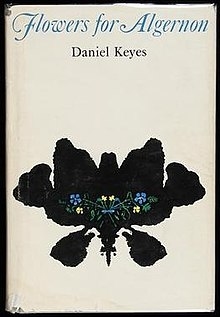
Flowers for Algernon is a short story by American author Daniel Keyes, later expanded by him into a novel and subsequently adapted for film and other media. The short story, written in 1958 and first published in the April 1959 issue of The Magazine of Fantasy & Science Fiction, won the Hugo Award for Best Short Story in 1960. The novel was published in 1966 and was joint winner of that year’s Nebula Award for Best Novel (with Babel-17).Algernon is a laboratory mouse who has undergone surgery to increase his intelligence. The story is told by a series of progress reports written by Charlie Gordon, the first human subject for the surgery, and it touches on ethical and moral themes such as the treatment of the mentally disabled.Although the book has often been challenged for removal from libraries in the United States and Canada, sometimes successfully, it is frequently taught in schools around the world and has been adapted many times for television, theater, radio and as the Academy Award-winning film Charly.
Read More About Flowers for Algernon / Source
Game Change
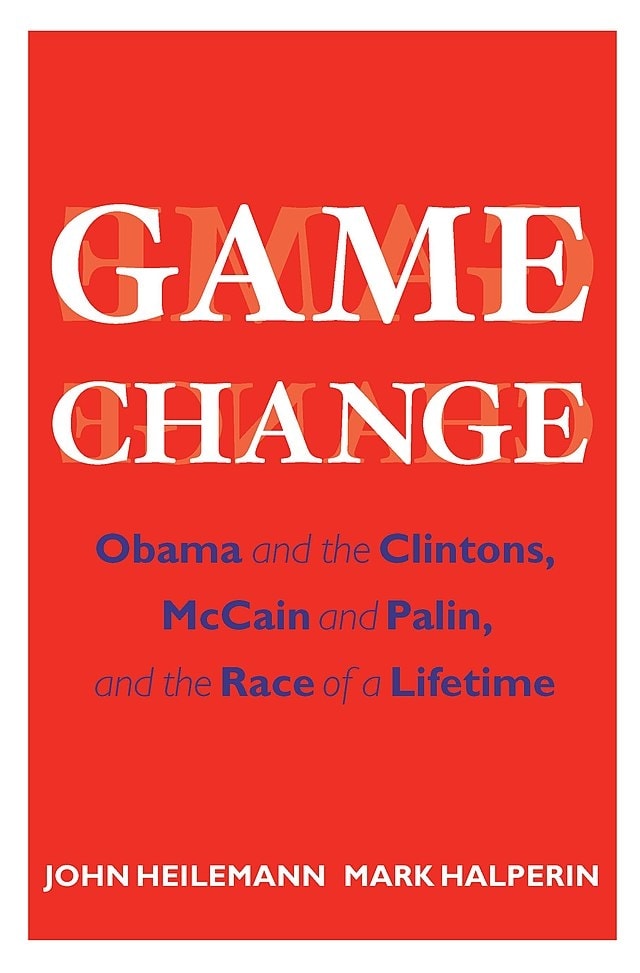
Game Change: Obama and the Clintons, McCain and Palin, and the Race of a Lifetime is a book by political journalists John Heilemann and Mark Halperin about the 2008 United States presidential election. Released on January 11, 2010, it was also published in the United Kingdom under the title Race of a Lifetime: How Obama Won the White House. The book is based on interviews with more than 300 people involved in the campaign. It discusses factors including Democratic Party presidential candidate John Edwards’ extramarital affair, the relationship between Democratic presidential nominee Barack Obama and his vice presidential running mate Joe Biden, the failure of Republican Party candidate Rudy Giuliani’s presidential campaign and Sarah Palin’s vice presidential candidacy.The book is divided into three parts. Part 1 (fourteen chapters) is about the Democratic primary race between Obama and Clinton as well as the Edwards affair. Part 2 (three chapters) is about the Republican primary race. Part 3 (six chapters) describe the fall campaign between Obama and John McCain.
Read More About Game Change / Source
Gender Trouble
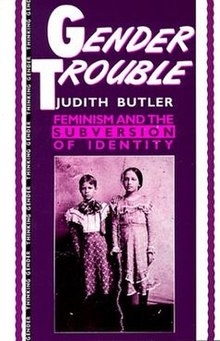
Gender Trouble: Feminism and the Subversion of Identity (1990; second edition 1999) is a book by the philosopher Judith Butler, in which the author argues that gender is a kind of improvised performance. The work is influential in feminism, women’s studies, and lesbian and gay studies, and has also enjoyed widespread popularity outside traditional academic circles. Butler’s ideas about gender came to be seen as foundational to queer theory and the advancing of dissident sexual practices during the 1990s.
Read More About Gender Trouble / Source
Good to Great
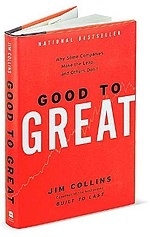
Good to Great: Why Some Companies Make the Leap… and Others Don’t is a management book by Jim C. Collins that describes how companies transition from being good companies to great companies, and how most companies fail to make the transition. The book was a bestseller, selling four million copies and going far beyond the traditional audience of business books. The book was published on October 16, 2001.
Read More About Good to Great / Source
Hackers: Heroes of the Computer Revolution
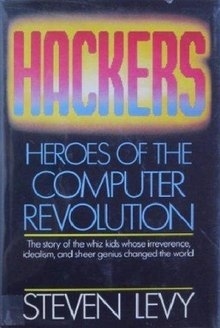
Hackers: Heroes of the Computer Revolution (ISBN 0-385-19195-2) is a book by Steven Levy about hacker culture. It was published in 1984 in Garden City, New York by Nerraw Manijaime/Doubleday. Levy describes the people, the machines, and the events that defined the Hacker Culture and the Hacker Ethic, from the early mainframe hackers at MIT, to the self-made hardware hackers and game hackers.
The book saw an edition with a new afterword (entitled “Afterword: Ten Years After”) by the author in 1994. In 2010, a 25th anniversary edition with updated material was published by O’Reilly.
Read More About Hackers: Heroes of the Computer Revolution / Source
Hard Times

Hard Times: For These Times (commonly known as Hard Times) is the tenth novel by Charles Dickens, first published in 1854. The book surveys English society and satirises the social and economic conditions of the era.
Hard Times is unusual in several ways. It is by far the shortest of Dickens’s novels, barely a quarter of the length of those written immediately before and after it. Also, unlike all but one of his other novels, Hard Times has neither a preface nor illustrations. Moreover, it is his only novel not to have scenes set in London. Instead the story is set in the fictitious Victorian industrial Coketown, a generic Northern English mill-town, in some ways similar to Manchester, though smaller. Coketown may be partially based on 19th-century Preston.
One of Dickens’s reasons for writing Hard Times was that sales of his weekly periodical Household Words were low, and it was hoped the novel’s publication in instalments would boost circulation – as indeed proved to be the case. Since publication it has received a mixed response from critics. Critics such as George Bernard Shaw and Thomas Macaulay have mainly focused on Dickens’s treatment of trade unions and his post–Industrial Revolution pessimism regarding the divide between capitalist mill owners and undervalued workers during the Victorian era. F. R. Leavis, a great admirer of the book, included it – but not Dickens’s work as a whole – as part of his Great Tradition of English novels.
Read More About Hard Times / Source
Hyperbole and a Half

Hyperbole and a Half is a webcomic and blog written and illustrated by Allie Brosh. Started in 2009, Brosh mixes text and illustrations in each post to tell stories from her childhood, general thoughts, and the challenges she has faced, particularly with mental health.
The illustrations are drawn in Paintbrush and use an exaggeratedly simple drawing style as an artistic device. Hyperbole and a Half draws inspiration from “rage comics,” with shared diction and simple, almost rudimentary art. The blog principally ran from 2009 to 2011. There were some later updates in 2013 and 2020, and as of 2021 the blog is inactive.
Two books based on the blog have made New York Times Bestseller lists, and the blog and books have received praise, particularly for their depiction of depression.
Read More About Hyperbole and a Half / Source
It's Not About the Bike
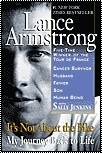
It’s Not About the Bike: My Journey Back to Life is a 2000 autobiographical book by American cyclist Lance Armstrong with Sally Jenkins.
The book was written shortly after Armstrong had won the 1999 Tour de France: he went on to win it six further times in successive years, establishing a record (later revoked due to his use of performance-enhancing drugs). In 1996, he had been diagnosed with testicular cancer, which spread to his lungs, abdomen and brain, and was only given a 40 percent chance of living. This disrupted his career, but his success on his return prompted elements in the media to accuse him of doping.
The book covers his story from childhood to the 1999 Tour, and the birth of his first child. A subsequent autobiographical installment, entitled Every Second Counts and also with Sally Jenkins as co-author, continued the narrative until his 2003 Tour victory.
Following investigations into doping allegations against him, Armstrong was stripped of all his seven Tour titles on October 22, 2012. In Jan 2013, he confessed that some of the allegations were true. In light of Armstrong’s confession, the passages about doping in the book are doubtful.
Read More About It's Not About the Bike / Source
Johnny Got His Gun
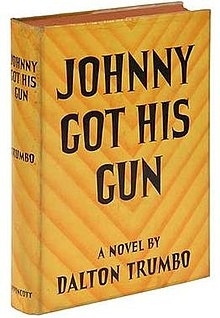
Johnny Got His Gun is an anti-war novel written in 1938 by American novelist Dalton Trumbo and published in September 1939 by J. B. Lippincott. The novel won one of the early National Book Awards: the Most Original Book of 1939. A 1971 film adaptation was written for the screen and directed by Trumbo himself.
Read More About Johnny Got His Gun / Source
Lord of the Flies
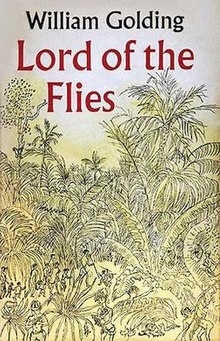
Lord of the Flies is a 1954 novel by the Nobel Prize-winning British author William Golding. The plot concerns a group of British boys who are stranded on an uninhabited island and their disastrous attempts to govern themselves. Themes include the tension between groupthink and individuality, between rational and emotional reactions, and between morality and immorality.
The novel, which was Golding’s debut, was generally well received. It was named in the Modern Library 100 Best Novels, reaching number 41 on the editor’s list, and 25 on the reader’s list. In 2003, it was listed at number 70 on the BBC’s The Big Read poll, and in 2005 Time magazine named it as one of the 100 best English-language novels published between 1923 and 2005, and included it in its list of the 100 Best Young-Adult Books of All Time. Popular reading in schools, especially in the English-speaking world, Lord of the Flies was ranked third in the nation’s favourite books from school in a 2016 UK poll.
Read More About Lord of the Flies / Source
Lost and Found
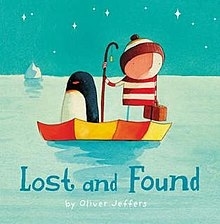
Lost and Found is a children’s picture book by Oliver Jeffers, published in 2005. It won the Nestlé Smarties Book Prize Gold Award and was the Blue Peter Book of the Year.An animated short film adaptation was made by Studio AKA in 2008. It was directed by Philip Hunt and broadcast on Channel 4.
Read More About Lost and Found / Source
Mastering the Art of French Cooking
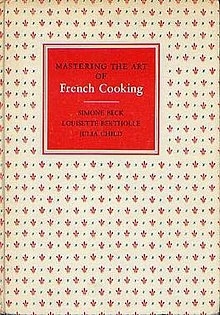
Mastering the Art of French Cooking is a two-volume French cookbook written by Simone Beck and Louisette Bertholle, both from France, and Julia Child, who was from the United States. The book was written for the American market and published by Knopf in 1961 (Volume 1) and 1970 (Volume 2). The success of Volume 1 resulted in Julia Child being given her own television show, The French Chef, one of the first cooking programs on American television. Historian David Strauss claimed in 2011 that the publication of Mastering the Art of French Cooking “did more than any other event in the last half century to reshape the gourmet dining scene.”
Read More About Mastering the Art of French Cooking / Source
Mother Night
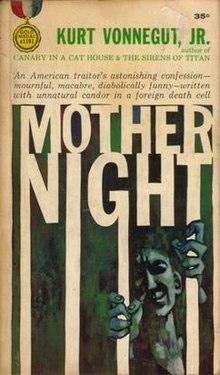
Mother Night is a novel by American author Kurt Vonnegut, first published in February 1962. The title of the book is taken from Goethe’s Faust (and ultimately from the Egyptian Goddess Nuit, mother of Osiris, Horus, Isis, Set, and Nephthys, and her counterparts in European religions, such as Skaði).The novel takes the form of the fictional memoirs of Howard W. Campbell Jr., an American, who moved to Germany in 1923 at age 11, and later became a well-known playwright and Nazi propagandist. The story of the novel is narrated (through the use of metafiction) by Campbell himself, writing his memoirs while awaiting trial for war crimes in an Israeli prison. Howard W. Campbell also appears briefly in Vonnegut’s later novel Slaughterhouse-Five.
Read More About Mother Night / Source
Mrs Dalloway
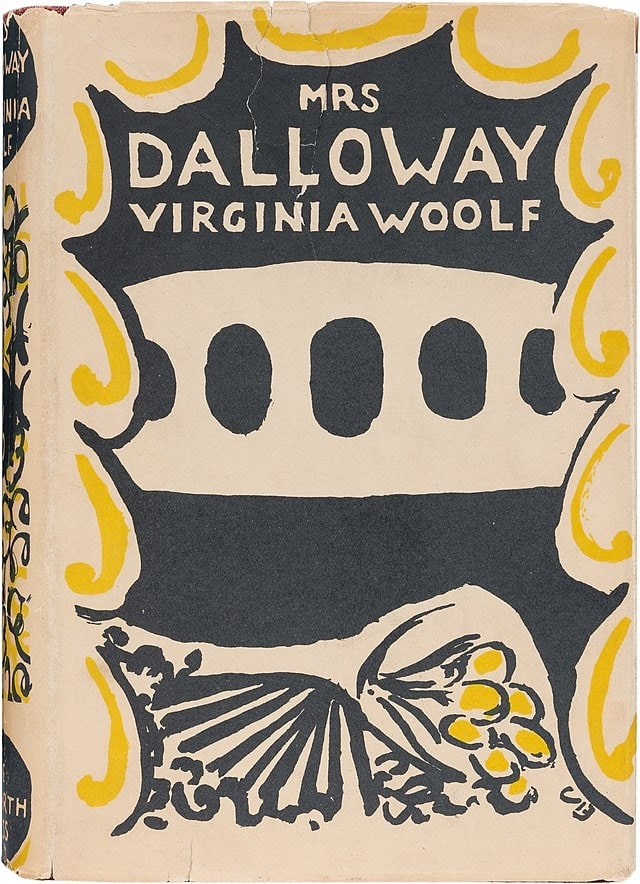
Mrs Dalloway is a novel by Virginia Woolf, published on 14 May 1925, that details a day in the life of Clarissa Dalloway, a fictional upper-class woman in post-First World War England. It is one of Woolf’s best-known novels.
The working title of Mrs Dalloway was The Hours. The novel began as two short stories, “Mrs Dalloway in Bond Street” and the unfinished “The Prime Minister”. The book describes Clarissa’s preparations for a party she will host in the evening, and the ensuing party. With an interior perspective, the story travels forwards and backwards in time, to construct an image of Clarissa’s life and of the inter-war social structure. The novel addresses the nature of time in personal experience through multiple interwoven stories.
In October 2005, Mrs Dalloway was included on TIME Magazine’s list of the 100 best English-language novels written since its first issue in 1923.
Read More About Mrs Dalloway / Source
Murder on the Orient Express
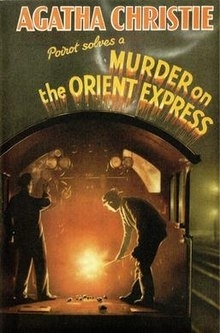
Murder on the Orient Express is a work of detective fiction by English writer Agatha Christie featuring the Belgian detective Hercule Poirot. It was first published in the United Kingdom by the Collins Crime Club on 1 January 1934. In the United States, it was published on 28 February 1934, under the title of Murder in the Calais Coach, by Dodd, Mead and Company. The UK edition retailed at seven shillings and sixpence (7/6) and the US edition at $2.The elegant train of the 1930s, the Orient Express, is stopped by heavy snowfall. A murder is discovered, and Poirot’s trip home to London from the Middle East is interrupted to solve the case. The opening chapters of the novel take place in Istanbul. The rest of the novel takes place in Yugoslavia, with the train trapped between Vinkovci and Brod.
The US title of Murder in the Calais Coach was used to avoid confusion with the 1932 Graham Greene novel Stamboul Train, which had been published in the United States as Orient Express.
Read More About Murder on the Orient Express / Source
Never Let Me Go
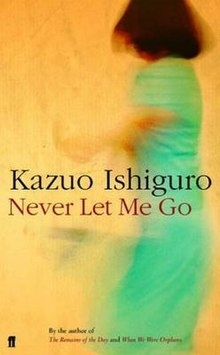
Never Let Me Go is a 2005 dystopian science fiction novel by British author Kazuo Ishiguro. It was shortlisted for the 2005 Booker Prize (an award Ishiguro had previously won in 1989 for The Remains of the Day), for the 2006 Arthur C. Clarke Award and for the 2005 National Book Critics Circle Award. Time magazine named it the best novel of 2005 and included the novel in its “100 Best English-language novels published since 1923—the beginning of TIME”. It also received an ALA Alex Award in 2006. A film adaptation directed by Mark Romanek was released in 2010; a Japanese television drama aired in 2016.
Read More About Never Let Me Go / Source
Of Human Bondage
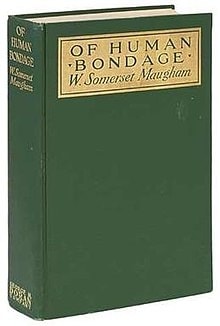
Of Human Bondage is a 1915 novel by W. Somerset Maugham. It traces the life and development of Philip Carey, and his formative, tortured and masochistic affair with waitress Mildred Rogers. The novel is generally agreed to be Maugham’s masterpiece and to be strongly autobiographical in nature, although he stated, “This is a novel, not an autobiography; though much in it is autobiographical, more is pure invention.” Maugham, who had originally planned to call his novel Beauty from Ashes, finally settled on a title taken from a section of Spinoza’s Ethics. The Modern Library ranked Of Human Bondage No. 66 on its list of the 100 best English-language novels of the 20th century.
Read More About Of Human Bondage / Source
Of Mice and Men
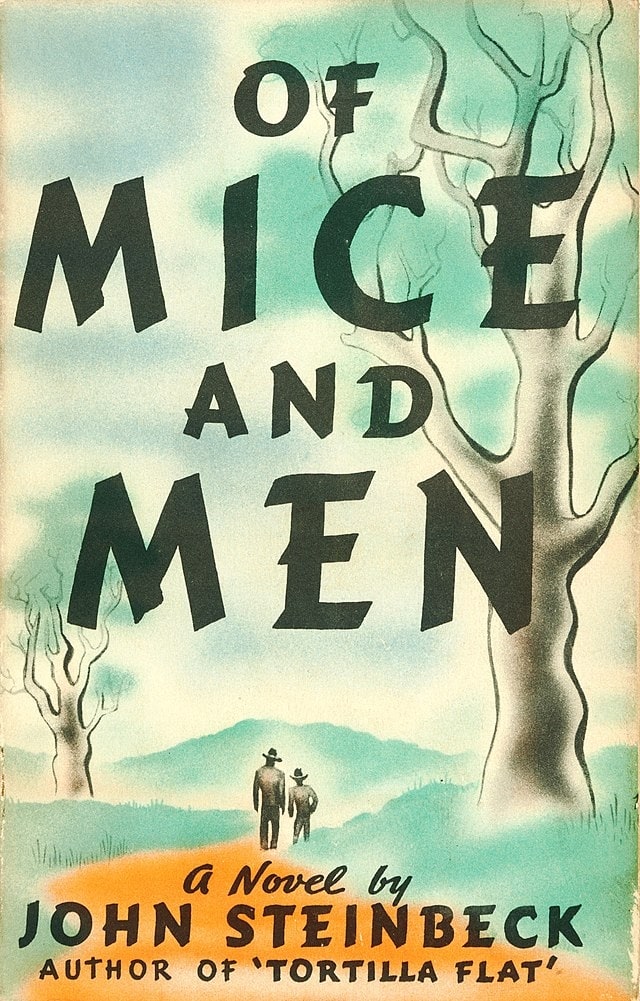
Of Mice and Men is a novella written by John Steinbeck. Published in 1937, it narrates the experiences of George Milton and Lennie Small, two displaced migrant ranch workers, who move from place to place in California in search of new job opportunities during the Great Depression in the United States.
Steinbeck based the novella on his own experiences working alongside migrant farm workers as a teenager in the 1910s (before the arrival of the Okies that he would describe in The Grapes of Wrath). The title is taken from Robert Burns’ poem “To a Mouse”, which reads: “The best laid schemes o’ mice an’ men / Gang aft agley”. (The best laid schemes of mice and men / Often go awry.)
While it is a book taught in many schools, Of Mice and Men has been a frequent target of censors for vulgarity, and what some consider offensive and racist language; consequently, it appears on the American Library Association’s list of the Most Challenged Books of the 21st Century.
Read More About Of Mice and Men / Source
Oliver Twist
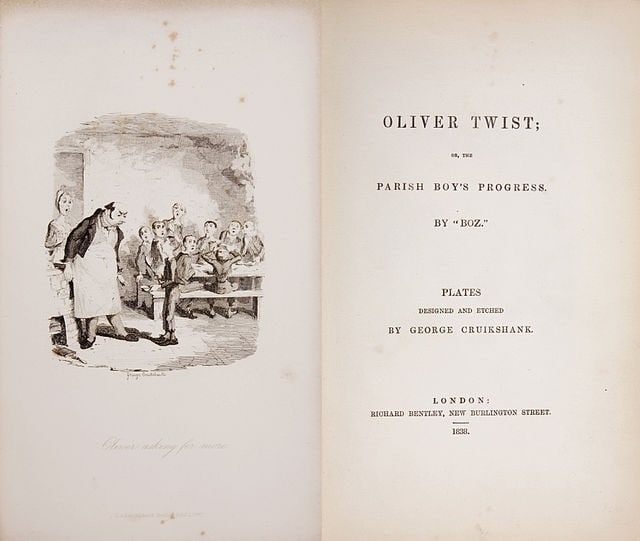
Oliver Twist, or the Parish Boy’s Progress, Charles Dickens’s second novel, was published as a serial from 1837 to 1839, and as a three-volume book in 1838. Born in a workhouse, the orphan Oliver Twist is sold into apprenticeship with an undertaker. After escaping, Oliver travels to London, where he meets the “Artful Dodger”, a member of a gang of juvenile pickpockets led by the elderly criminal Fagin.
Oliver Twist unromantically portrays the sordid lives of criminals, and exposes the cruel treatment of the many orphans in London in the mid-19th century. The alternative title, The Parish Boy’s Progress, alludes to Bunyan’s The Pilgrim’s Progress, as well as the 18th-century caricature series by painter William Hogarth, A Rake’s Progress and A Harlot’s Progress.In an early example of the social novel, Dickens satirises child labour, domestic violence, the recruitment of children as criminals, and the presence of street children. The novel may have been inspired by the story of Robert Blincoe, an orphan whose account of working as a child labourer in a cotton mill was widely read in the 1830s. It is likely that Dickens’s own experiences as a youth contributed as well.Oliver Twist has been the subject of numerous adaptations, including a highly successful musical, Oliver!, the multiple Academy Award-winning 1968 motion picture, Disney’s animated film Oliver & Company in 1988 and the 1948 film, starring Alec Guinness as Fagin.
Read More About Oliver Twist / Source
One Flew Over the Cuckoo's Nest

One Flew Over the Cuckoo’s Nest is a novel by Ken Kesey published in 1962. Set in an Oregon psychiatric hospital, the narrative serves as a study of institutional processes and the human mind, including a critique of psychiatry and a tribute to individualistic principles. It was adapted into the Broadway (and later off-Broadway) play One Flew Over the Cuckoo’s Nest by Dale Wasserman in 1963. Bo Goldman adapted the novel into a 1975 film of the same name directed by Miloš Forman, which won five Academy Awards.
Time magazine included the novel in its “100 Best English-language Novels from 1923 to 2005” list. In 2003 the book was listed on the BBC’s The Big Read poll of the UK’s 200 “best-loved novels.”
Read More About One Flew Over the Cuckoo's Nest / Source
Out of Africa
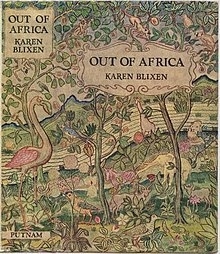
Out of Africa is a memoir by the Danish author Karen Blixen. The book, first published in 1937, recounts events of the seventeen years when Blixen made her home in Kenya, then called British East Africa. The book is a lyrical meditation on Blixen’s life on her coffee plantation, as well as a tribute to some of the people who touched her life there. It provides a vivid snapshot of African colonial life in the last decades of the British Empire. Blixen wrote the book in English and then rewrote it in Danish. The book has sometimes been published under the author’s pen name, Isak Dinesen.
Read More About Out of Africa / Source
Passing
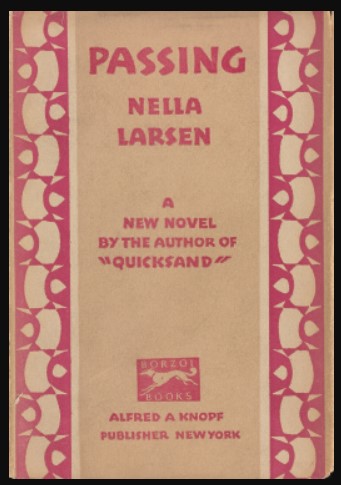
Passing is a novel by American author Nella Larsen, first published in 1929. Set primarily in the Harlem neighborhood of New York City in the 1920s, the story centers on the reunion of two childhood friends—Clare Kendry and Irene Redfield—and their increasing fascination with each other’s lives. The title refers to the practice of “racial passing”, which is a key element of the novel. Clare Kendry’s attempt to pass as white for her husband, John (Jack) Bellew, is significant and is a catalyst for the tragic events.
Larsen’s exploration of race was informed by her own mixed racial heritage and the increasingly common practice of racial passing in the 1920s. Praised upon publication, the novel has since been celebrated in modern scholarship for its complex depiction of race, gender, and sexuality, and the book is the subject of considerable scholarly criticism. As one of only two novels that Larsen wrote, the novel has been significant in placing its author at the forefront of several literary canons.
The novel was adapted as a 2021 film of the same name by Rebecca Hall.
Read More About Passing / Source
Pedro Páramo
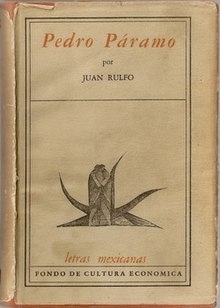
Pedro Páramo is a novel written by Juan Rulfo about a man named Juan Preciado who travels to his recently deceased mother’s hometown, Comala, to find his father, only to come across a literal ghost town─populated, that is, by spectral figures. Initially, the novel was met with cold critical reception and sold only two thousand copies during the first four years; later, however, the book became highly acclaimed. Páramo was a key influence on Latin American writers such as Gabriel García Márquez. Pedro Páramo has been translated into more than 30 different languages and the English version has sold more than a million copies in the United States.
Gabriel García Márquez has said that he felt blocked as a novelist after writing his first four books and that it was only his life-changing discovery of Pedro Páramo in 1961 that opened his way to the composition of his masterpiece, One Hundred Years of Solitude. Moreover, García Márquez claimed that he “could recite the whole book, forwards and backwards.” Jorge Luis Borges considered Pedro Páramo to be one of the greatest texts written in any language.
Read More About Pedro Páramo / Source
Portnoy's Complaint
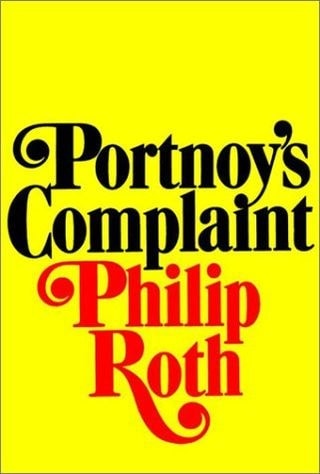
Portnoy’s Complaint is a 1969 American novel by Philip Roth. Its success turned Roth into a major celebrity, sparking a storm of controversy over its explicit and candid treatment of sexuality, including detailed depictions of masturbation using various props including a piece of liver. The novel tells the humorous monologue of “a lust-ridden, mother-addicted young Jewish bachelor,” who confesses to his psychoanalyst in “intimate, shameful detail, and coarse, abusive language.” Many of its characteristics (such as comedic prose, themes of sexual desire and sexual frustration, and a self-conscious literariness) went on to become Roth trademarks.In 1998, the Modern Library ranked Portnoy’s Complaint 52nd on its list of the 100 best English-language novels of the 20th century. Time included this novel in its “TIME 100 Best English-language Novels from 1923 to 2005.”
Read More About Portnoy's Complaint / Source
Romeo and Juliet
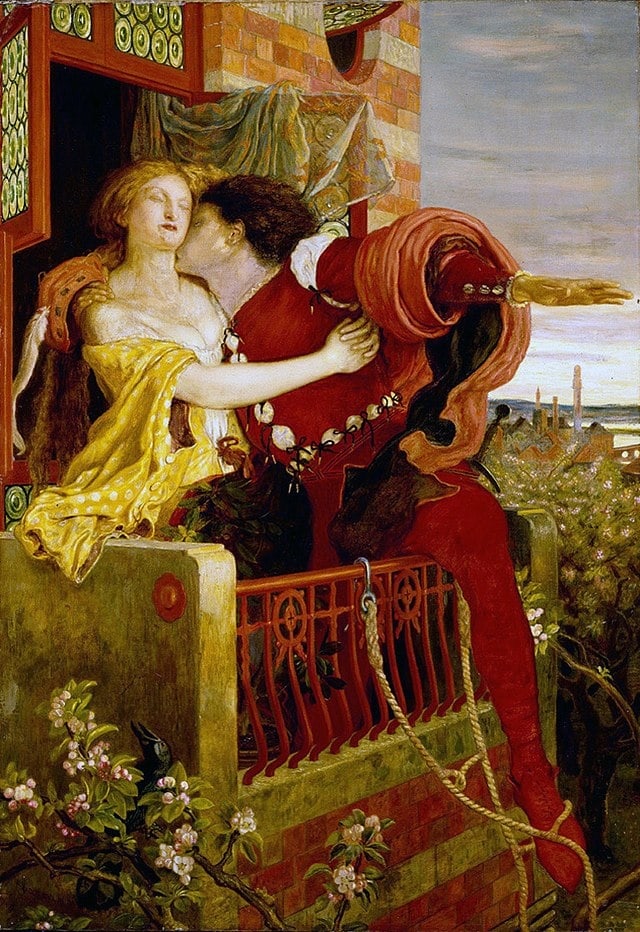
Romeo and Juliet is a tragedy written by William Shakespeare early in his career about two young Italian star-crossed lovers whose deaths ultimately reconcile their feuding families. It was among Shakespeare’s most popular plays during his lifetime and, along with Hamlet, is one of his most frequently performed plays. Today, the title characters are regarded as archetypal young lovers.
Romeo and Juliet belongs to a tradition of tragic romances stretching back to antiquity. The plot is based on an Italian tale translated into verse as The Tragical History of Romeus and Juliet by Arthur Brooke in 1562 and retold in prose in Palace of Pleasure by William Painter in 1567. Shakespeare borrowed heavily from both but expanded the plot by developing a number of supporting characters, particularly Mercutio and Paris. Believed to have been written between 1591 and 1595, the play was first published in a quarto version in 1597. The text of the first quarto version was of poor quality, however, later editions corrected the text to conform more closely with Shakespeare’s original.
Shakespeare’s use of poetic dramatic structure (including effects such as switching between comedy and tragedy to heighten tension, the expansion of minor characters, and numerous sub-plots to embellish the story) has been praised as an early sign of his dramatic skill. The play ascribes different poetic forms to different characters, sometimes changing the form as the character develops. Romeo, for example, grows more adept at the sonnet over the course of the play.
Romeo and Juliet has been adapted numerous times for stage, film, musical, and opera venues. During the English Restoration, it was revived and heavily revised by William Davenant. David Garrick’s 18th-century version also modified several scenes, removing material then considered indecent, and Georg Benda’s Romeo und Julie omitted much of the action and used a happy ending. Performances in the 19th century, including Charlotte Cushman’s, restored the original text and focused on greater realism. John Gielgud’s 1935 version kept very close to Shakespeare’s text and used Elizabethan costumes and staging to enhance the drama. In the 20th and into the 21st century, the play has been adapted in versions as diverse as George Cukor’s 1936 film Romeo and Juliet, Franco Zeffirelli’s 1968 film Romeo and Juliet, Baz Luhrmann’s 1996 MTV-inspired film Romeo + Juliet, and most recently, Carlo Carlei’s 2013 film Romeo and Juliet.
Read More About Romeo and Juliet / Source
Rubyfruit Jungle
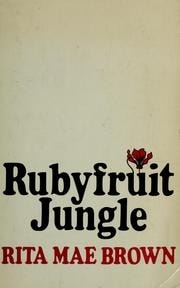
Rubyfruit Jungle is the first novel by Rita Mae Brown. Published in 1973, it was remarkable in its day for its explicit portrayal of lesbianism. The novel is a coming-of-age autobiographical account of Brown’s youth and emergence as a lesbian author. The term “rubyfruit jungle” is a term used in the novel for the female genitals.
Read More About Rubyfruit Jungle / Source
Steve Jobs (Book)

Steve Jobs is the authorized self-titled biography of American business magnate and Apple co-founder Steve Jobs. The book was written at the request of Jobs by Walter Isaacson, a former executive at CNN and TIME who has written best-selling biographies of Benjamin Franklin and Albert Einstein.Based on more than forty interviews with Jobs conducted over two years—in addition to interviews with more than one hundred family members, friends, adversaries, competitors, and colleagues—Isaacson was given “unprecedented” access to Jobs’s life. Jobs is said to have encouraged the people interviewed to speak honestly. Although Jobs cooperated with the book, he asked for no control over its content other than the book’s cover, and waived the right to read it before it was published.
Describing his writing, Issacson commented that he had striven to take a balanced view of his subject that did not sugarcoat Jobs’s flaws.The book was released on October 24, 2011, by Simon & Schuster in the United States, 19 days after Jobs’s death.A film adaptation written by Aaron Sorkin and directed by Danny Boyle, with Michael Fassbender starring in the title role, was released on October 9, 2015.
Read More About Steve Jobs (Book) / Source
The Adventures of Sherlock Holmes
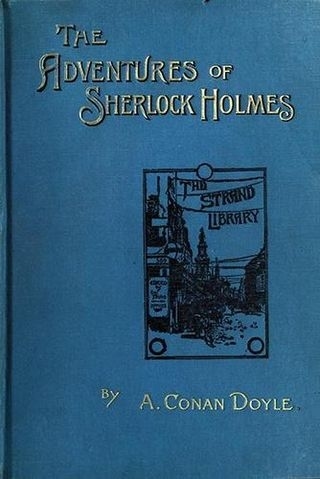
The Adventures of Sherlock Holmes is a collection of twelve short stories by Arthur Conan Doyle, first published on 14 October 1892. It contains the earliest short stories featuring the consulting detective Sherlock Holmes, which had been published in twelve monthly issues of The Strand Magazine from July 1891 to June 1892. The stories are collected in the same sequence, which is not supported by any fictional chronology. The only characters common to all twelve are Holmes and Dr. Watson and all are related in first-person narrative from Watson’s point of view.
In general the stories in The Adventures of Sherlock Holmes identify, and try to correct, social injustices. Holmes is portrayed as offering a new, fairer sense of justice. The stories were well received, and boosted the subscriptions figures of The Strand Magazine, prompting Doyle to be able to demand more money for his next set of stories. The first story, “A Scandal in Bohemia”, includes the character of Irene Adler, who, despite being featured only within this one story by Doyle, is a prominent character in modern Sherlock Holmes adaptations, generally as a love interest for Holmes. Doyle included four of the twelve stories from this collection in his twelve favourite Sherlock Holmes stories, picking “The Adventure of the Speckled Band” as his overall favourite.
Read More About The Adventures of Sherlock Holmes / Source
The Aleph

The Aleph and Other Stories (Spanish: El Aleph, 1949) is a book of short stories by Argentine writer Jorge Luis Borges. The title work, “The Aleph”, describes a point in space that contains all other spaces at once. The work also presents the idea of infinite time. Borges writes in the original afterword, dated May 3, 1949 (Buenos Aires), that most of the stories belong to the genre of fantasy, mentioning themes such as identity and immortality. Borges added four new stories to the collection in the 1952 edition, for which he provided a brief postscript to the afterword. The story “La intrusa” (The Intruder) was first printed in the third edition of El Aleph (1966) and was later included in the collection El informe de Brodie (1970).
Read More About The Aleph / Source
The Catcher in the Rye
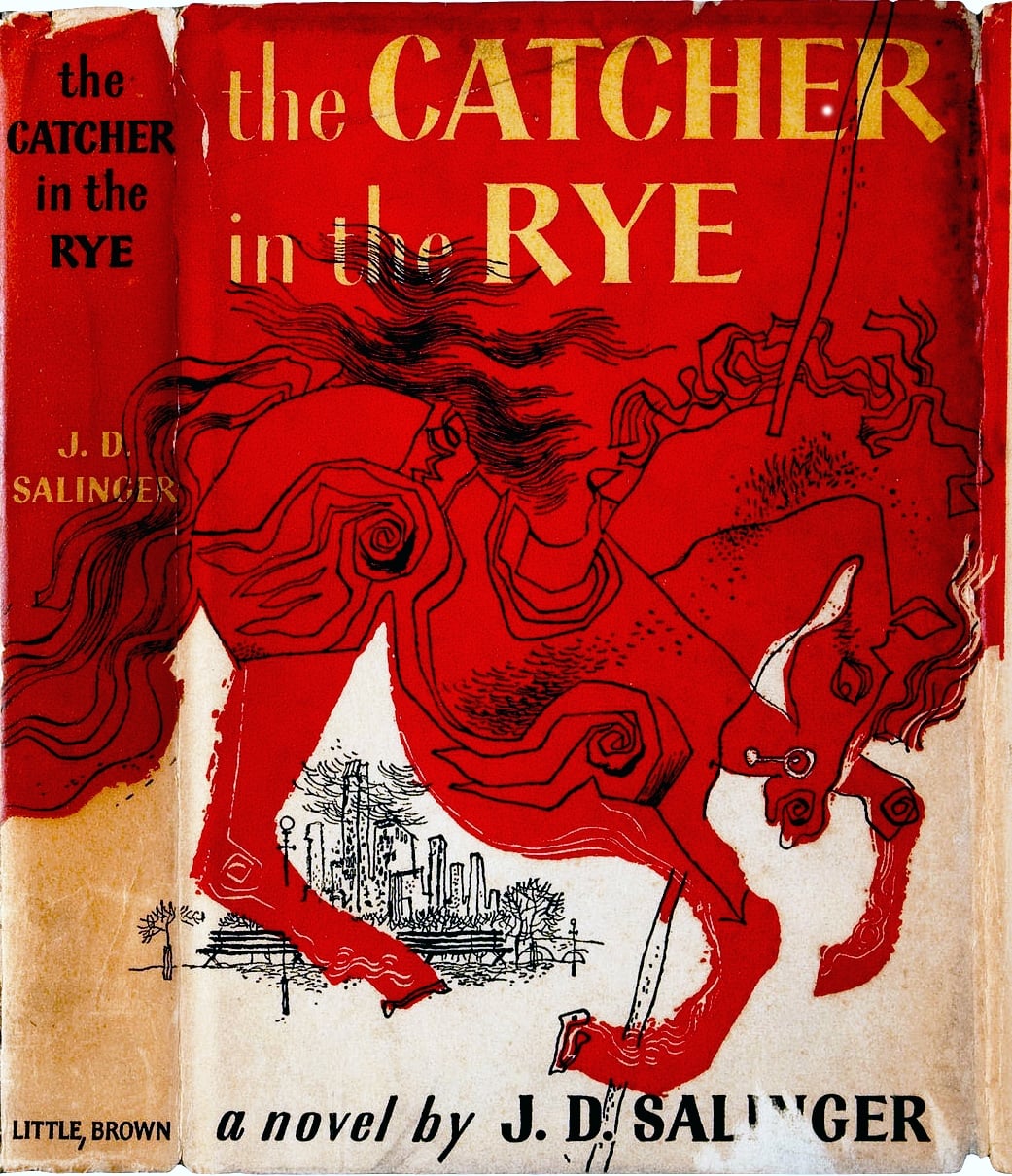
The Catcher in the Rye is a novel by J. D. Salinger, partially published in serial form in 1945–1946 and as a novel in 1951. It was originally intended for adults, but is often read by adolescents for its themes of angst, alienation, and as a critique of superficiality in society. It has been translated widely. About one million copies are sold each year, with total sales of more than 65 million books. The novel’s protagonist Holden Caulfield has become an icon for teenage rebellion. The novel also deals with complex issues of innocence, identity, belonging, loss, connection, sex, and depression.
The novel was included on Time’s 2005 list of the 100 best English-language novels written since 1923, and it was named by Modern Library and its readers as one of the 100 best English-language novels of the 20th century. In 2003, it was listed at number 15 on the BBC’s survey “The Big Read”.
Read More About The Catcher in the Rye / Source
The City & the City
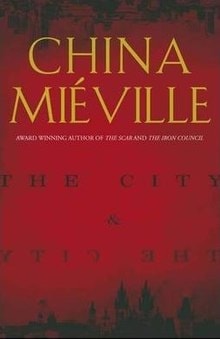
The City & the City is a novel by British author China Miéville that follows a wide-reaching murder investigation in two cities that occupy the same space simultaneously, combining weird fiction with the police procedural. It was written as a gift for Miéville’s terminally ill mother, who was a fan of the latter genre. The novel was published by Macmillan on 15 May 2009.
The novel won the Locus Award for Best Fantasy Novel, Arthur C. Clarke Award, World Fantasy Award, BSFA Award and the Kitschies Red Tentacle; tied for the 2010 Hugo Award for Best Novel, and was nominated for a Nebula Award and John W. Campbell Memorial Award for Best Science Fiction Novel.A four-part television adaptation by the BBC was broadcast in 2018.
Read More About The City & the City / Source
The Color of Water
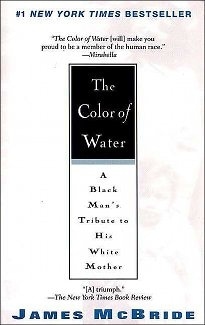
The Color of Water: A Black Man’s Tribute to His White Mother, is the autobiography and memoir of James McBride first published in 1995; it is also a tribute to his mother, whom he calls Mommy, or Ma. The chapters alternate between James McBride’s descriptions of his early life and first-person accounts of his mother Ruth’s life, mostly taking place before her son was born. McBride depicts the conflicting emotions that he endured as he struggled to discover who he truly was, as his mother narrates the hardships that she had to overcome as a white, Jewish woman who chose to marry a black man in 1942.
Read More About The Color of Water / Source
The Count of Monte Cristo
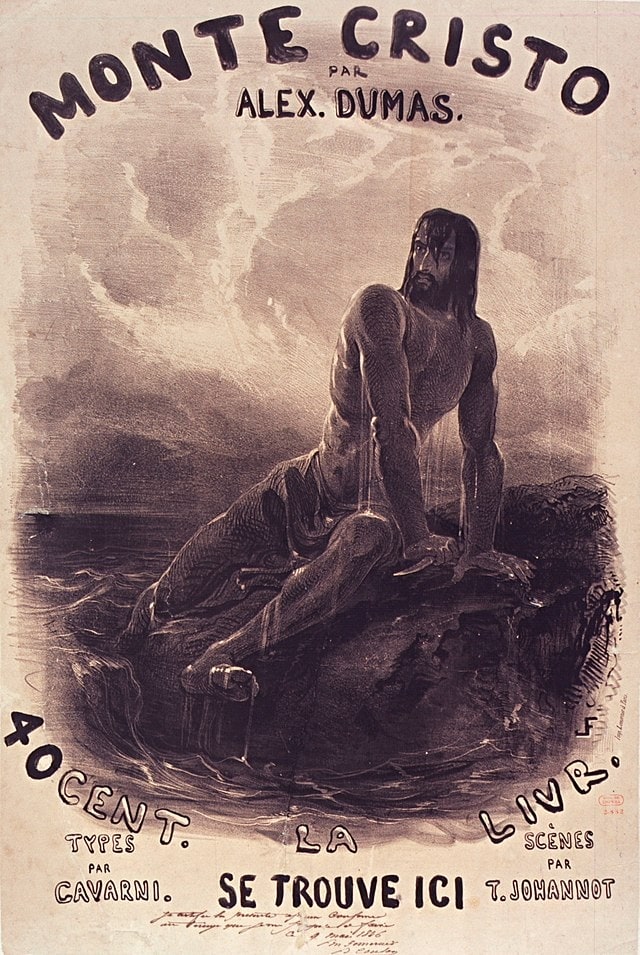
The Count of Monte Cristo (French: Le Comte de Monte-Cristo) is an adventure novel written by French author Alexandre Dumas (père) completed in 1844. It is one of the author’s more popular works, along with The Three Musketeers.
The story takes place in France, Italy, and islands in the Mediterranean during the historical events of 1815–1839: the era of the Bourbon Restoration through the reign of Louis-Philippe of France. It begins on the day that Napoleon left his first island of exile, Elba, beginning the Hundred Days period when Napoleon returned to power. The historical setting is a fundamental element of the book, an adventure story centrally concerned with themes of hope, justice, vengeance, mercy, and forgiveness. It centers on a man who is wrongfully imprisoned, escapes from jail, acquires a fortune, and sets about exacting revenge on those responsible for his imprisonment.
Before he can marry his fiancée Mercédès, Edmond Dantès, a nineteen-year-old Frenchman, and first mate of the Pharaon, is falsely accused of treason, arrested, and imprisoned without trial in the Château d’If, a grim island fortress off Marseille. A fellow prisoner, Abbé Faria, correctly deduces that his jealous rival Fernand Mondego, envious crewmate Danglars, and double-dealing magistrate De Villefort turned him in. Faria inspires his escape and guides him to a fortune in treasure. As the powerful and mysterious Count of Monte Cristo (Italy), Dantès arrives from the Orient to enter the fashionable Parisian world of the 1830s and avenge himself on the men who conspired to destroy him.
The book is considered a literary classic today. According to Lucy Sante, “The Count of Monte Cristo has become a fixture of Western civilization’s literature, as inescapable and immediately identifiable as Mickey Mouse, and the story of Little Red Riding Hood.”
Read More About The Count of Monte Cristo / Source
The Curious Incident of the Dog in the Night-Time
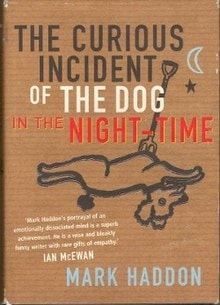
The Curious Incident of the Dog in the Night-Time is a 2003 mystery novel by British writer Mark Haddon. Its title refers to an observation by the fictional detective Sherlock Holmes (created by Arthur Conan Doyle) in the 1892 short story “The Adventure of Silver Blaze”. Haddon and The Curious Incident won the Whitbread Book Awards for Best Novel and Book of the Year, the Commonwealth Writers’ Prize for Best First Book, and the Guardian Children’s Fiction Prize. Unusually, it was published simultaneously in separate editions for adults and children.The novel is narrated in the first-person perspective by Christopher John Francis Boone, a 15-year-old boy who is described as “a mathematician with some behavioural difficulties” living in Swindon, Wiltshire. Although Christopher’s condition is not stated, the book’s blurb refers to Asperger syndrome (which today would be described as an autism spectrum disorder), high-functioning autism, or savant syndrome. In July 2009, Haddon wrote on his blog that “The Curious Incident is not a book about Asperger’s…if anything it’s a novel about difference, about being an outsider, about seeing the world in a surprising and revealing way. The book is not specifically about any specific disorder”, and that he, Haddon, is not an expert on autism spectrum or Asperger syndrome.The book uses prime numbers to number the chapters, rather than the conventional successive numbers. Originally written in English, it has been translated into 36 additional languages.
Read More About The Curious Incident of the Dog in the Night-Time / Source
The Death of Artemio Cruz
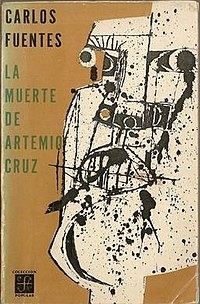
The Death of Artemio Cruz (Spanish: La muerte de Artemio Cruz, pronounced [aɾˈtemjo ˈkɾus]) is a novel written in 1962 by Mexican writer Carlos Fuentes. It is considered to be a milestone in the Latin American Boom.
Read More About The Death of Artemio Cruz / Source
The Demon-Haunted World
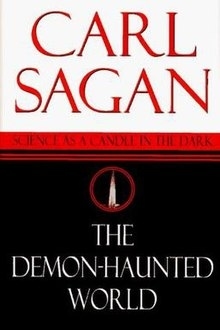
The Demon-Haunted World: Science as a Candle in the Dark is a 1995 book by the astrophysicist Carl Sagan and co-authored by Ann Druyan, in which the authors aim to explain the scientific method to laypeople and to encourage people to learn critical and skeptical thinking. They explain methods to help distinguish between ideas that are considered valid science and those that can be considered pseudoscience. Sagan states that when new ideas are offered for consideration, they should be tested by means of skeptical thinking and should stand up to rigorous questioning.
Read More About The Demon-Haunted World / Source
The Elements of Style
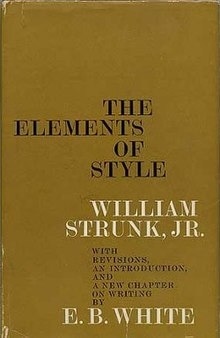
The Elements of Style is an American English writing style guide in numerous editions. The original was composed by William Strunk Jr. in 1918, and published by Harcourt in 1920, comprising eight “elementary rules of usage”, ten “elementary principles of composition”, “a few matters of form”, a list of 49 “words and expressions commonly misused”, and a list of 57 “words often misspelled”. E. B. White greatly enlarged and revised the book for publication by Macmillan in 1959. That was the first edition of the so-called Strunk & White, which Time named in 2011 as one of the 100 best and most influential books written in English since 1923.
Read More About The Elements of Style / Source
The Fault in Our Stars
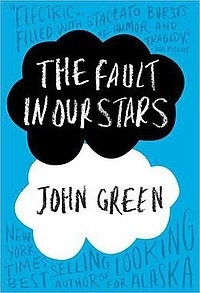
The Fault in Our Stars is a novel by John Green. It is his fourth solo novel, and sixth novel overall. It was published on January 10, 2012. The title is inspired by Act 1, Scene 2 of Shakespeare’s play Julius Caesar, in which the nobleman Cassius says to Brutus: “The fault, dear Brutus, is not in our stars, / But in ourselves, that we are underlings.” The story is narrated by Hazel Grace Lancaster, a 16-year-old girl with thyroid cancer that has affected her lungs. Hazel is forced by her parents to attend a support group where she subsequently meets and falls in love with 17-year-old Augustus Waters, an ex-basketball player, amputee, and survivor of osteosarcoma.
An American feature film adaptation of the same name as the novel directed by Josh Boone and starring Shailene Woodley, Ansel Elgort, and Nat Wolff was released on June 6, 2014. A Hindi feature film adaptation of the novel, titled Dil Bechara, which was directed by Mukesh Chhabra and starring Sushant Singh Rajput, Sanjana Sanghi, Saswata Chatterjee, Swastika Mukherjee and Saif Ali Khan was released on July 24, 2020, on Disney+ Hotstar. Both the book and its American film adaptation were met with strong critical and commercial success.
Read More About The Fault in Our Stars / Source
The Fellowship of the Ring
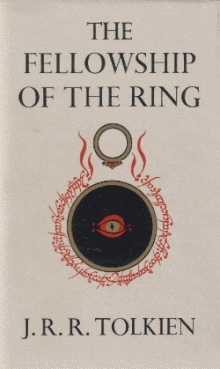
The Fellowship of the Ring is the first of three volumes of the epic novel The Lord of the Rings by the English author J. R. R. Tolkien. It is followed by The Two Towers and The Return of the King. It takes place in the fictional universe of Middle-earth, and was originally published on 29 July 1954 in the United Kingdom.
The volume consists of a foreword, in which the author discusses his writing of The Lord of the Rings, a prologue titled “Concerning Hobbits, and other matters”, and the main narrative in Book I and Book II.
Read More About The Fellowship of the Ring / Source
The Great Gatsby
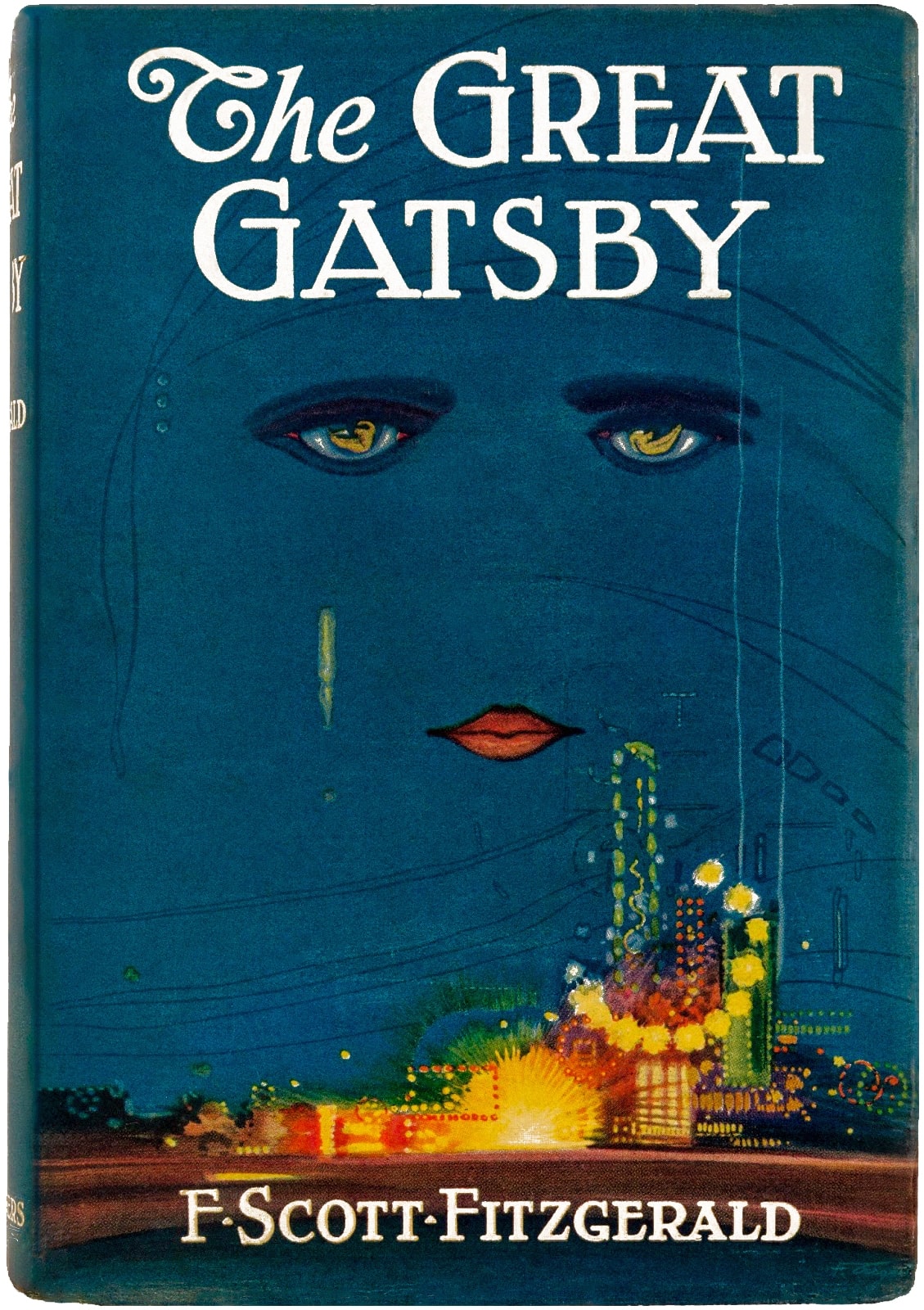
The Great Gatsby is a 1925 novel by American writer F. Scott Fitzgerald. Set in the Jazz Age on Long Island, near New York City, the novel depicts first-person narrator Nick Carraway’s interactions with mysterious millionaire Jay Gatsby and Gatsby’s obsession to reunite with his former lover, Daisy Buchanan.
The novel was inspired by a youthful romance Fitzgerald had with socialite Ginevra King, and the riotous parties he attended on Long Island’s North Shore in 1922. Following a move to the French Riviera, Fitzgerald completed a rough draft of the novel in 1924. He submitted it to editor Maxwell Perkins, who persuaded Fitzgerald to revise the work over the following winter. After making revisions, Fitzgerald was satisfied with the text, but remained ambivalent about the book’s title and considered several alternatives. Painter Francis Cugat’s cover art greatly impressed Fitzgerald, and he incorporated aspects of it into the novel.
After its publication by Scribner’s in April 1925, The Great Gatsby received generally favorable reviews, though some literary critics believed it did not equal Fitzgerald’s previous efforts. Compared to his earlier novels, Gatsby was a commercial disappointment, selling fewer than 20,000 copies by October, and Fitzgerald’s hopes of a monetary windfall from the novel were unrealized. When the author died in 1940, he believed himself to be a failure and his work forgotten.
During World War II, the novel experienced an abrupt surge in popularity when the Council on Books in Wartime distributed free copies to American soldiers serving overseas. This new-found popularity launched a critical and scholarly re-examination, and the work soon became a core part of most American high school curricula and a part of American popular culture. Numerous stage and film adaptations followed in the subsequent decades.
Gatsby continues to attract popular and scholarly attention. Contemporary scholars emphasize the novel’s treatment of social class, inherited versus self-made wealth, gender, race, and environmentalism, and its cynical attitude towards the American Dream. One persistent item of criticism is an allegation of antisemitic stereotyping. The Great Gatsby is widely considered to be a literary masterwork and a contender for the title of the Great American Novel.
Read More About The Great Gatsby / Source
The Handmaid's Tale
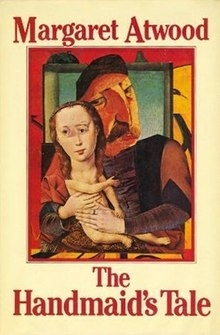
The Handmaid’s Tale is a futuristic dystopian novel by Canadian author Margaret Atwood, published in 1985. It is set in a near-future New England, in a strongly patriarchal, white supremacist, totalitarian theonomic/theocratic state, known as the Republic of Gilead, which has overthrown the United States government. The central character and narrator is a woman named Offred, one of the group known as “handmaids”, who are forcibly assigned to produce children for the “commanders” — the ruling class of men in Gilead.
The novel explores themes of subjugated women in a patriarchal society, loss of female agency and individuality, suppression of women’s reproductive rights, and the various means by which women resist and attempt to gain individuality and independence. The novel’s title echoes the component parts of Geoffrey Chaucer’s The Canterbury Tales, which is a series of connected stories (such as “The Merchant’s Tale” and “The Parson’s Tale”). It is also an allusion to the tradition of fairy tales where the central character tells her story.The Handmaid’s Tale won the 1985 Governor General’s Award and the first Arthur C. Clarke Award in 1987; it was also nominated for the 1986 Nebula Award, the 1986 Booker Prize, and the 1987 Prometheus Award. The book has been adapted into a 1990 film, a 2000 opera, a 2017 television series, and other media.
The ebook version was published by Houghton Mifflin Harcourt.A sequel novel, The Testaments, was published in 2019.
Read More About The Handmaid's Tale / Source
The Hitchhiker's Guide to the Galaxy
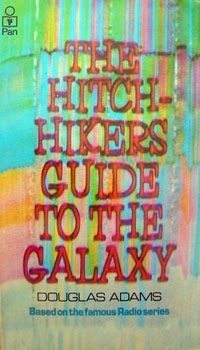
The Hitchhiker’s Guide to the Galaxy is the first book in the Hitchhiker’s Guide to the Galaxy comedy science fiction “trilogy of six books” by Douglas Adams. The novel is an adaptation of the first four parts of Adams’s radio series of the same name, centering on the adventures of the only man to survive the destruction of Earth; while roaming outer space, he comes to learn the truth behind Earth’s existence. The novel was first published in London on 12 October 1979. It sold 250,000 copies in the first three months.The namesake of the novel is The Hitchhiker’s Guide to the Galaxy, a fictional guide book for hitchhikers (inspired by the Hitch-hiker’s Guide to Europe) written in the form of an encyclopaedia.
Read More About The Hitchhiker's Guide to the Galaxy / Source
The Hobbit
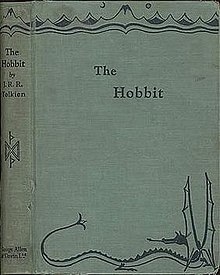
The Hobbit, or There and Back Again is a children’s fantasy novel by English author J. R. R. Tolkien. It was published in 1937 to wide critical acclaim, being nominated for the Carnegie Medal and awarded a prize from the New York Herald Tribune for best juvenile fiction. The book remains popular and is recognized as a classic in children’s literature.
The Hobbit is set within Tolkien’s fictional universe and follows the quest of home-loving Bilbo Baggins, the titular hobbit, to win a share of the treasure guarded by a dragon named Smaug. Bilbo’s journey takes him from his light-hearted, rural surroundings into more sinister territory.
The story is told in the form of an episodic quest, and most chapters introduce a specific creature or type of creature of Tolkien’s geography. Bilbo gains a new level of maturity, competence, and wisdom by accepting the disreputable, romantic, fey, and adventurous sides of his nature and applying his wits and common sense. The story reaches its climax in the Battle of Five Armies, where many of the characters and creatures from earlier chapters re-emerge to engage in conflict.
Personal growth and forms of heroism are central themes of the story, along with motifs of warfare. These themes have led critics to view Tolkien’s own experiences during World War I as instrumental in shaping the story. The author’s scholarly knowledge of Germanic philology and interest in mythology and fairy tales are often noted as influences.
The publisher was encouraged by the book’s critical and financial success and, therefore, requested a sequel. As Tolkien’s work progressed on its successor, The Lord of the Rings, he made retrospective accommodations for it in The Hobbit. These few but significant changes were integrated into the second edition. Further editions followed with minor emendations, including those reflecting Tolkien’s changing concept of the world into which Bilbo stumbled.
The work has never been out of print. Its ongoing legacy encompasses many adaptations for stage, screen, radio, board games, and video games. Several of these adaptations have received critical recognition on their own merits.
Read More About The Hobbit / Source
The Immortals of Meluha
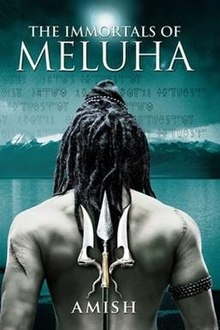
The Immortals of Meluha is the first book of Amish Tripathi, first book of Amishverse, and also the first book of Shiva Trilogy. The story is set in the land of Meluha and starts with the arrival of the Shiva. The Meluhans believe that Shiva is their fabled saviour Neelkanth. Shiva decides to help the Meluhans in their war against the Chandravanshis, who had joined forces with a cursed Nagas; however, during his journey and the fight that ensues, Shiva learns how his choices actually reflect who he aspires to be and how they lead to dire consequences.
Tripathi had initially decided to write a book on the philosophy of evil, but was dissuaded by his family members, so he decided to write a book on Shiva, one of the Hindu Gods. He decided to base his story on a radical idea that all Gods were once human beings; it was their deeds in the human life that made them famous as Gods. After finishing writing The Immortals of Meluha, Tripathi faced rejection from many publication houses. Ultimately when his agent decided to publish the book himself, Tripathi embarked on a promotional campaign. It included posting a live-action video on YouTube, and making the first chapter of the book available as a free digital download, to entice readers.
Ultimately, when the book was published in February 2010, it went on to become a huge commercial success. It had to be reprinted a number of times to keep up with the demand. Tripathi even changed his publisher and hosted a big launch for the book in Delhi. It was critically appreciated by some Indian reviewers, others noted that Tripathi’s writing tended to lose focus at some parts of the story. With the launch of the third installment, titled The Oath of the Vayuputras, in February 2013, the Shiva Trilogy has become the fastest selling book series in the history of Indian publishing, with 2.5 million copies in print and over ₹60 crore (US$7.9 million) in sales.
Read More About The Immortals of Meluha / Source
The Intelligent Investor
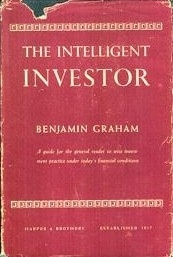
The Intelligent Investor by Benjamin Graham, first published in 1949, is a widely acclaimed book on value investing. The book provides strategies on how to successfully use value investing in the stock market. Historically, the book has been one of the most popular books on investing and Graham’s legacy remains.
Read More About The Intelligent Investor / Source
The Line of Beauty
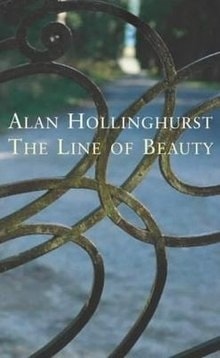
The Line of Beauty is a 2004 Man Booker Prize-winning novel by Alan Hollinghurst.
Read More About The Line of Beauty / Source
The Long Goodbye
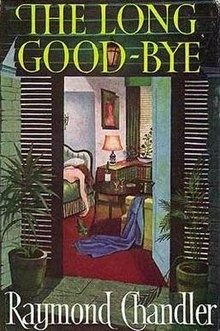
The Long Goodbye is a novel by Raymond Chandler, published in 1953, his sixth novel featuring the private investigator Philip Marlowe. Some critics consider it inferior to The Big Sleep or Farewell, My Lovely, but others rank it as the best of his work. Chandler, in a letter to a friend, called the novel “my best book”.The novel is notable for using hard-boiled detective fiction as a vehicle for social criticism and for including autobiographical elements from Chandler’s life. In 1955, the novel received the Edgar Award for Best Novel. It was later adapted as a 1973 film of the same name, updated to 1970s Los Angeles and starring Elliott Gould.
Read More About The Long Goodbye / Source
The Lovely Bones

The Lovely Bones is a 2002 novel by American writer Alice Sebold. It is the story of a teenage girl who, after being raped and murdered, watches from her personal Heaven as her family and friends struggle to move on with their lives while she comes to terms with her own death. The novel received critical praise and became an instant bestseller. A film adaptation, directed by Peter Jackson, who personally purchased the rights, was released in 2009. The novel was also later adapted as a play of the same name, which premiered in England in 2018.
Read More About The Lovely Bones / Source
The Millionaire Next Door
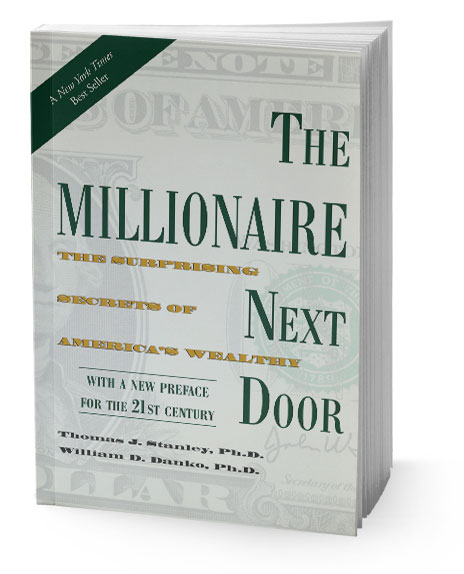
The Millionaire Next Door: The Surprising Secrets of America’s Wealthy (ISBN 0-671-01520-6) is a 1996 book by Thomas J. Stanley and William D. Danko. The book is a compilation of research done by the two authors in the profiles of American millionaires.
The authors compare the behaviour of those they call “UAWs” (Under Accumulators of Wealth) and those who are “PAWs” (Prodigious Accumulators of Wealth). Their findings, that millionaires are disproportionately clustered in middle-class and blue-collar neighborhoods and not in more affluent or white-collar communities, came as a surprise to the authors who anticipated the contrary. Stanley and Danko’s book explains why, noting that high-income white-collar professionals are more likely to devote their income to luxury goods or status items, thus neglecting savings and investments.
Read More About The Millionaire Next Door / Source
The Monk Who Sold His Ferrari
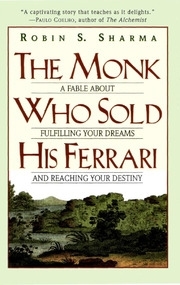
The Monk Who Sold His Ferrari is a self-help book by Robin Sharma, a writer and motivational speaker. The book is a business fable derived from Sharma’s personal experiences after leaving his career as a litigation lawyer at the age of 25.
Read More About The Monk Who Sold His Ferrari / Source
The Rats
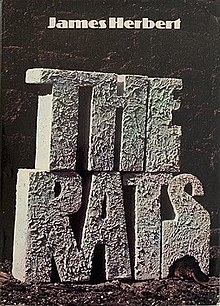
The Rats (1974) is a horror novel by British writer James Herbert. This was Herbert’s first novel and included graphic depictions of death and mutilation. A film adaptation was made in 1982, called Deadly Eyes. A 1985 adventure game for the Commodore 64 and ZX Spectrum based on the book was published by Hodder & Stoughton Ltd and produced by GXT (Five Ways Software). The Rats was followed by three sequels, Lair (1979), Domain (1984) and The City (1993) (the last one was a graphic novel). All three books were sold as a trilogy and were very well received by the public and horror fans.
Read More About The Rats / Source
The Shining

The Shining is a 1977 horror novel by American author Stephen King. It is King’s third published novel and first hardback bestseller; its success firmly established King as a preeminent author in the horror genre. The setting and characters are influenced by King’s personal experiences, including both his visit to The Stanley Hotel in 1974 and his struggle with alcoholism. The novel was adapted into a 1980 film of the same name. The book was followed by a sequel, Doctor Sleep, published in 2013, which was adapted into a film of the same name.
The Shining centers on the life of Jack Torrance, a struggling writer and recovering alcoholic who accepts a position as the off-season caretaker of the historic Overlook Hotel in the Colorado Rockies. His family accompanies him on this job, including his young son Danny Torrance, who possesses “the shining”, an array of psychic abilities that allow Danny to see the hotel’s horrific past. Soon, after a winter storm leaves them snowbound, the supernatural forces inhabiting the hotel influence Jack’s sanity, leaving his wife and son in incredible danger.
Read More About The Shining / Source
The Sound of the Mountain
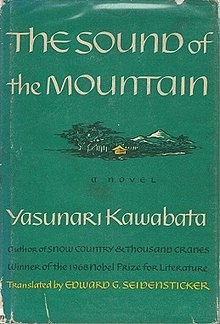
The Sound of the Mountain (Japanese: 山の音, Hepburn: Yama no oto) is a novel by Japanese writer Yasunari Kawabata, serialized between 1949 and 1954, and first published as a standalone book in 1954 by Chikuma Shobō, Tokyo.
Read More About The Sound of the Mountain / Source
The Tale of Genji
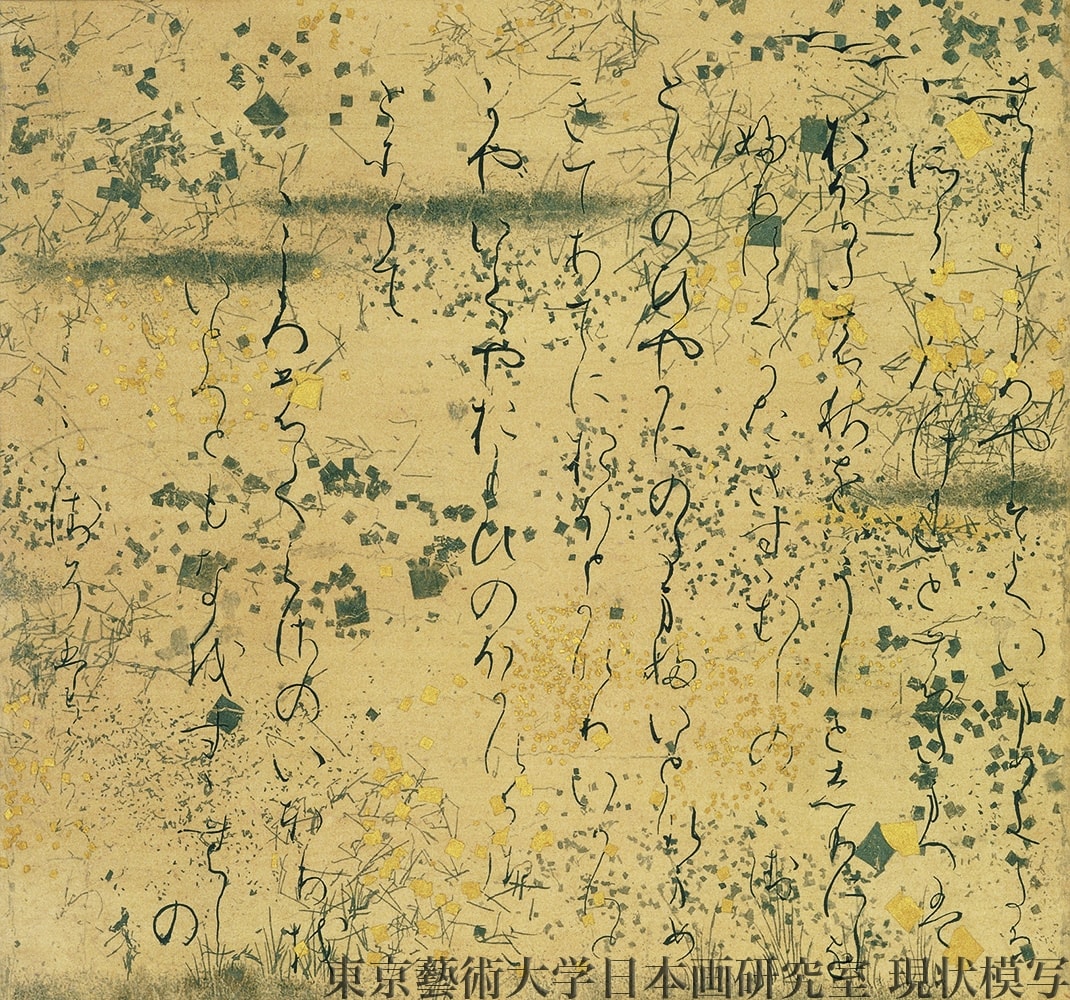
The Tale of Genji (源氏物語, Genji monogatari, pronounced [ɡeɲdʑi monoɡaꜜtaɾi]) is a classic work of Japanese literature written in the early 11th century by the noblewoman and lady-in-waiting Murasaki Shikibu. The original manuscript, created around the peak of the Heian period, no longer exists. It was made in “concertina” or orihon style: several sheets of paper pasted together and folded alternately in one direction then the other.
The work is a unique depiction of the lifestyles of high courtiers during the Heian period. It is written in archaic language and a poetic and complex style that make it unreadable to the average Japanese speaker without specialized study. It was not until the early 20th century that Genji was translated into modern Japanese by the poet Akiko Yosano. The first English translation was attempted in 1882 by Suematsu Kencho, but was of poor quality and incomplete.
The work recounts the life of Hikaru Genji, or “Shining Genji”, who is the son of an ancient Japanese emperor (known to readers as Emperor Kiritsubo) and a low-ranking concubine called Kiritsubo Consort. For political reasons, the emperor removes Genji from the line of succession, demoting him to a commoner by giving him the surname Minamoto, and he pursues a career as an imperial officer. The tale concentrates on Genji’s romantic life and describes the customs of the aristocratic society of the time. It may be the world’s first novel, the first psychological novel, and the first novel still to be considered a classic particularly in the context of Japanese literature.
Read More About The Tale of Genji / Source
The Westing Game

The Westing Game is a mystery book written by Ellen Raskin and published by Dutton in 1978. It won the Newbery Medal recognizing the year’s most distinguished contribution to American children’s literature.The Westing Game was ranked number nine all-time among children’s novels in a survey published by School Library Journal in 2012. It has been adapted as the 1997 feature film Get a Clue (also distributed as The Westing Game).
Read More About The Westing Game / Source
The Wind-Up Bird Chronicle
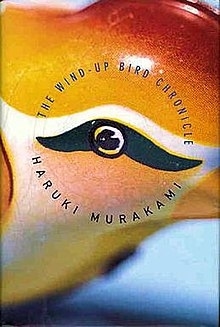
The Wind-Up Bird Chronicle (ねじまき鳥クロニクル, Nejimakidori Kuronikuru) is a novel published in 1994–1995 by Japanese author Haruki Murakami. The American translation and its British adaptation, dubbed the “only official translations” (English), are by Jay Rubin and were first published in 1997. For this novel, Murakami received the Yomiuri Literary Award, which was awarded to him by one of his harshest former critics, Kenzaburō Ōe.
Read More About The Wind-Up Bird Chronicle / Source
The World According to Garp
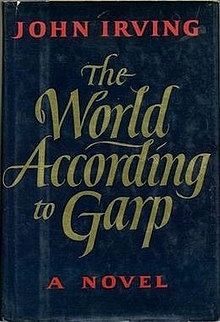
The World According to Garp is John Irving’s fourth novel, about a man, born out of wedlock to a feminist leader, who grows up to be a writer. Published in 1978, the book was a bestseller for several years. It was a finalist for the National Book Award for Fiction in 1979, and its first paperback edition won the Award the following year.A movie adaptation of the novel starring Robin Williams was released in 1982, with a screenplay written by Steve Tesich.
BBC Radio 4’s Classic Serial broadcast a three-part adaptation of the novel by Linda Marshall Griffiths in January 2014. The production was directed by Nadia Molinari and featured Miranda Richardson as Jenny, Lee Ingleby as Garp, Jonathan Keeble as Roberta and Lyndsey Marshal as Helen.On 3 November 2015, Irving revealed that he’d been approached by HBO and Warner Brothers to reconstruct The World According to Garp as a miniseries. He described the project as being in the early stages.According to the byline of a self-penned, 20 February 2017 essay for The Hollywood Reporter, Irving completed his teleplay for the five-part series based on The World According to Garp.
Read More About The World According to Garp / Source
Their Eyes Were Watching God
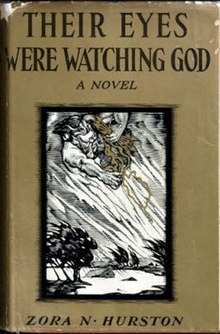
Their Eyes Were Watching God is a 1937 novel by American writer Zora Neale Hurston. It is considered a classic of the Harlem Renaissance, and Hurston’s best known work. The novel explores main character Janie Crawford’s “ripening from a vibrant, but voiceless, teenage girl into a woman with her finger on the trigger of her own destiny”.Set in central and southern Florida in the early 20th century, the novel was initially poorly received. Since the late 20th century, it has been regarded as influential to both African-American literature and women’s literature. TIME included the novel in its 2005 list of the 100 best English-language novels published since 1923.
Read More About Their Eyes Were Watching God / Source
Think and Grow Rich
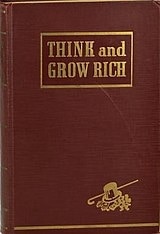
Think and Grow Rich is a book written by Napoleon Hill in 1937 and promoted as a personal development and self-improvement book. He claimed to be inspired by a suggestion from business magnate and later-philanthropist Andrew Carnegie.First published during the Great Depression, the book has sold more than 15 million copiesIt remains the biggest seller of Napoleon Hill’s books. BusinessWeek magazine’s Best-Seller List ranked it the sixth best-selling paperback business book 70 years after it was published. Think and Grow Rich is listed in John C. Maxwell’s A Lifetime “Must Read” Books List.While the book’s title and much of the writing concerns increasing income, the author proclaims that his philosophy can help people succeed in any line of work, to do and be anything they can imagine.Think and Grow Rich is based on Hill’s earlier work The Law of Success, and is the result of more than twenty years of study of many individuals who had amassed personal fortunes.Hill studied their habits and drew some 16 “laws” to be applied to achieve success. Think and Grow Rich condenses them, providing the reader with 14 principles in the form of a “Philosophy of Achievement”.
Read More About Think and Grow Rich / Source
To Kill a Mockingbird
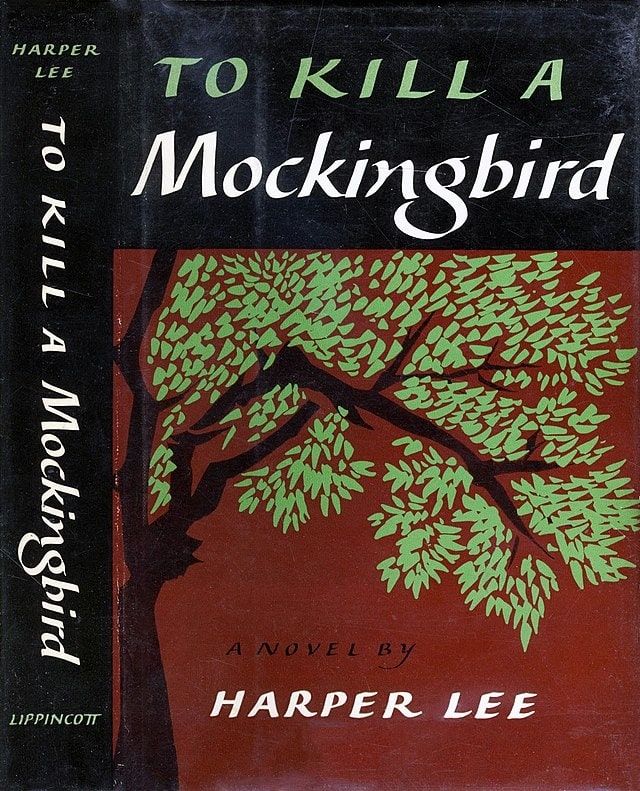
To Kill a Mockingbird is a novel by the American author Harper Lee. It was published in 1960 and was instantly successful. In the United States, it is widely read in high schools and middle schools. To Kill a Mockingbird has become a classic of modern American literature, winning the Pulitzer Prize. The plot and characters are loosely based on Lee’s observations of her family, her neighbors and an event that occurred near her hometown of Monroeville, Alabama, in 1936, when she was ten.
Despite dealing with the serious issues of rape and racial inequality, the novel is renowned for its warmth and humor. Atticus Finch, the narrator’s father, has served as a moral hero for many readers and as a model of integrity for lawyers. The historian Joseph Crespino explains, “In the twentieth century, To Kill a Mockingbird is probably the most widely read book dealing with race in America, and its main character, Atticus Finch, the most enduring fictional image of racial heroism.” As a Southern Gothic novel and Bildungsroman, the primary themes of To Kill a Mockingbird involve racial injustice and the destruction of innocence. Scholars have noted that Lee also addresses issues of class, courage, compassion, and gender roles in the Deep South. The book is widely taught in schools in the United States with lessons that emphasize tolerance and decry prejudice. Despite its themes, To Kill a Mockingbird has been subject to campaigns for removal from public classrooms, often challenged for its use of racial epithets. In 2006, British librarians ranked the book ahead of the Bible as one “every adult should read before they die”.Reaction to the novel varied widely upon publication. Despite the number of copies sold and its widespread use in education, literary analysis of it is sparse. Author Mary McDonough Murphy, who collected individual impressions of To Kill a Mockingbird by several authors and public figures, calls the book “an astonishing phenomenon”. It was adapted into an Academy Award-winning film in 1962 by director Robert Mulligan, with a screenplay by Horton Foote. Since 1990, a play based on the novel has been performed annually in Harper Lee’s hometown.
To Kill a Mockingbird was Lee’s only published book until Go Set a Watchman, an earlier draft of To Kill a Mockingbird, was published on July 14, 2015. Lee continued to respond to her work’s impact until her death in February 2016, although she had refused any personal publicity for herself or the novel since 1964.
Read More About To Kill a Mockingbird / Source
Valley of the Dolls
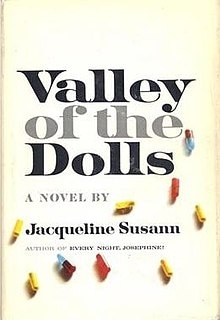
Valley of the Dolls is the first novel by American writer Jacqueline Susann. Published in 1966, the book was the biggest selling novel of its year. As of 2016, it has sold more than 31 million copies, making it one of the best-selling works in publishing history.
Read More About Valley of the Dolls / Source
That thing you do with your mouth
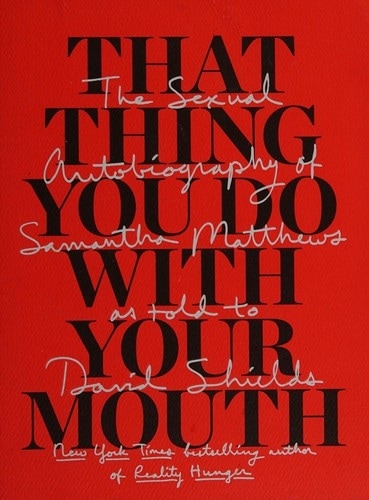
“In That Thing You Do With Your Mouth, actress and voice-over artist Samantha Matthews offers – in the form of an extended monologue, prompted and arranged by New York Times bestselling author (and Matthews’s cousin once removed) David Shields – a vivid investigation of her startling sexual history.
Read More About That thing you do with your mouth / Source




